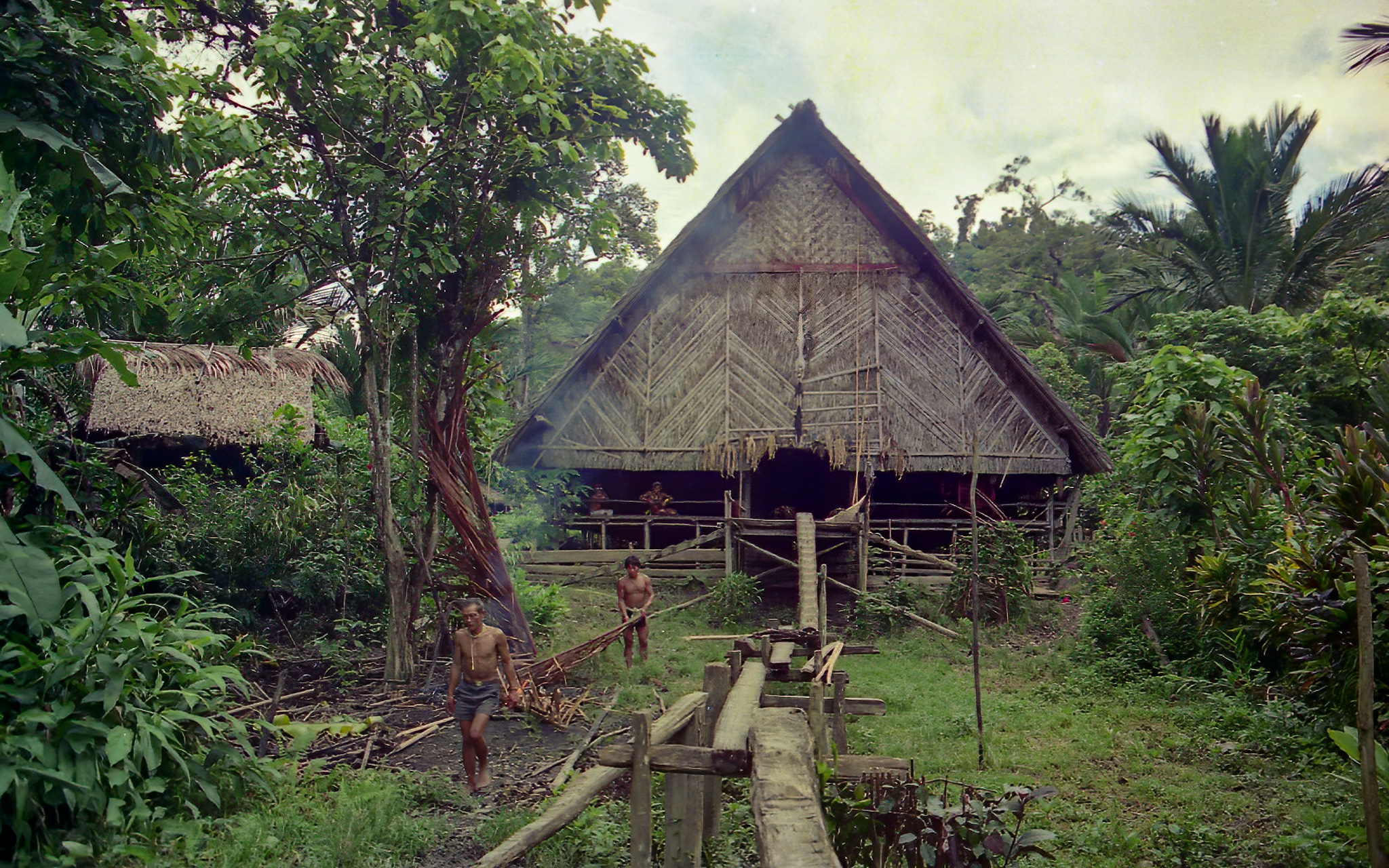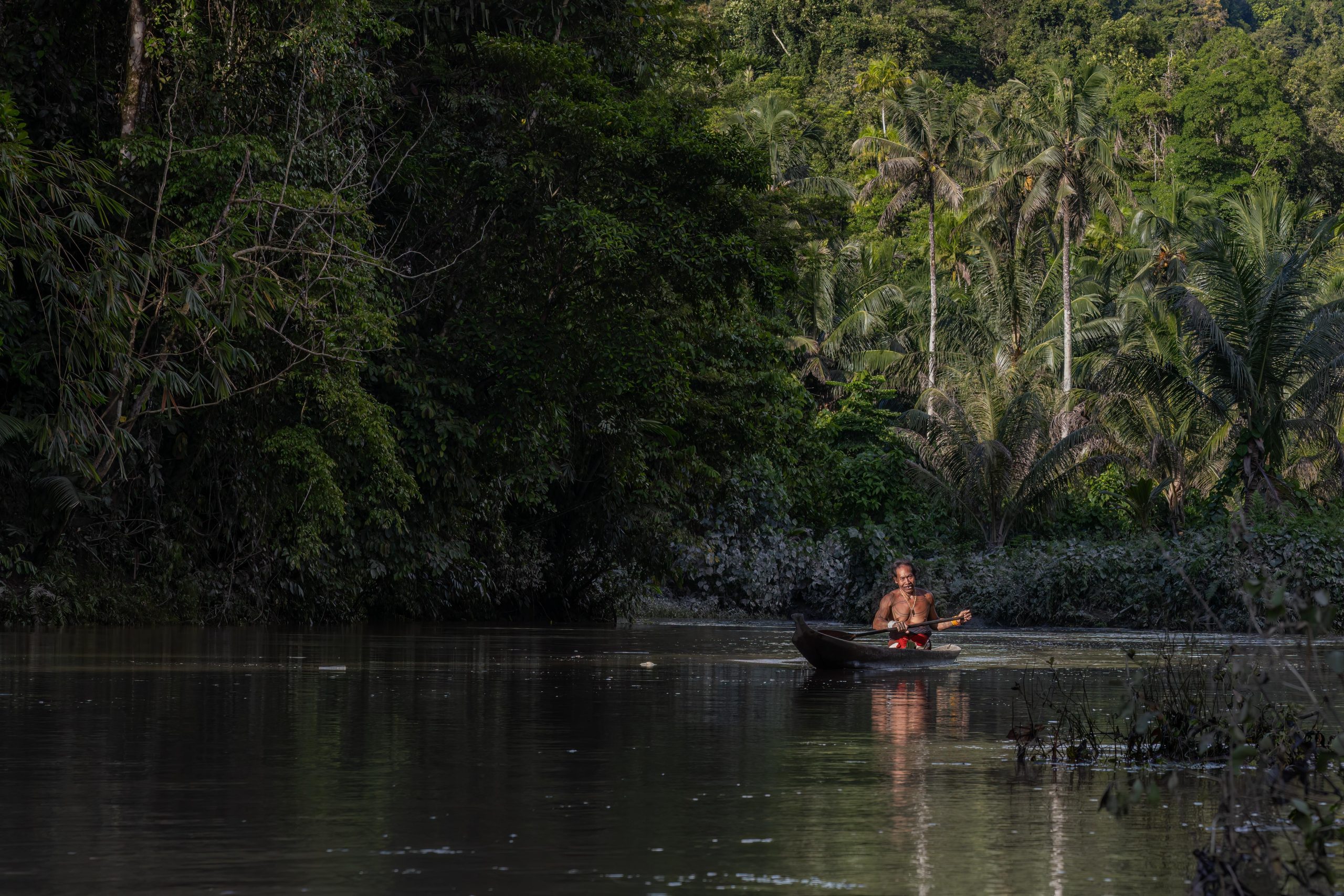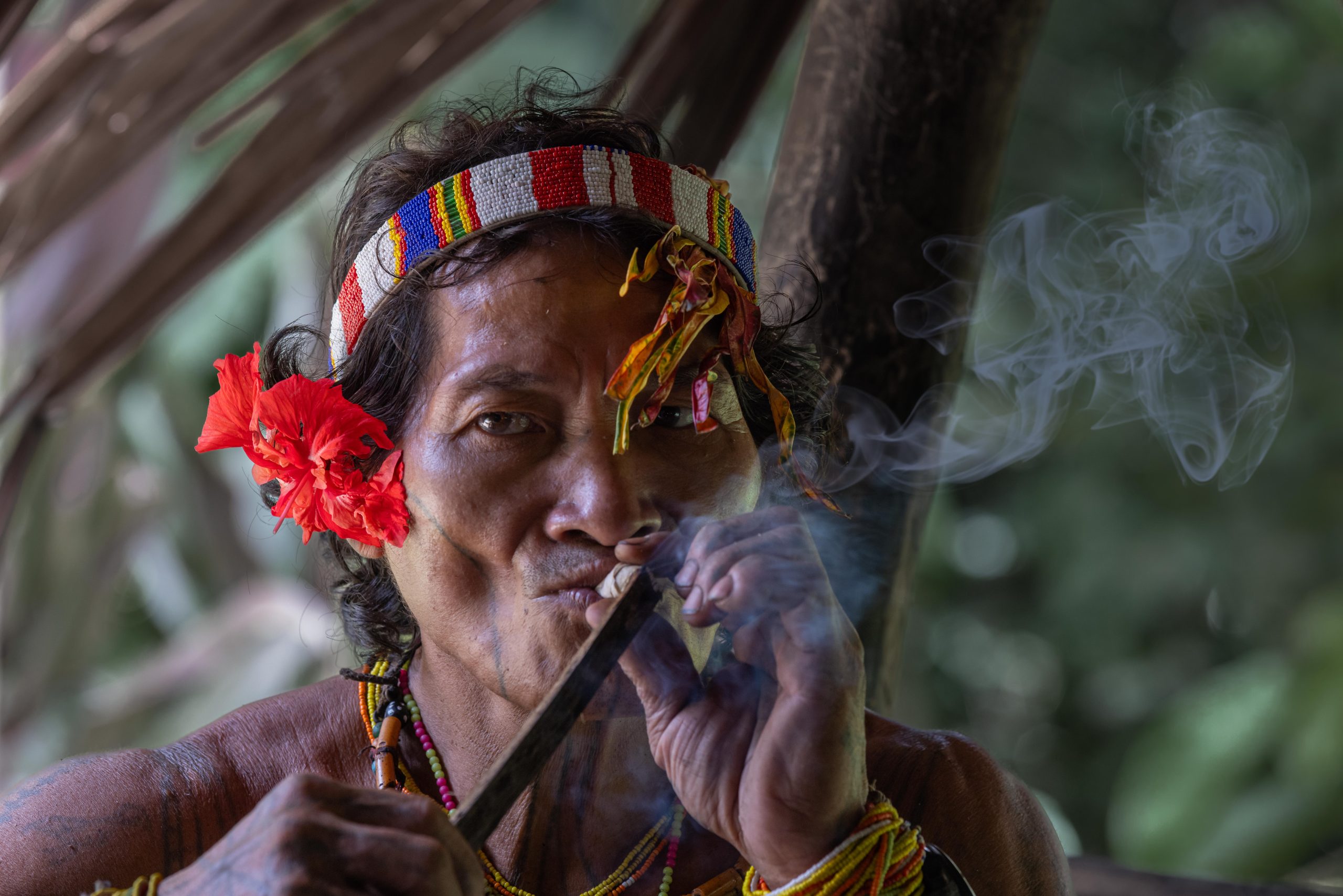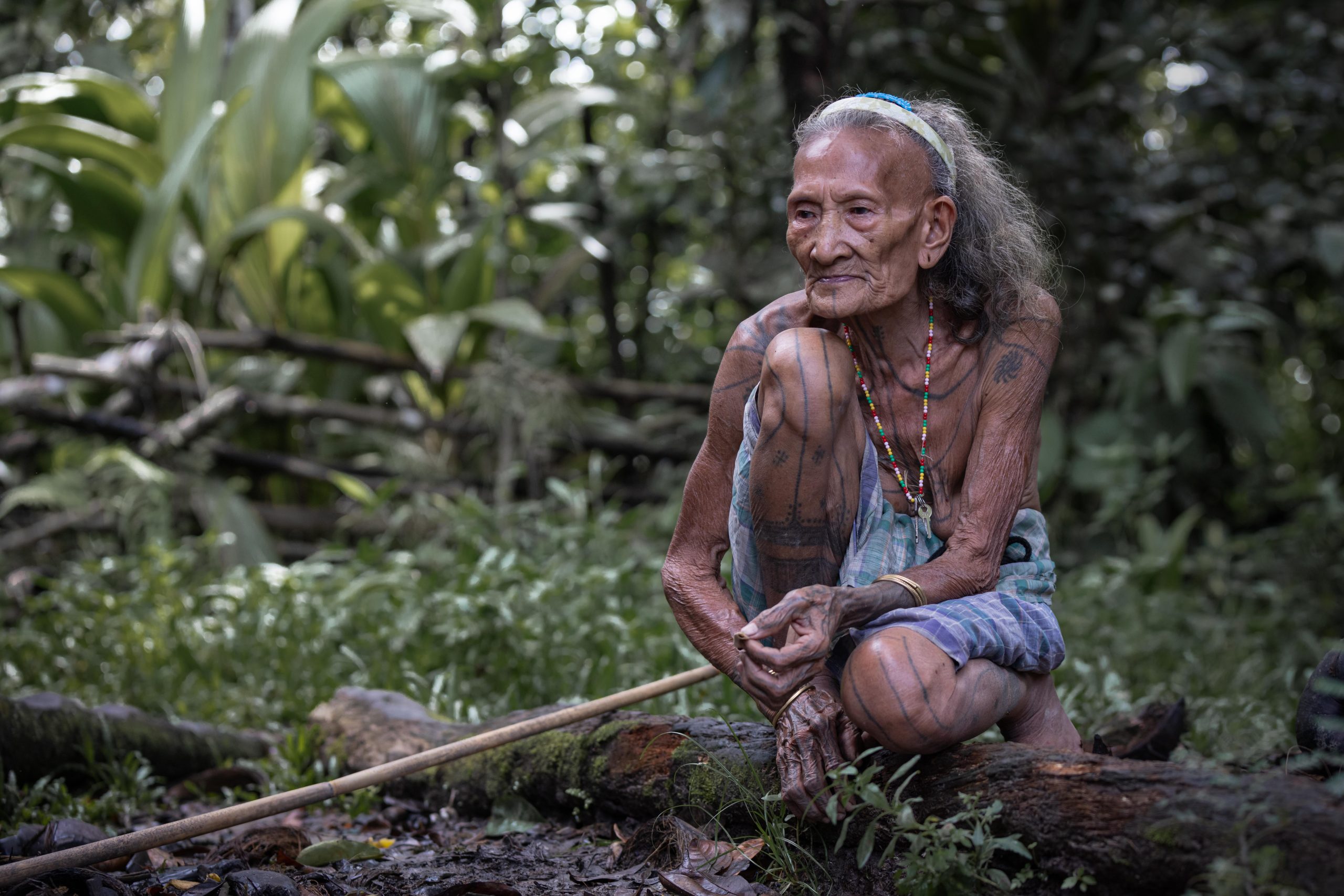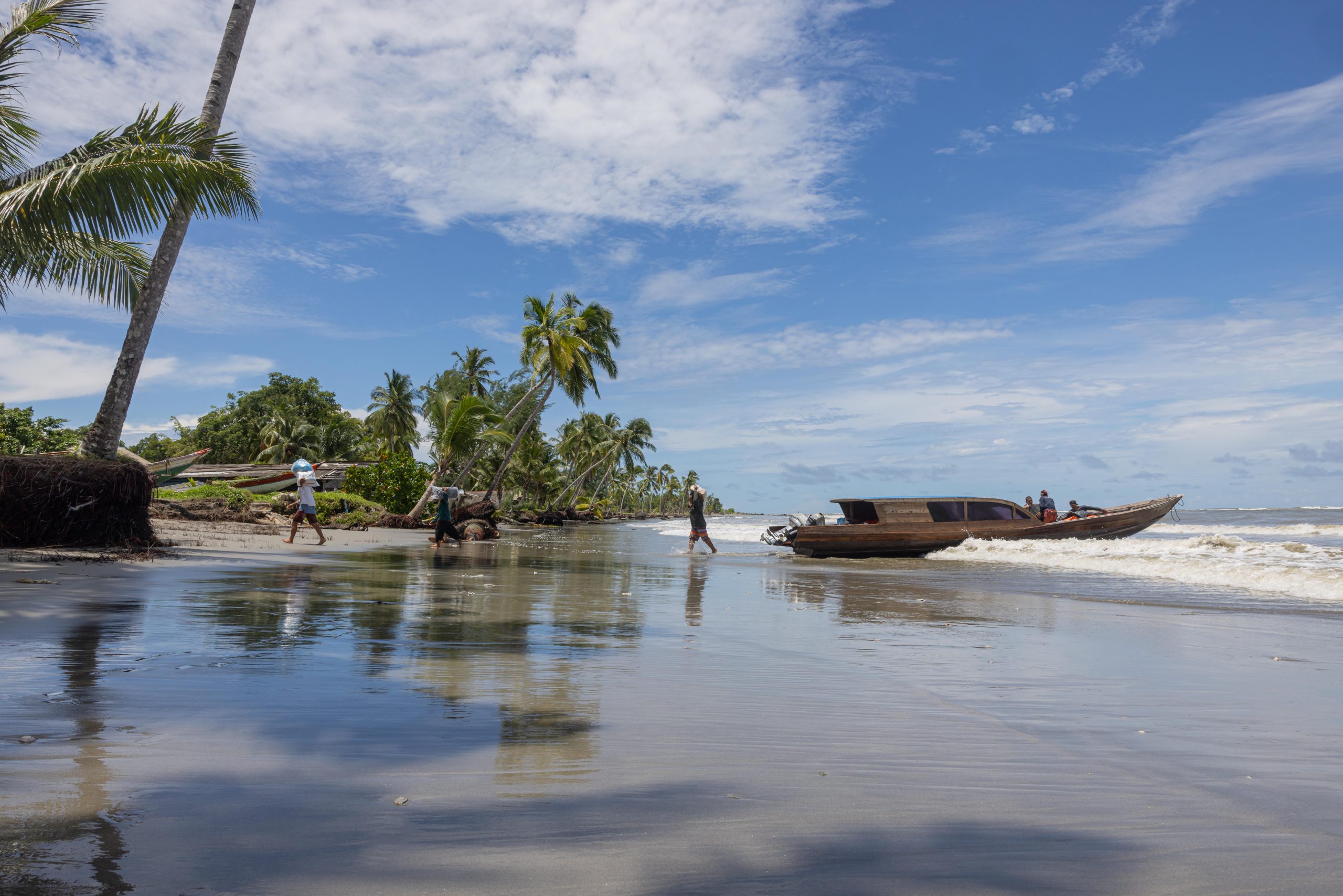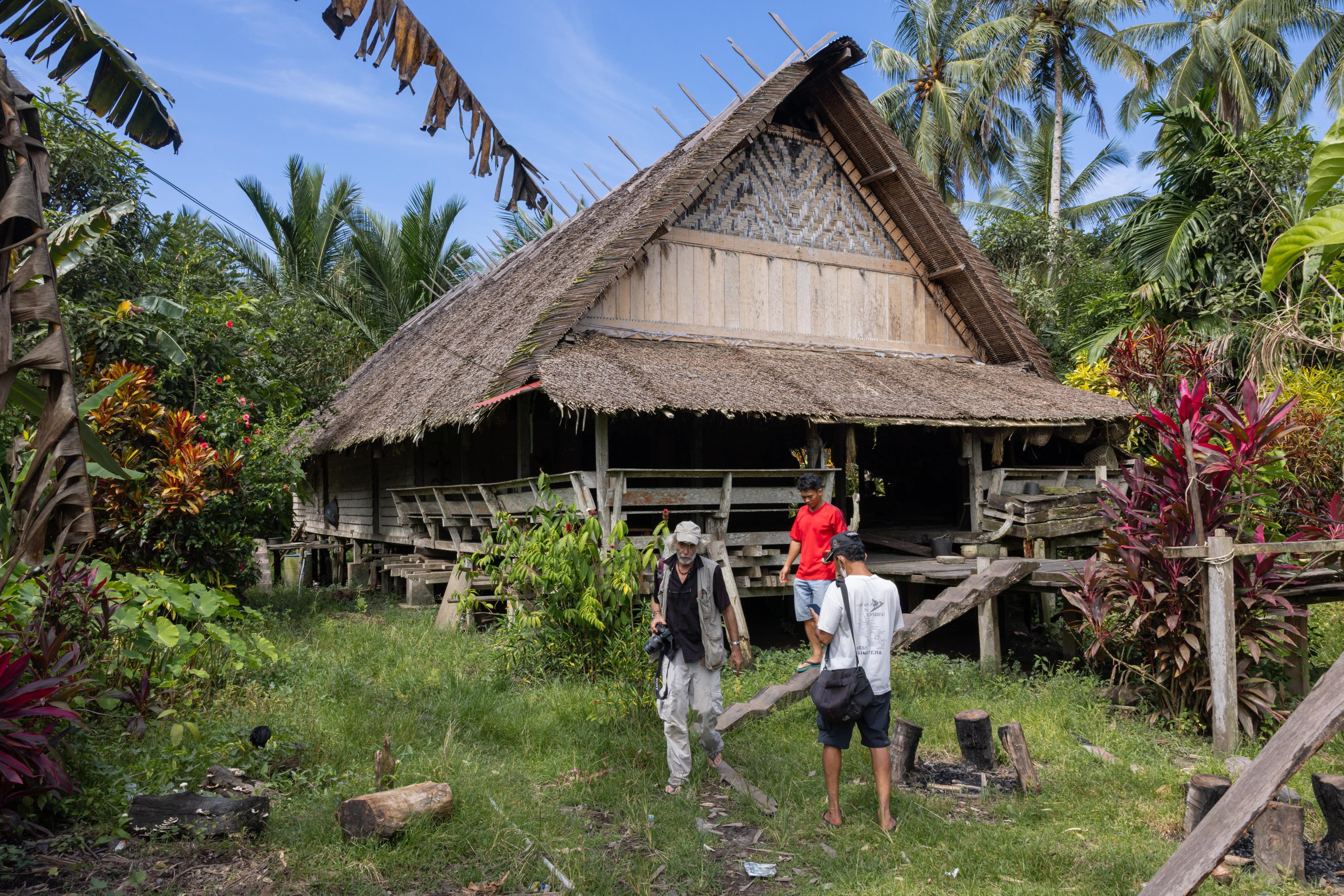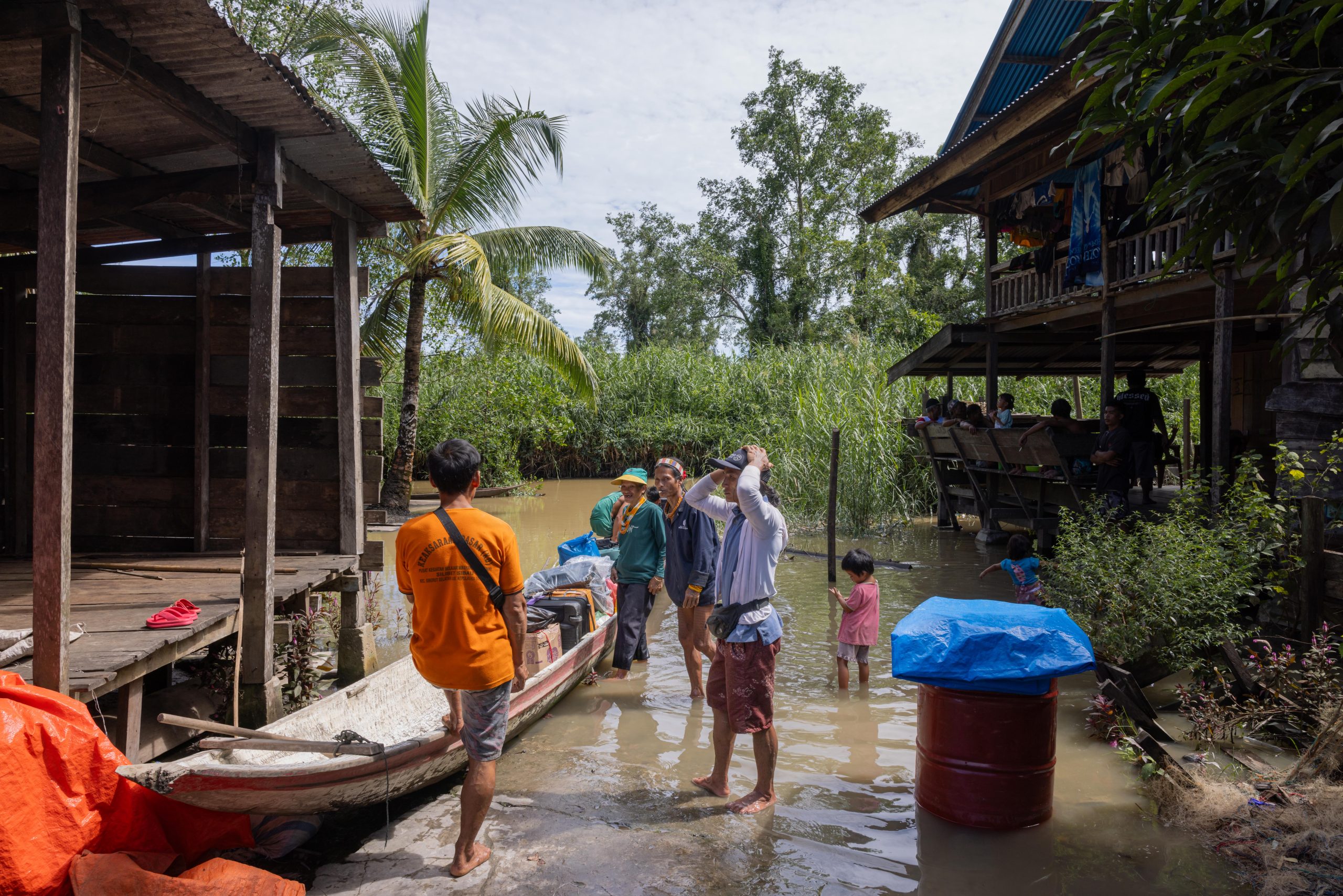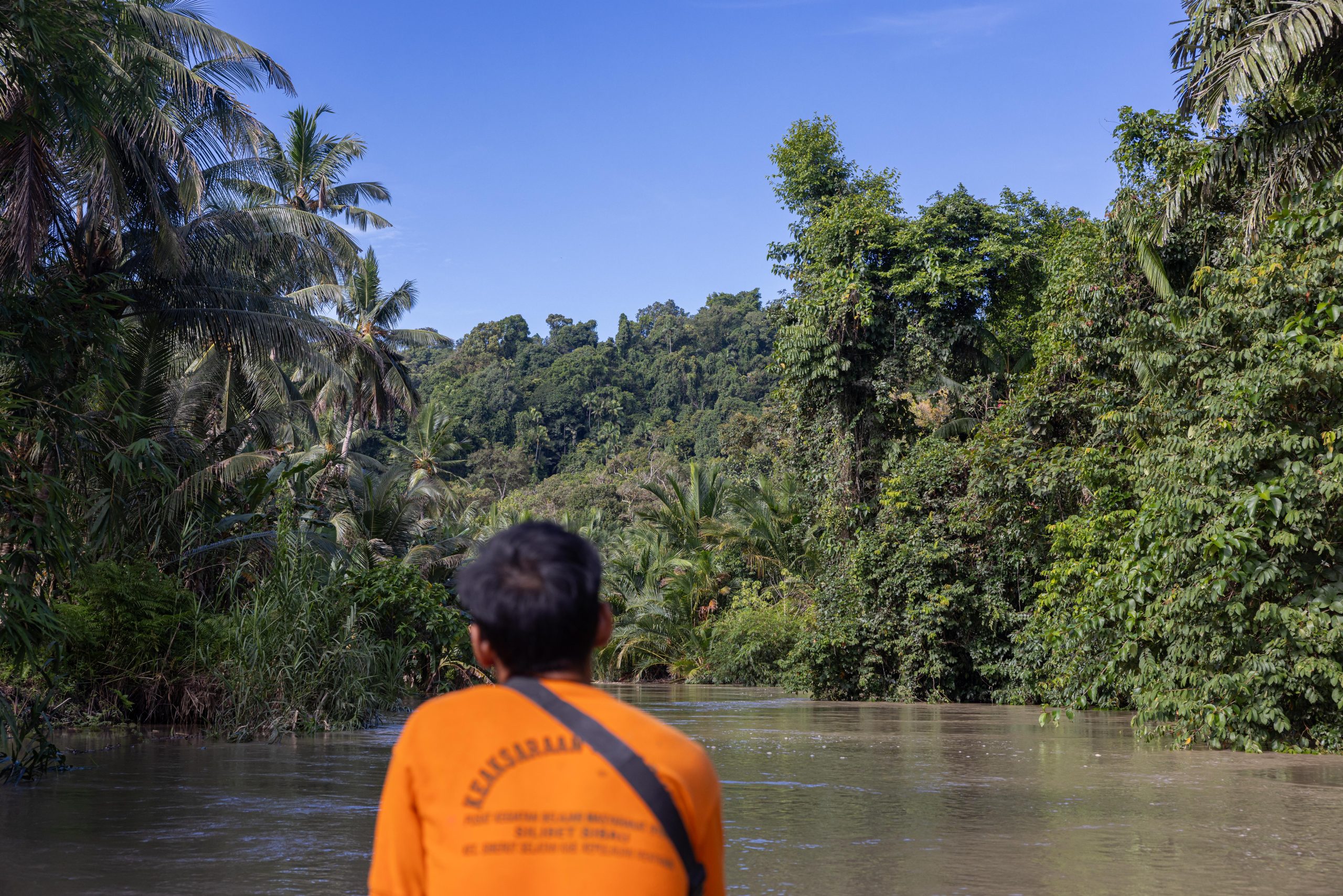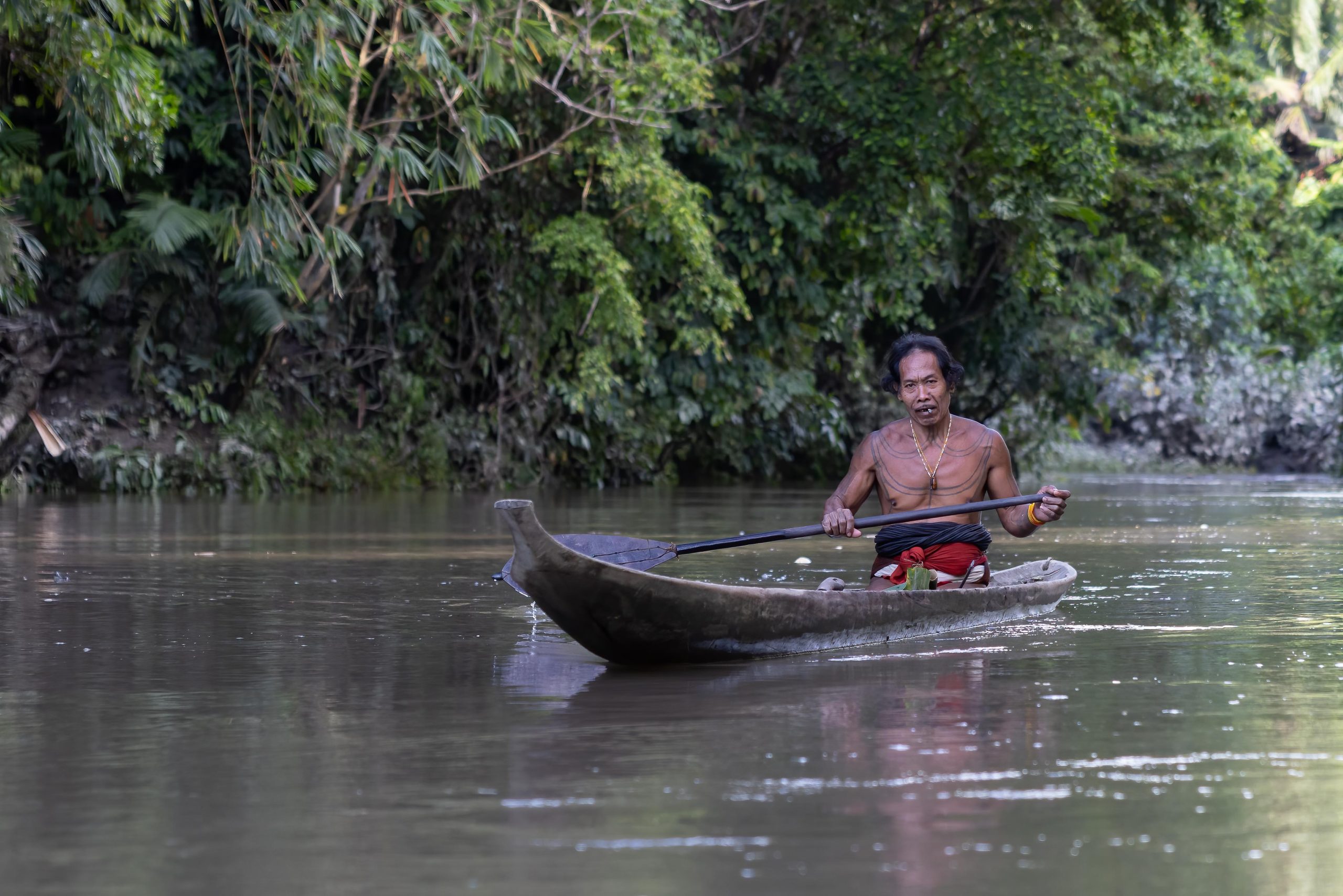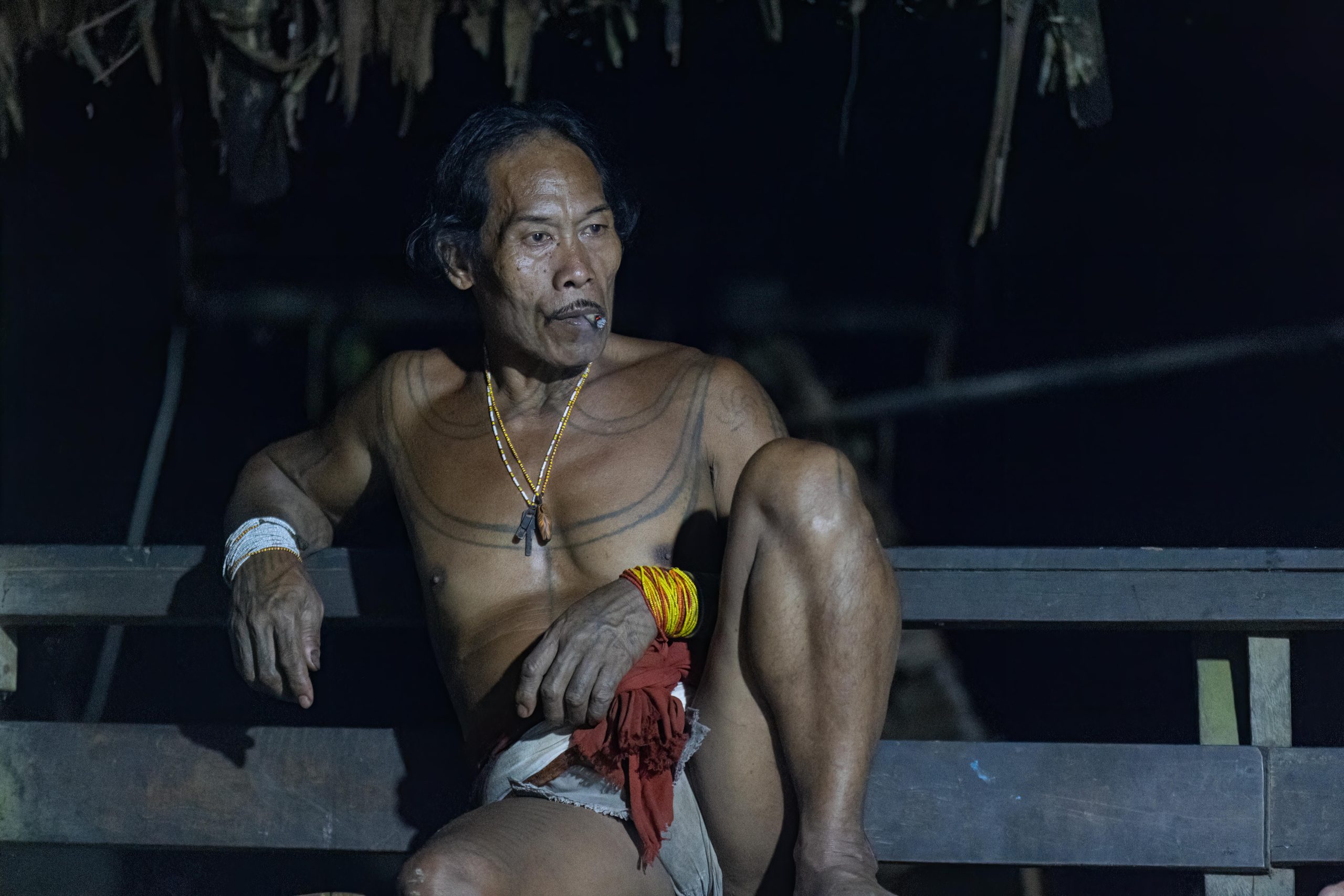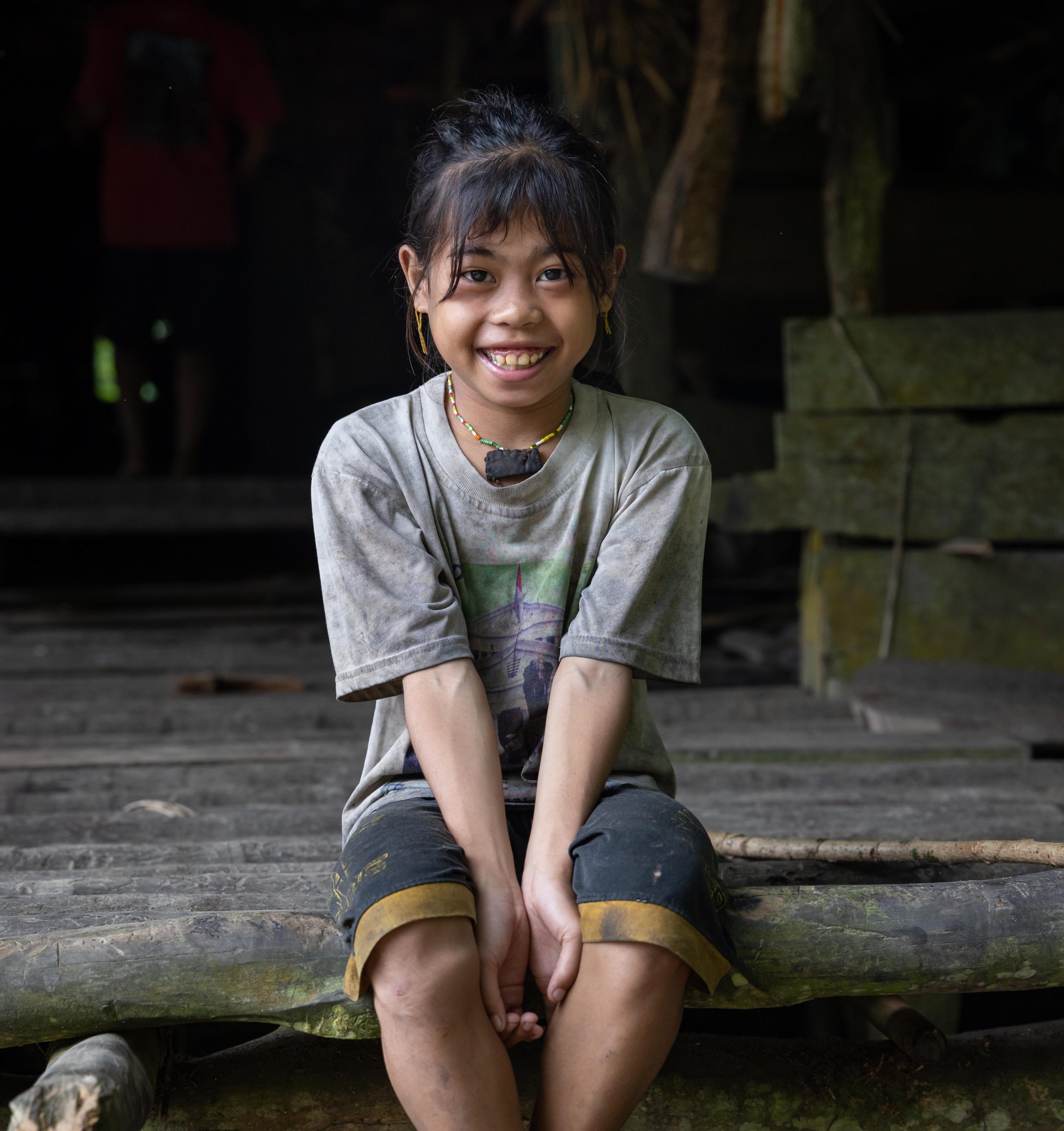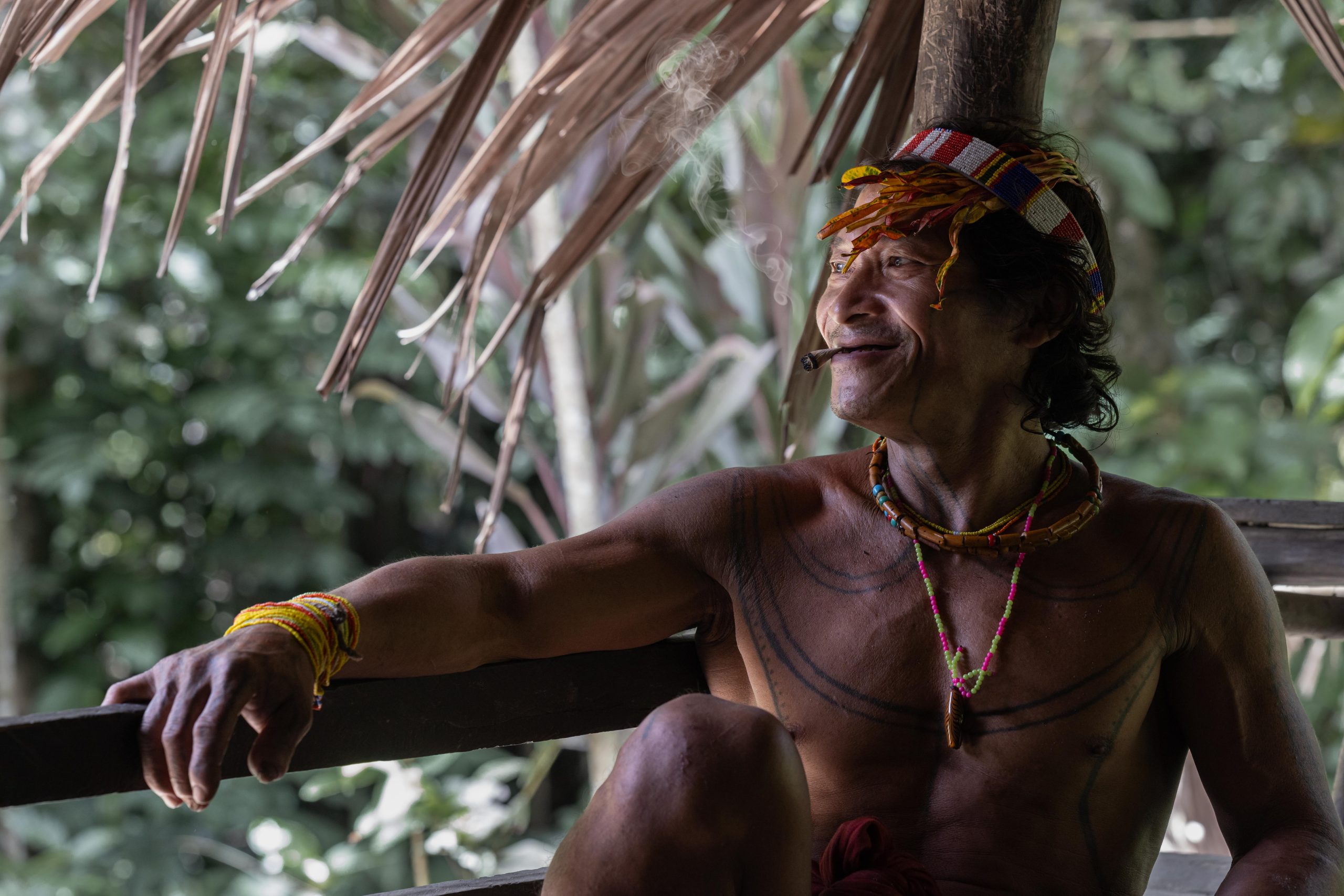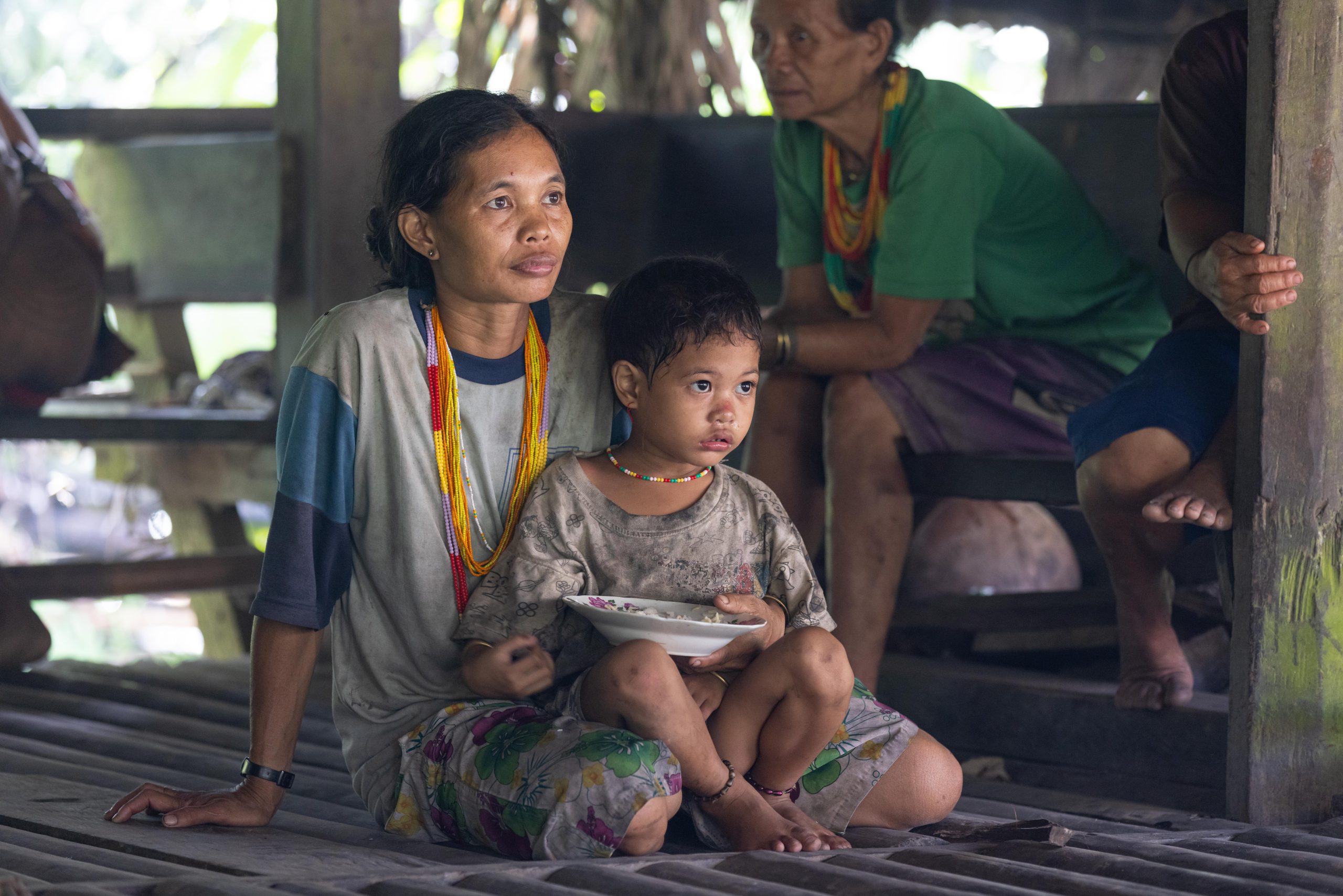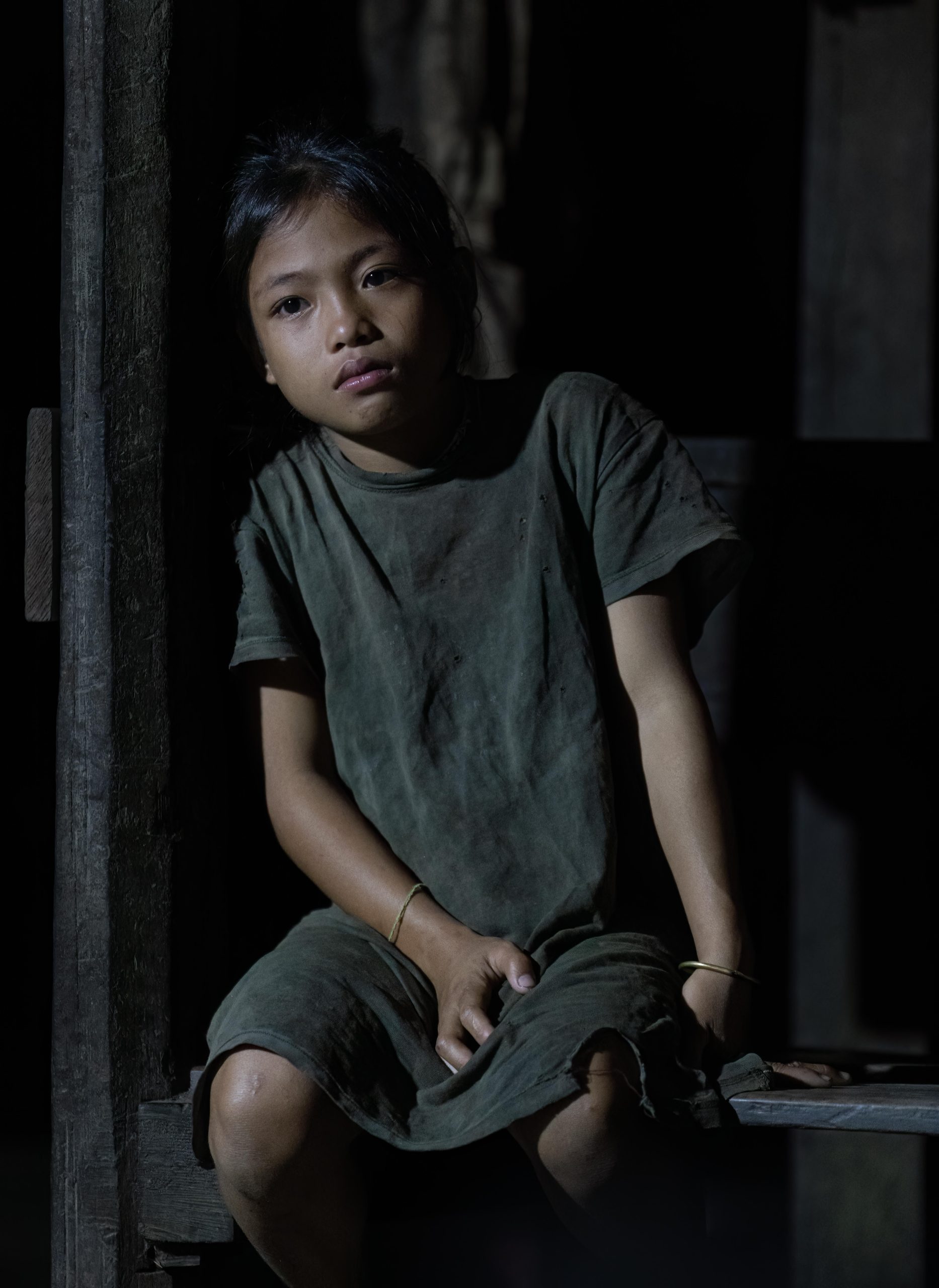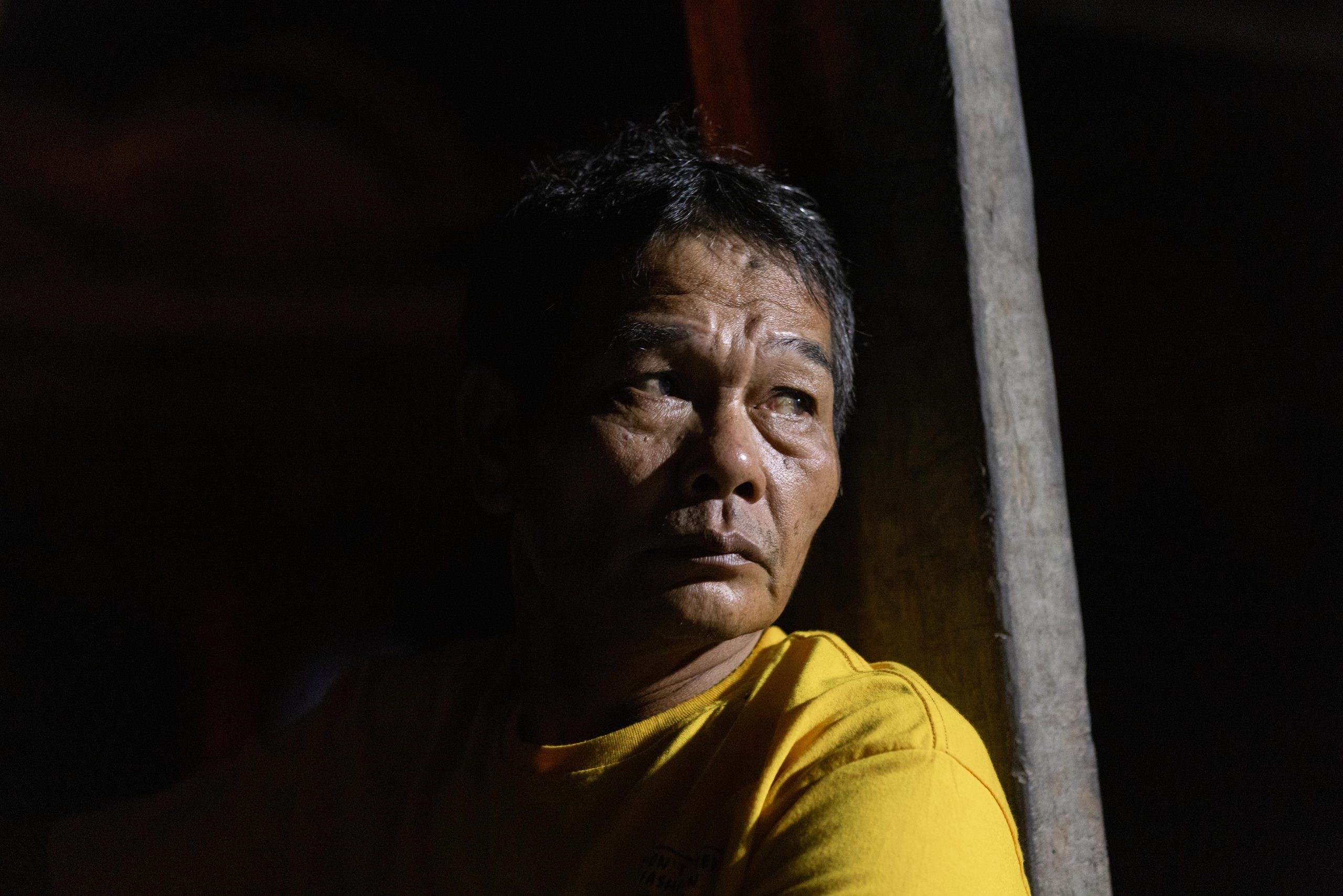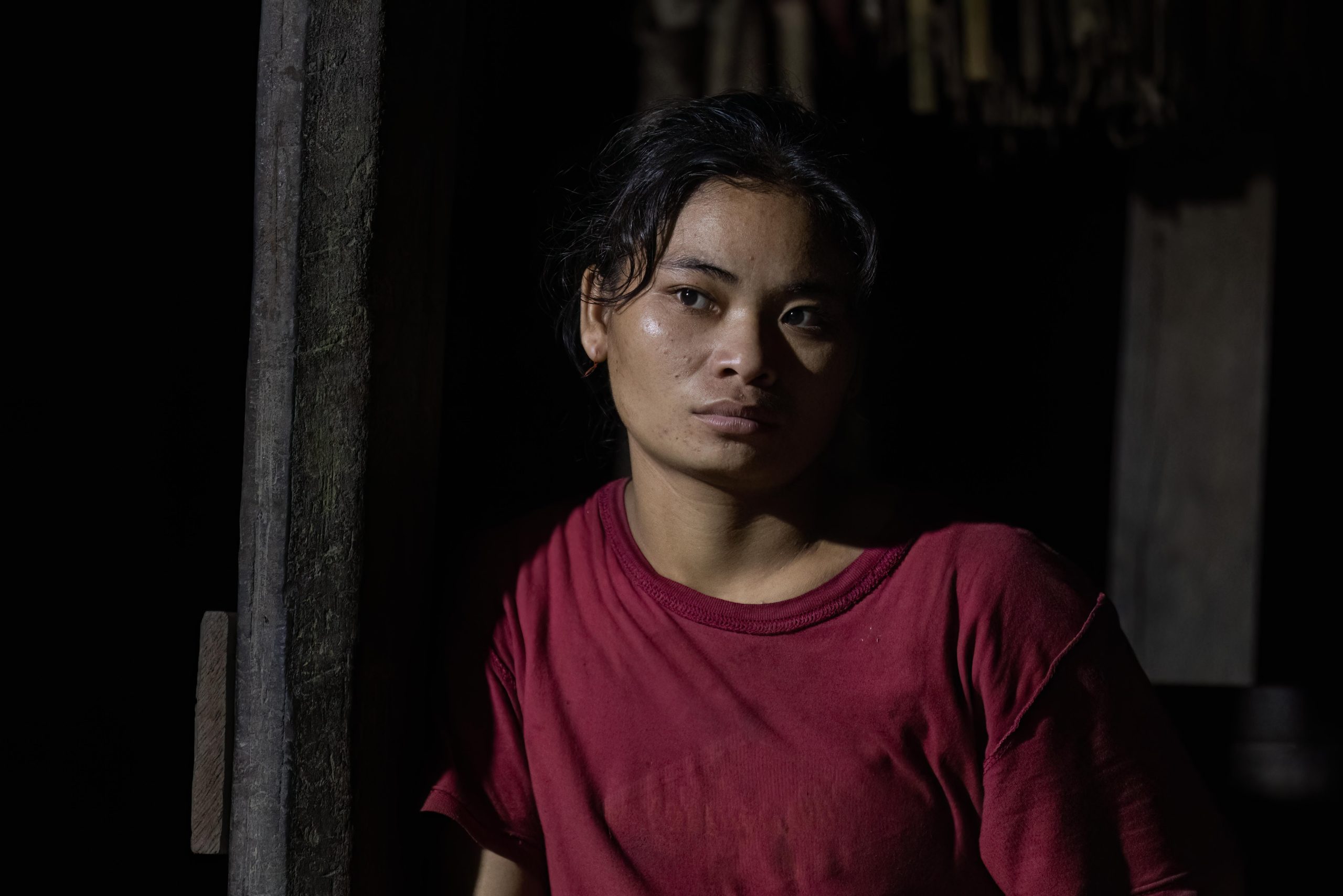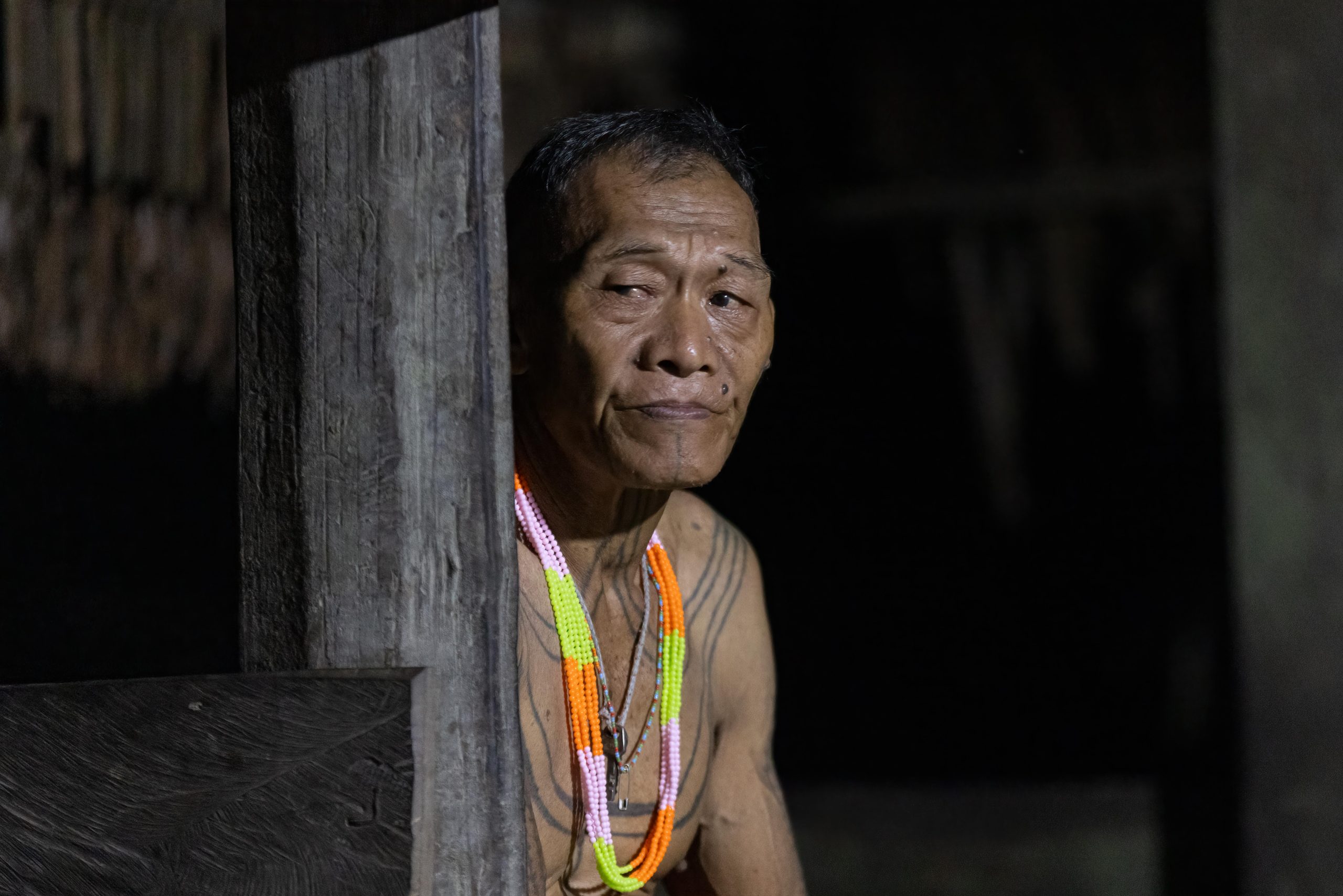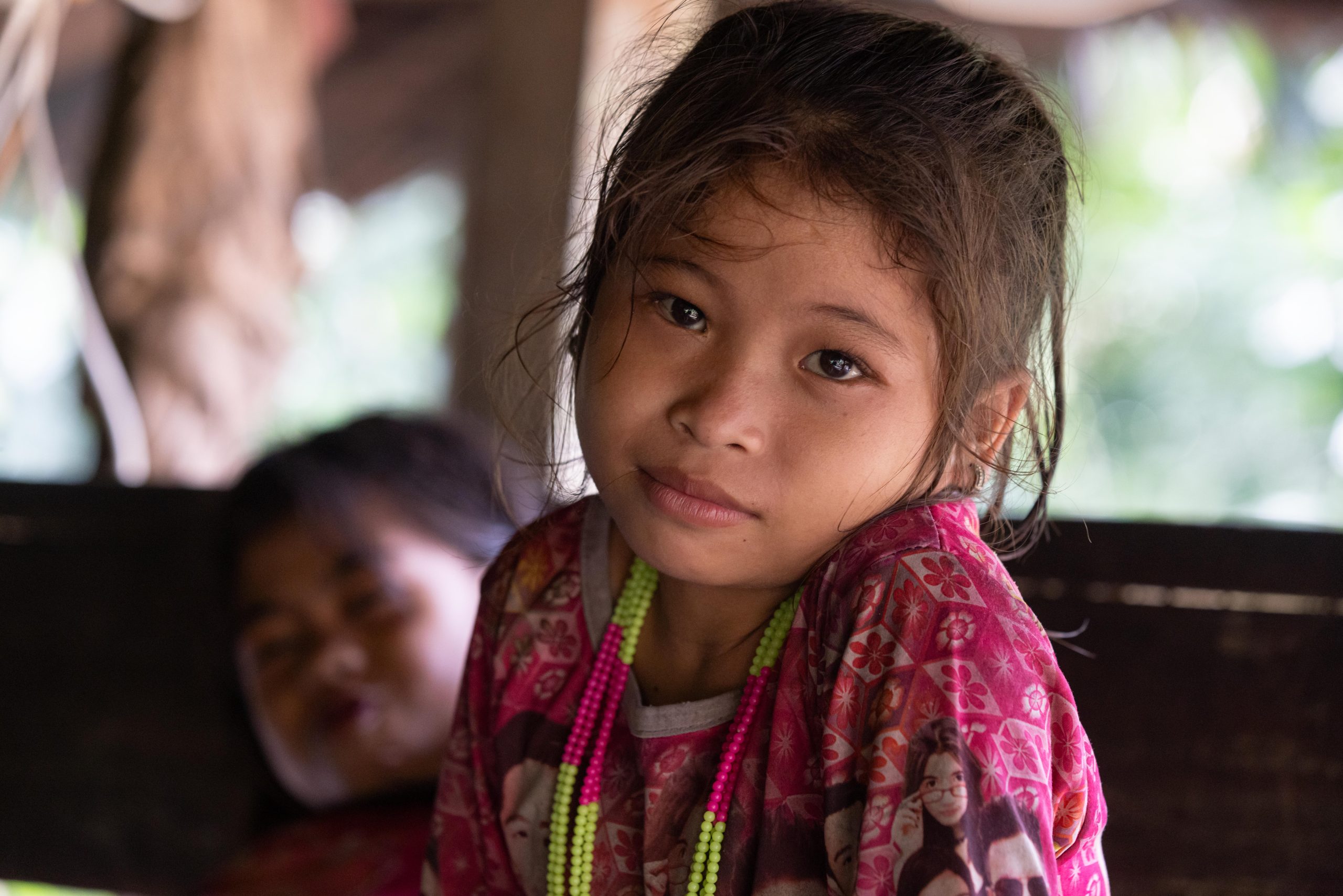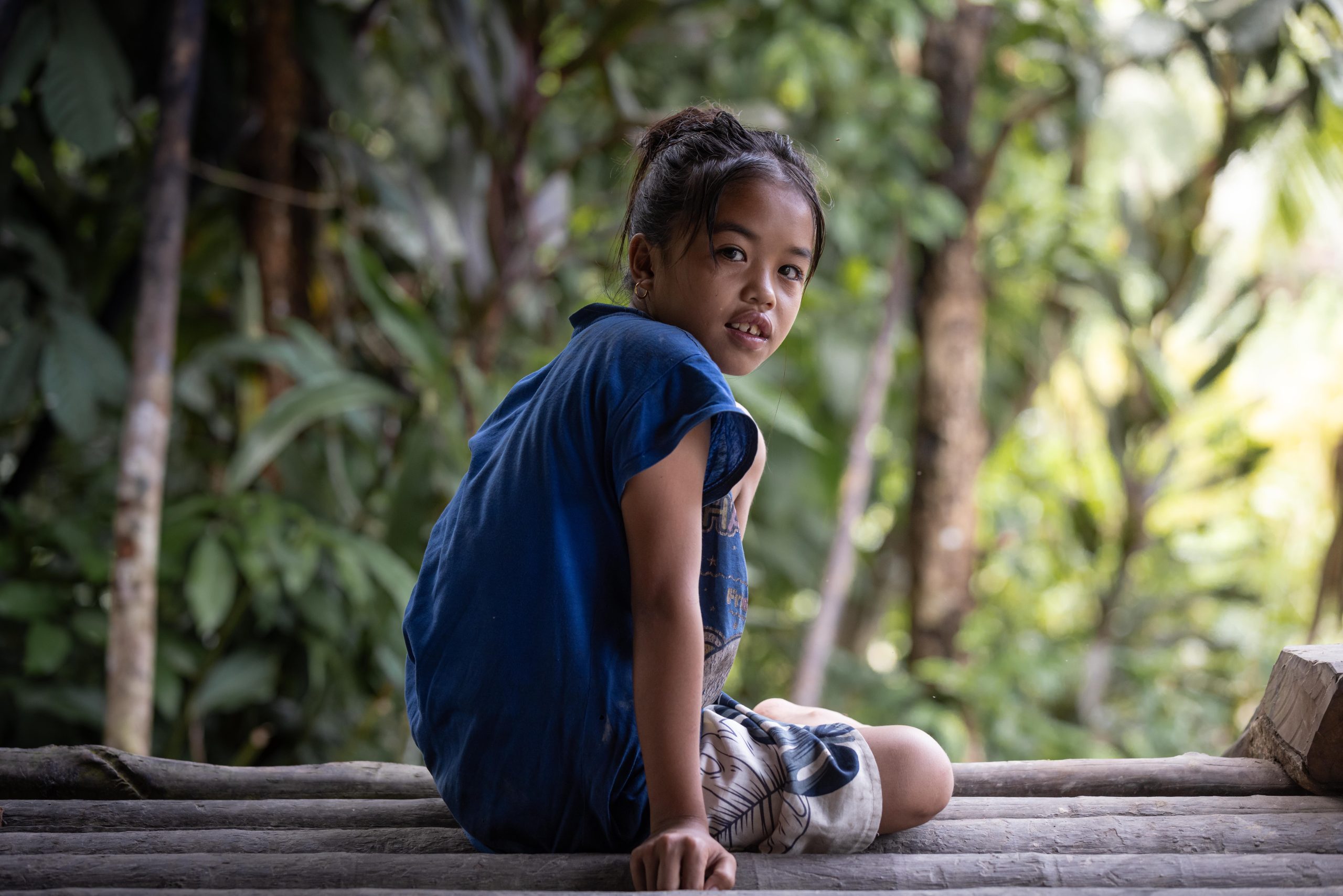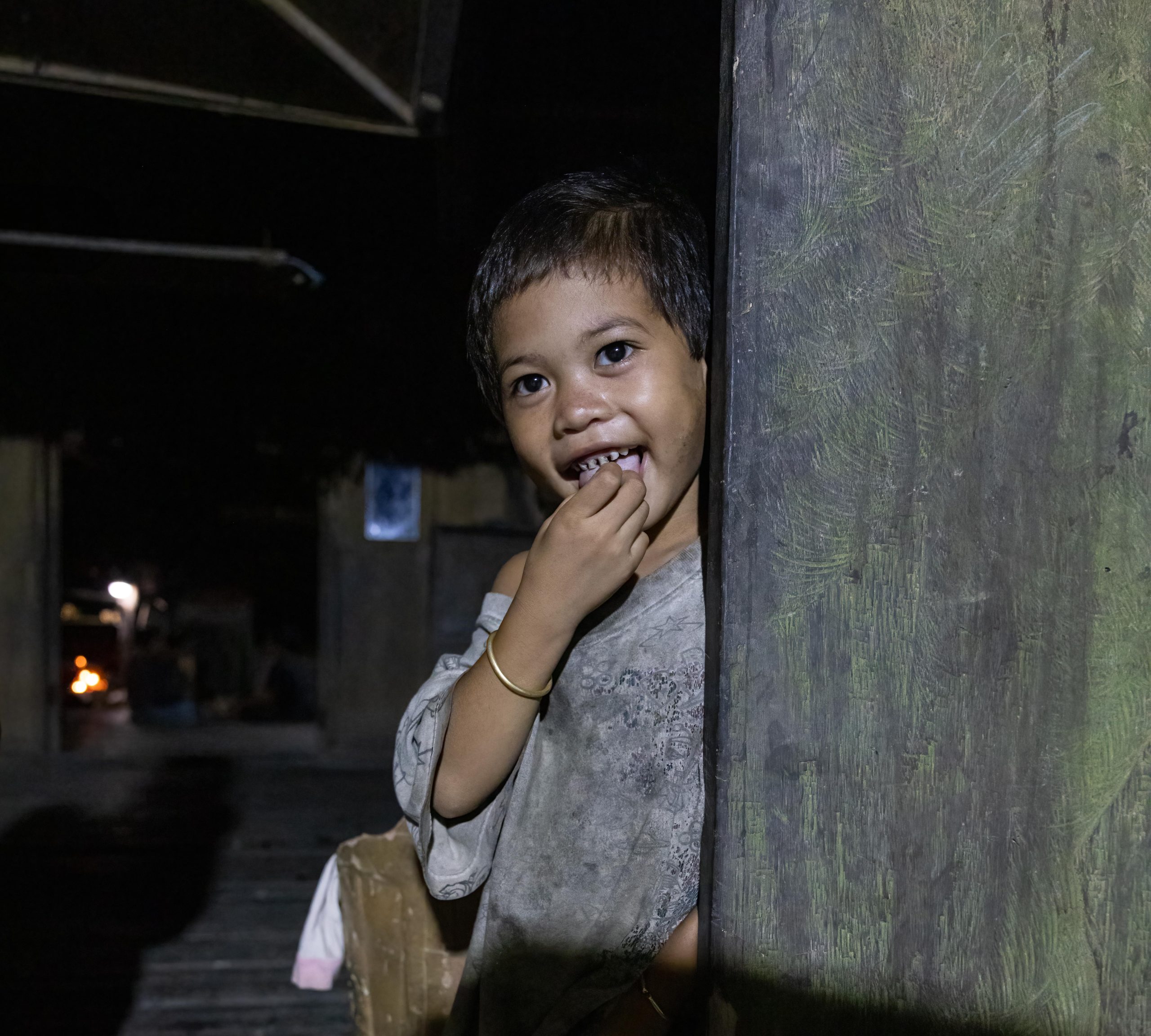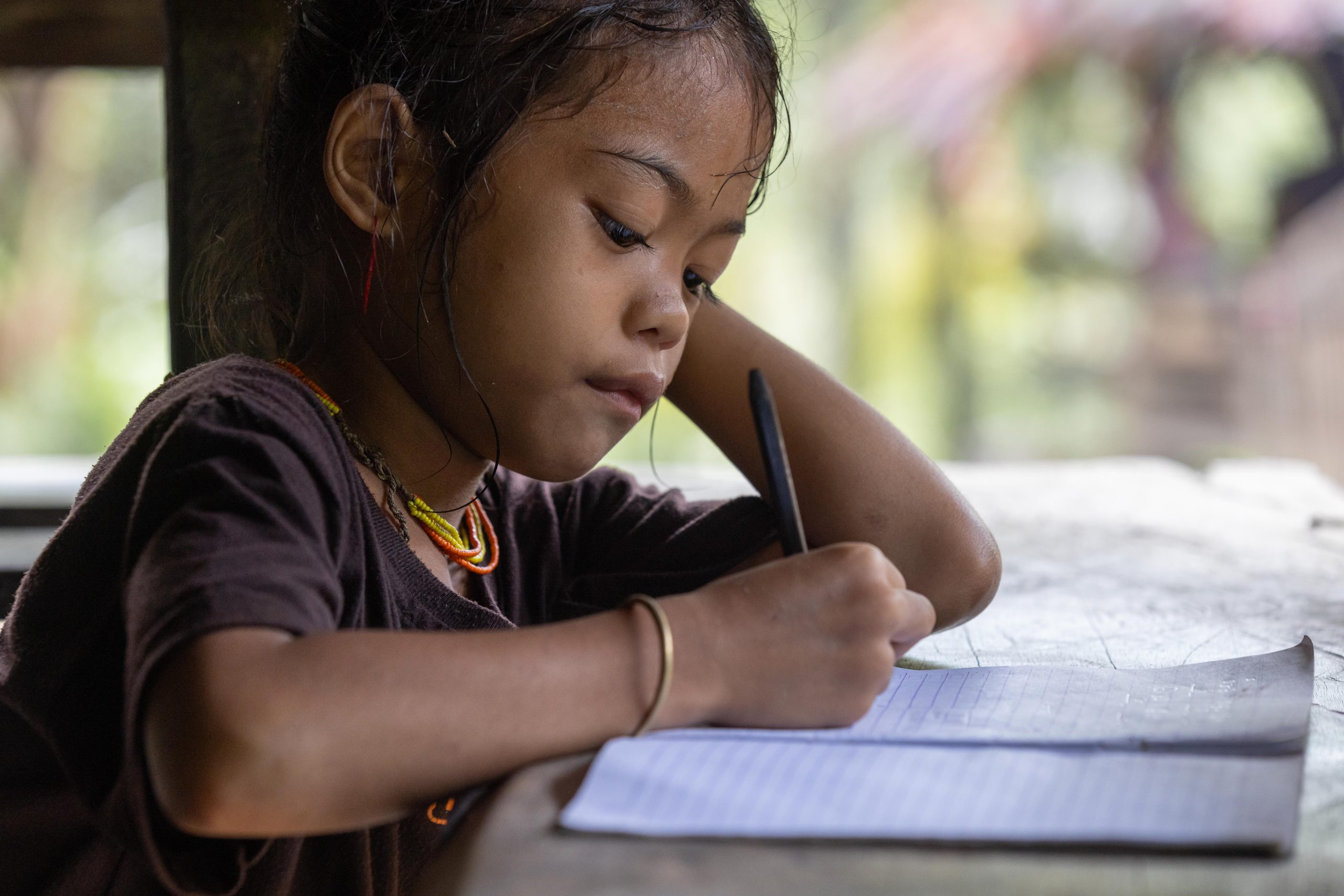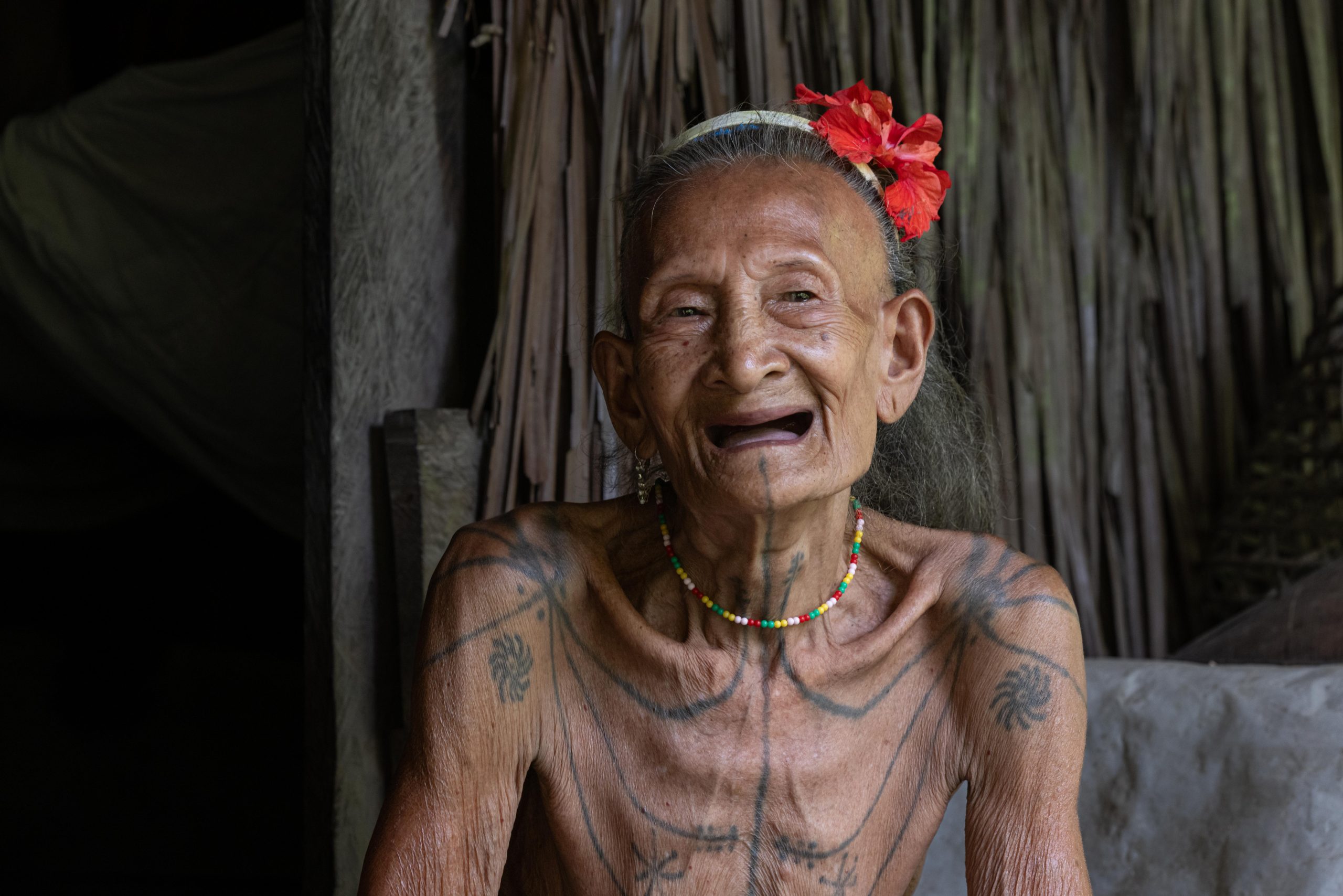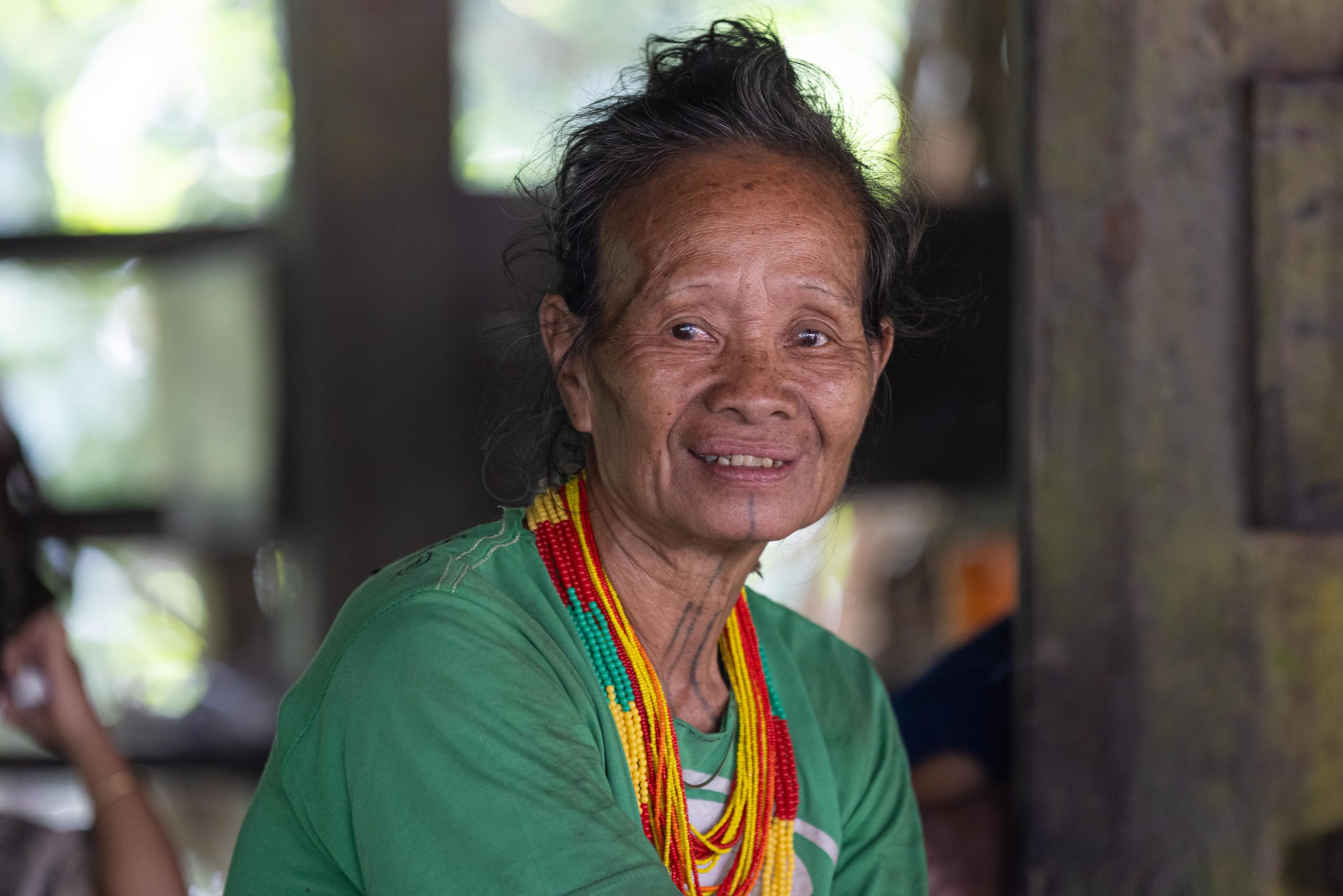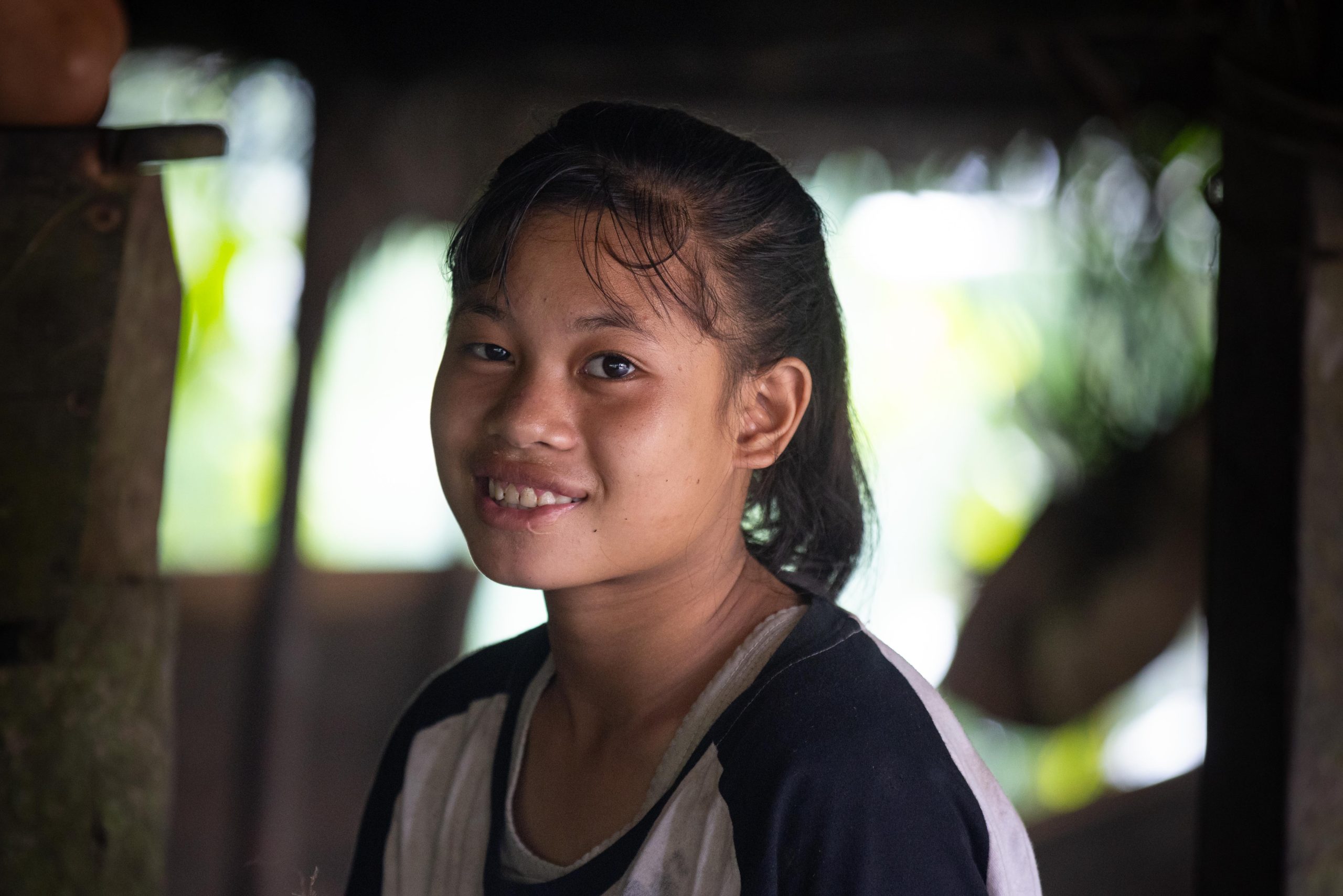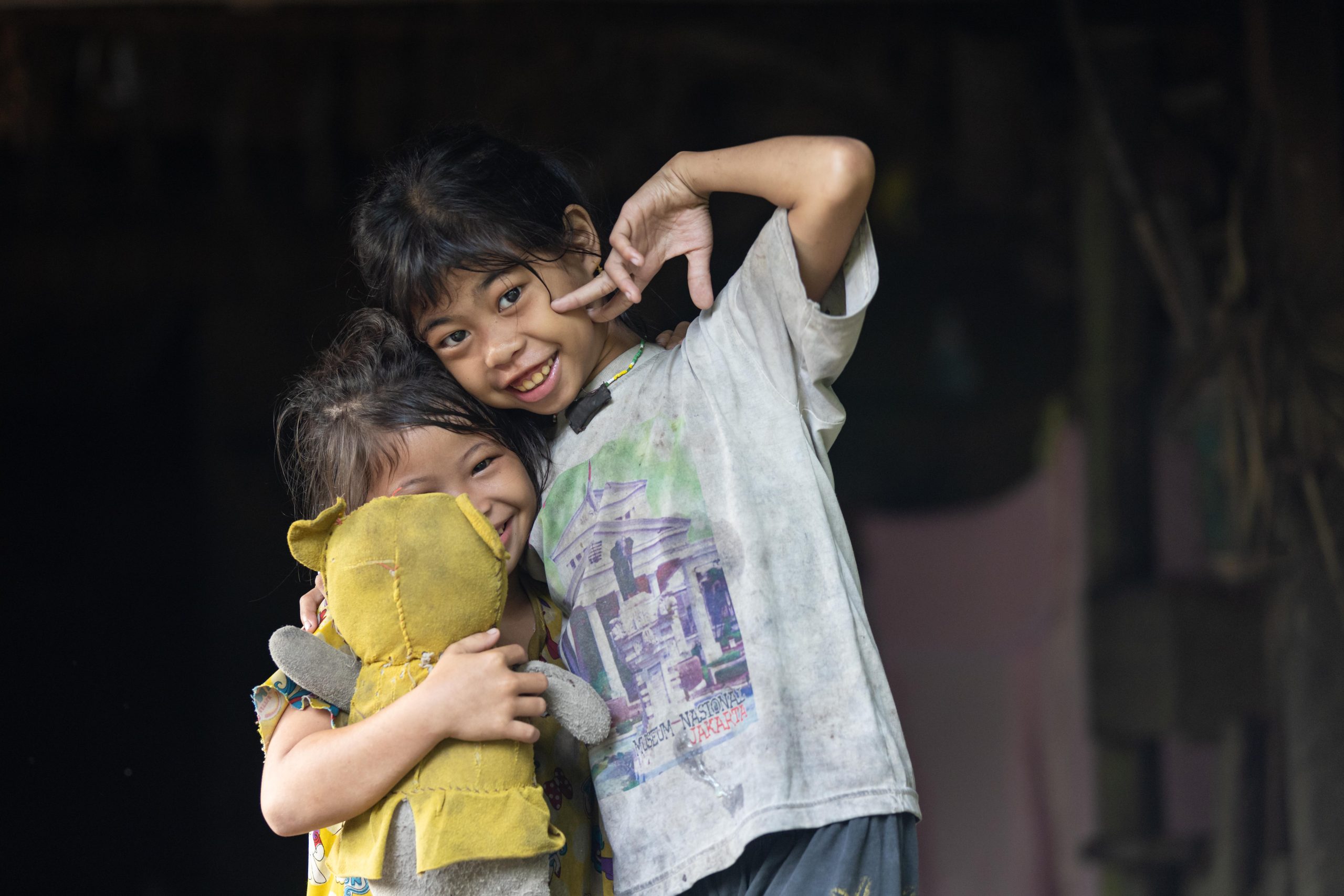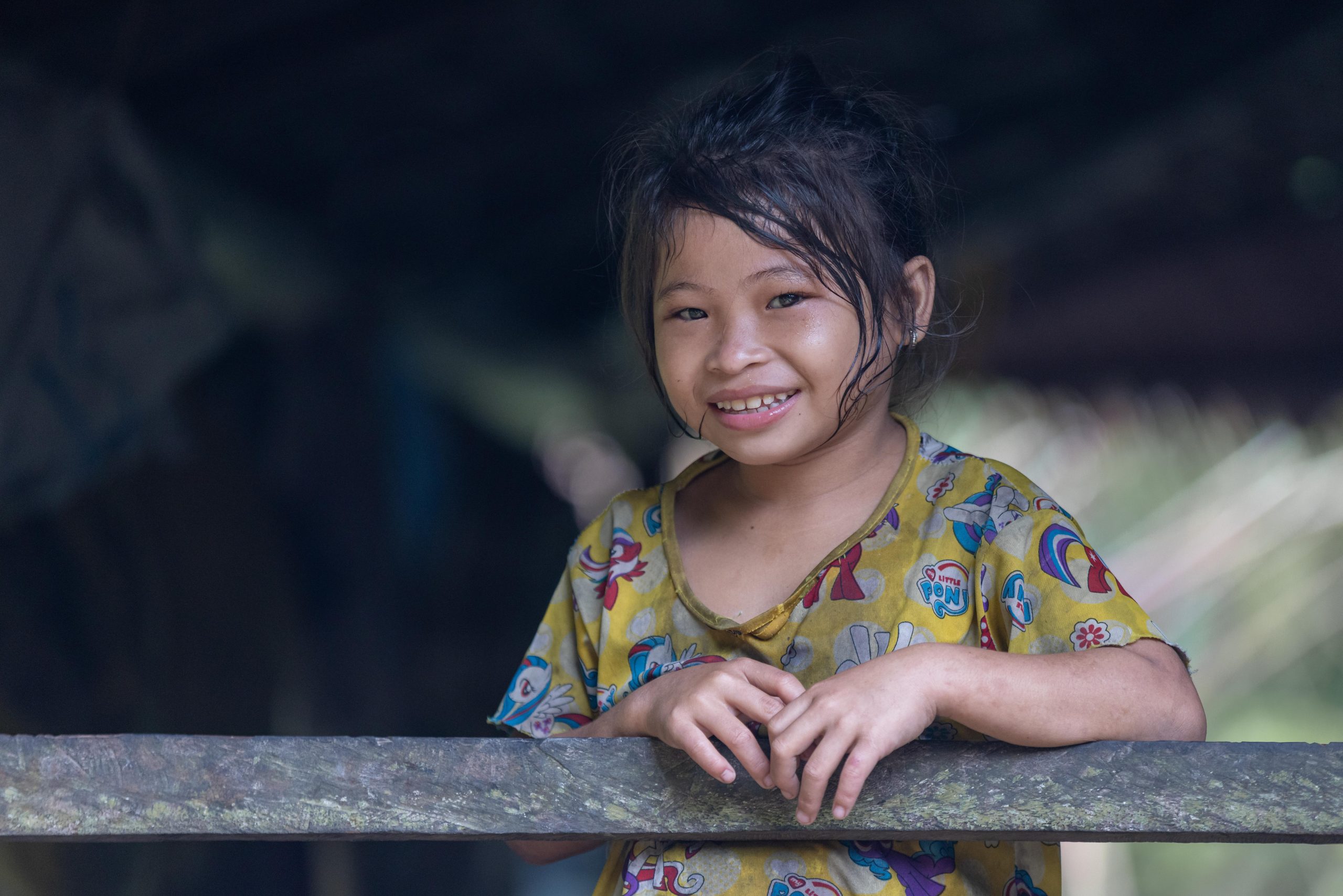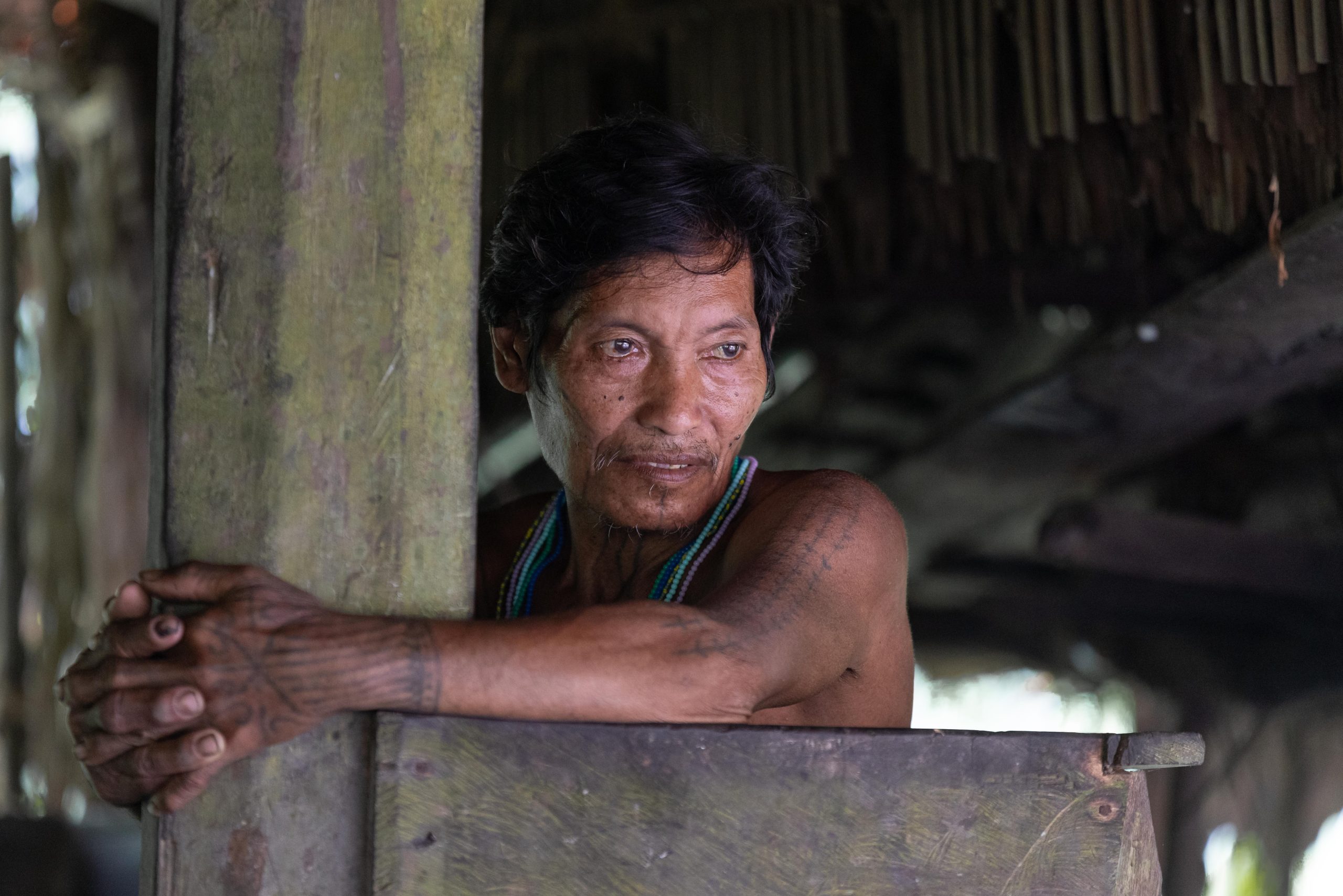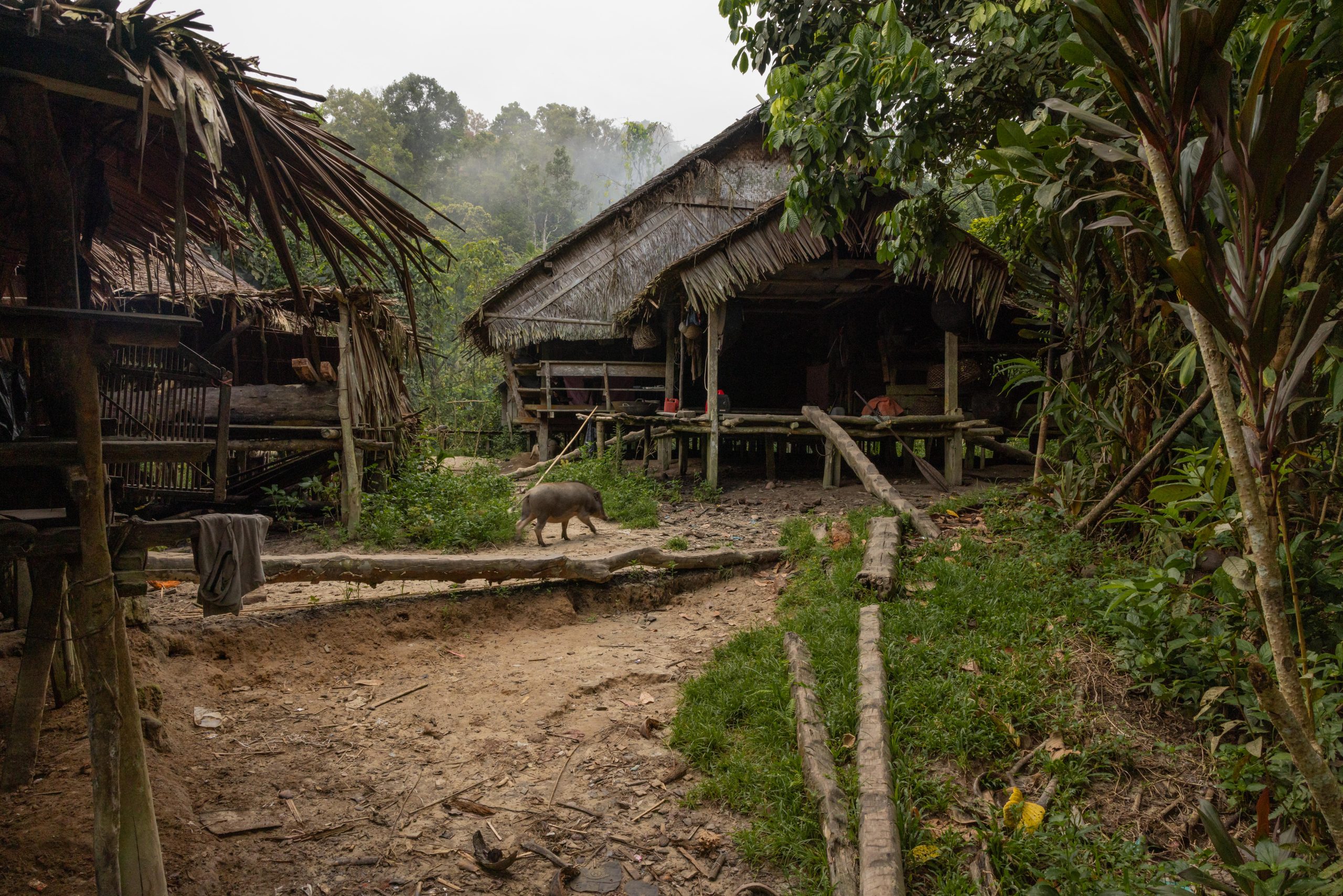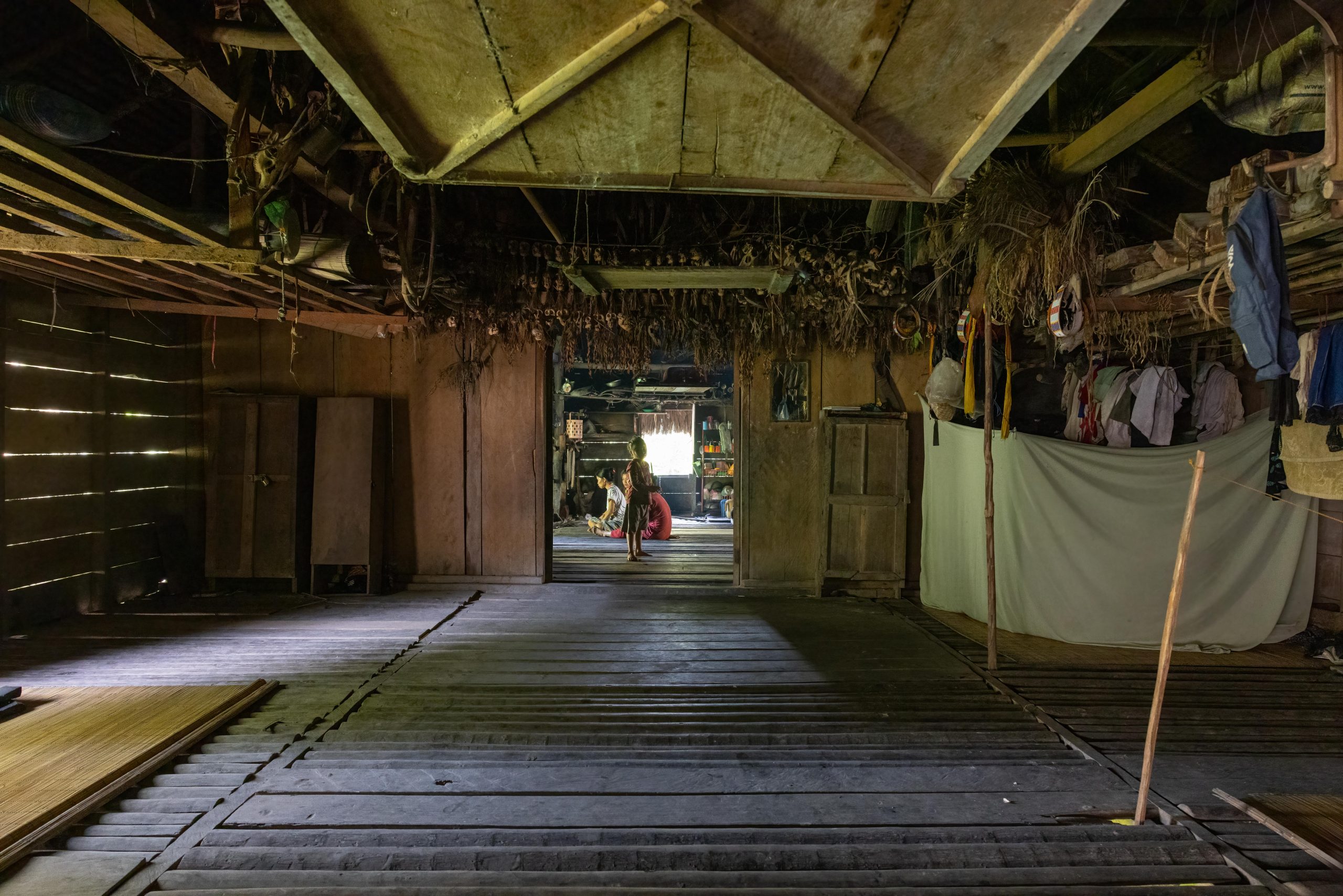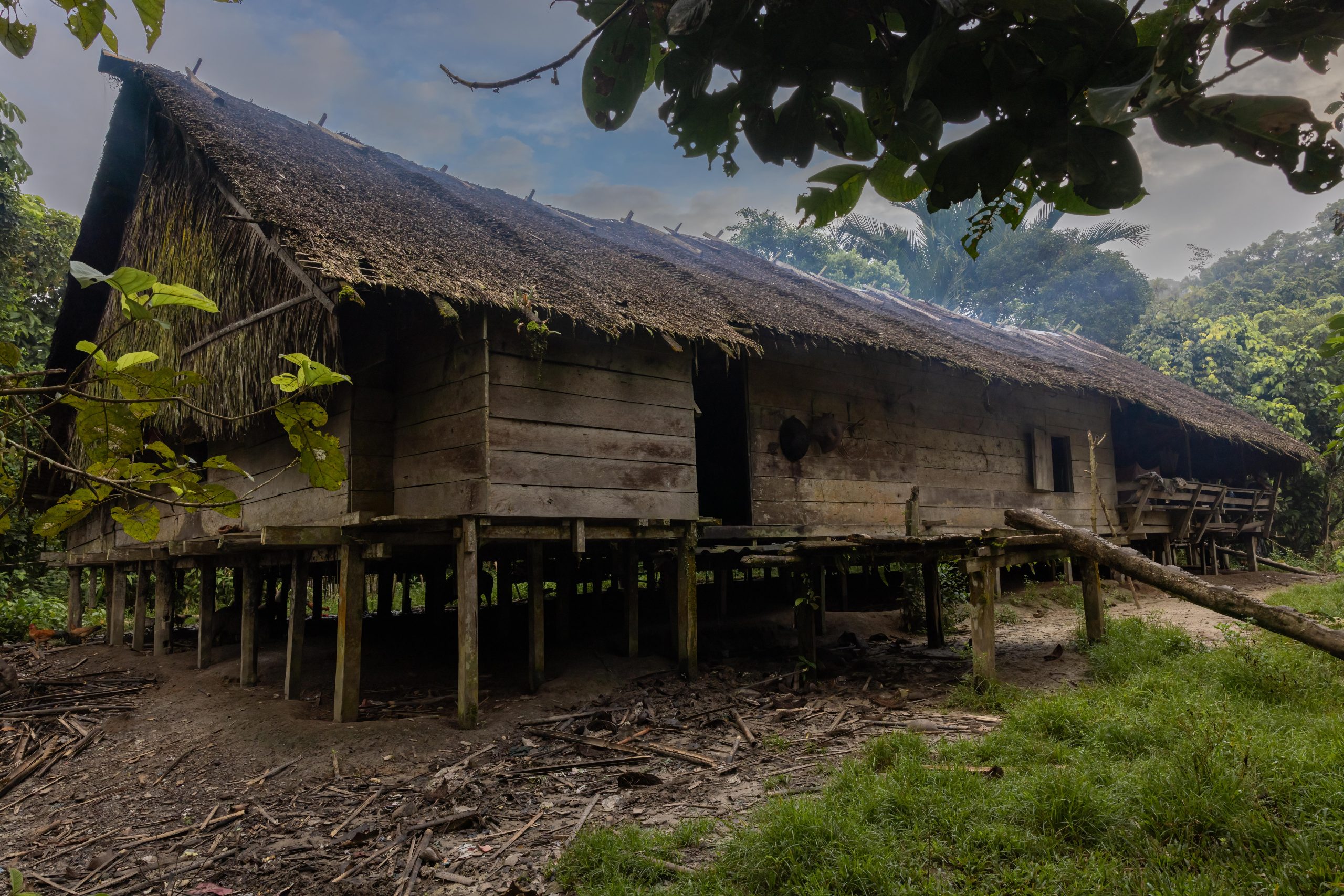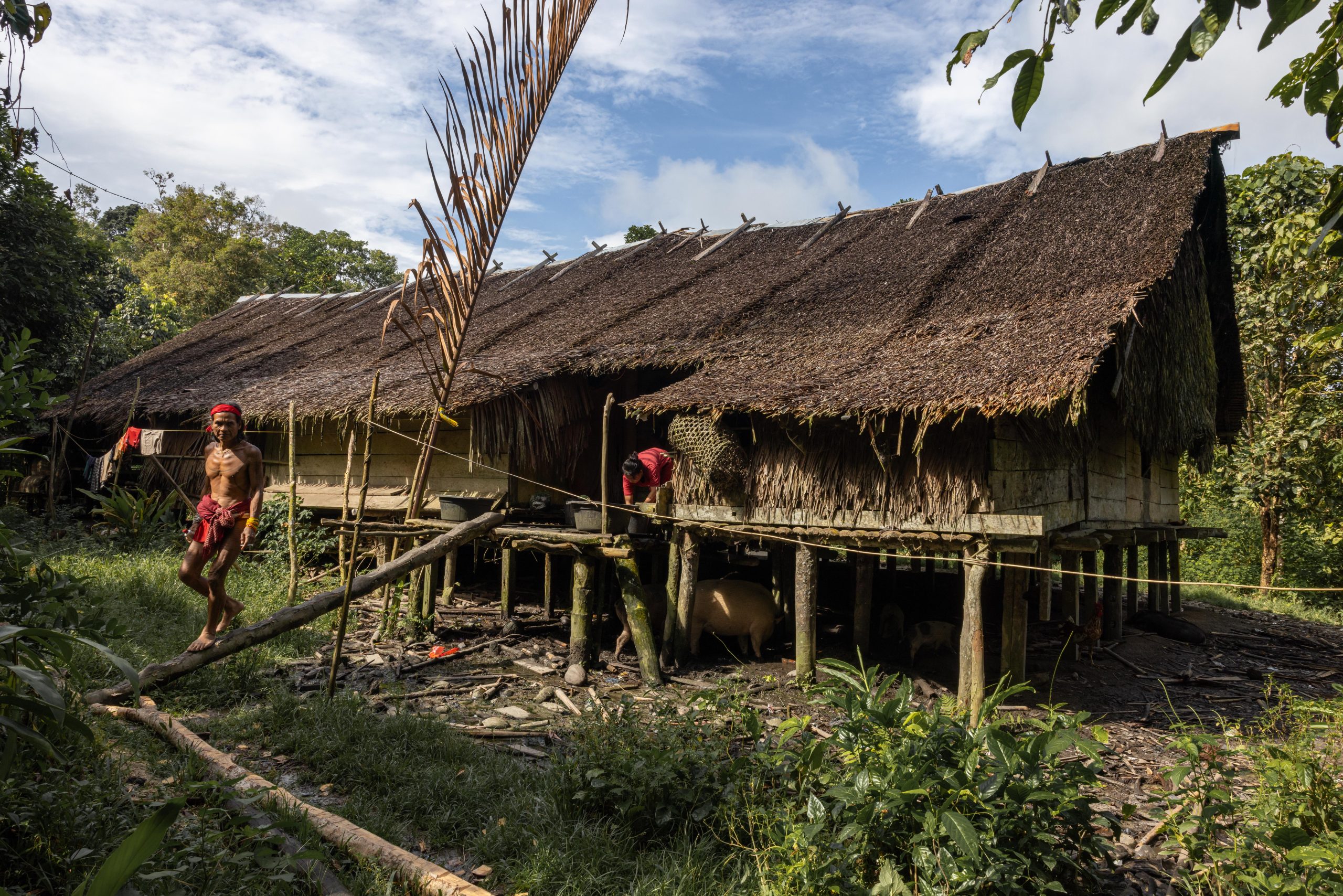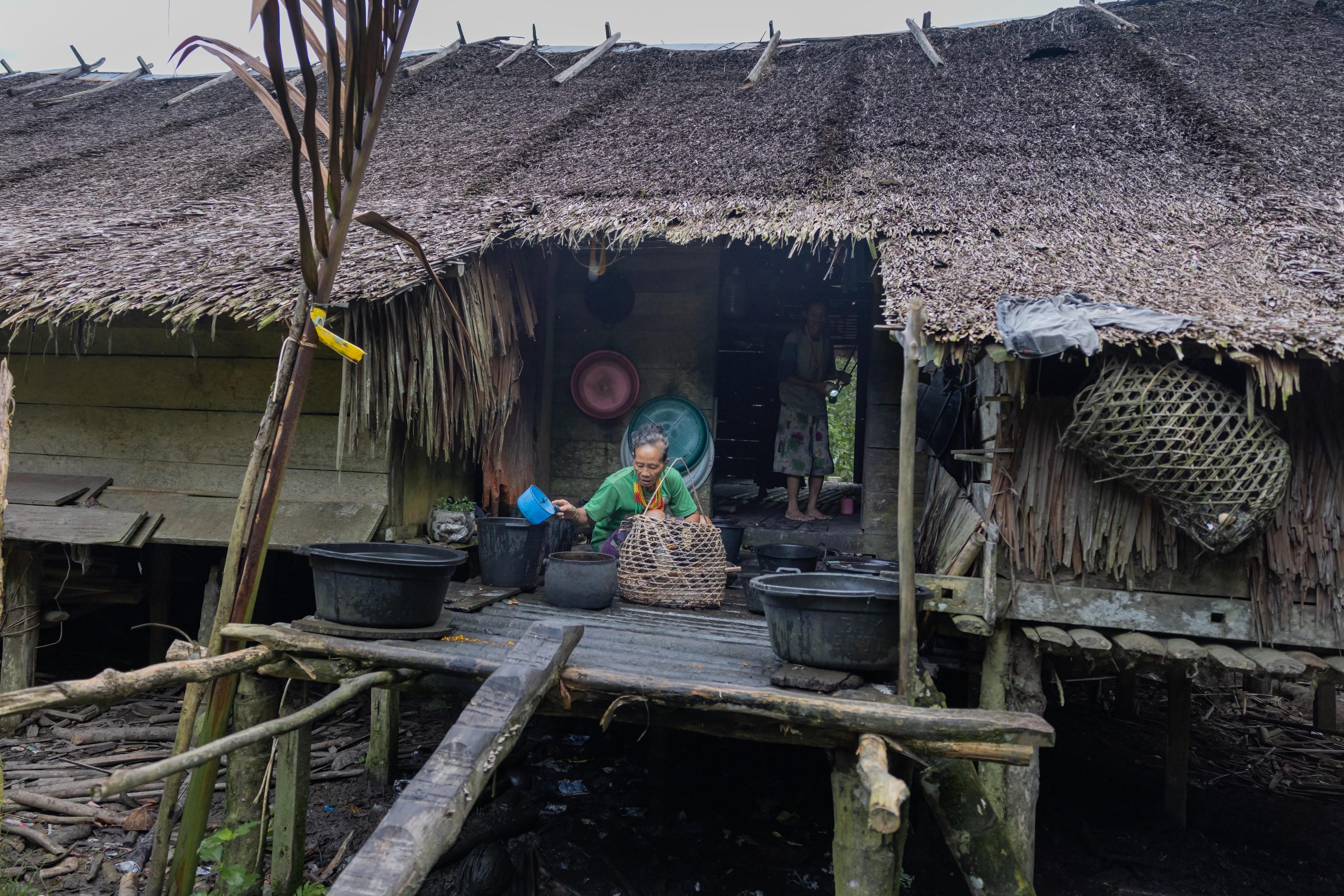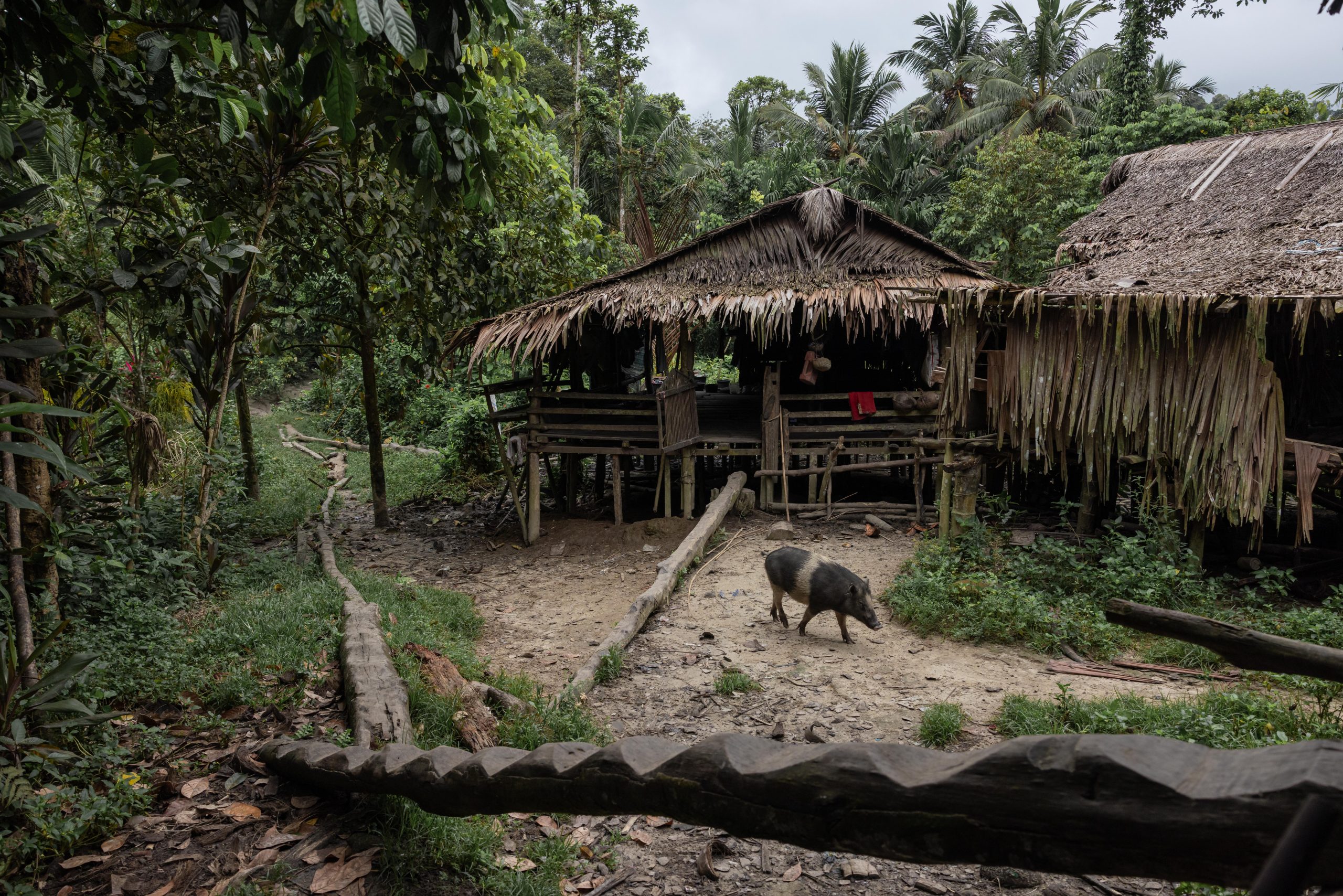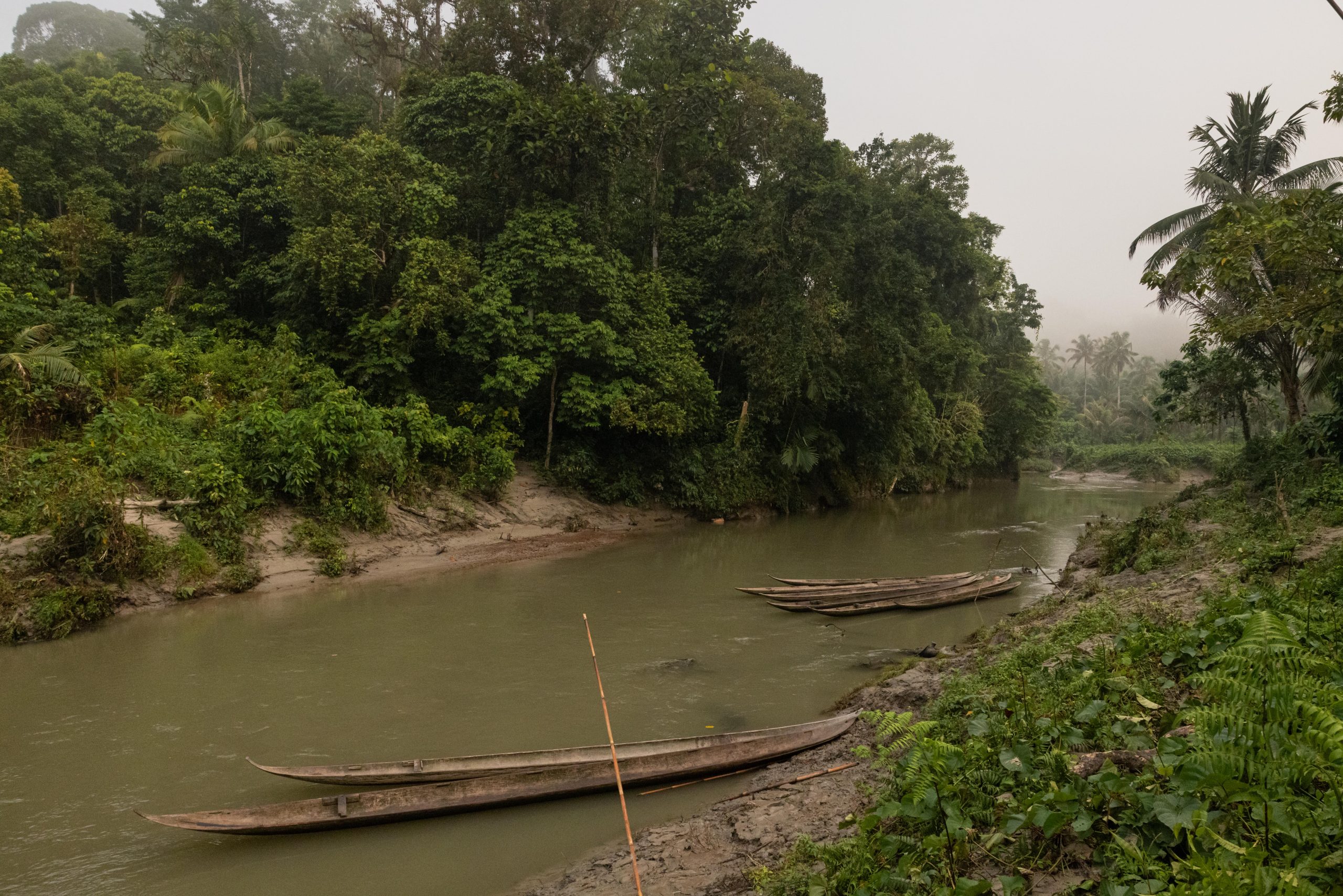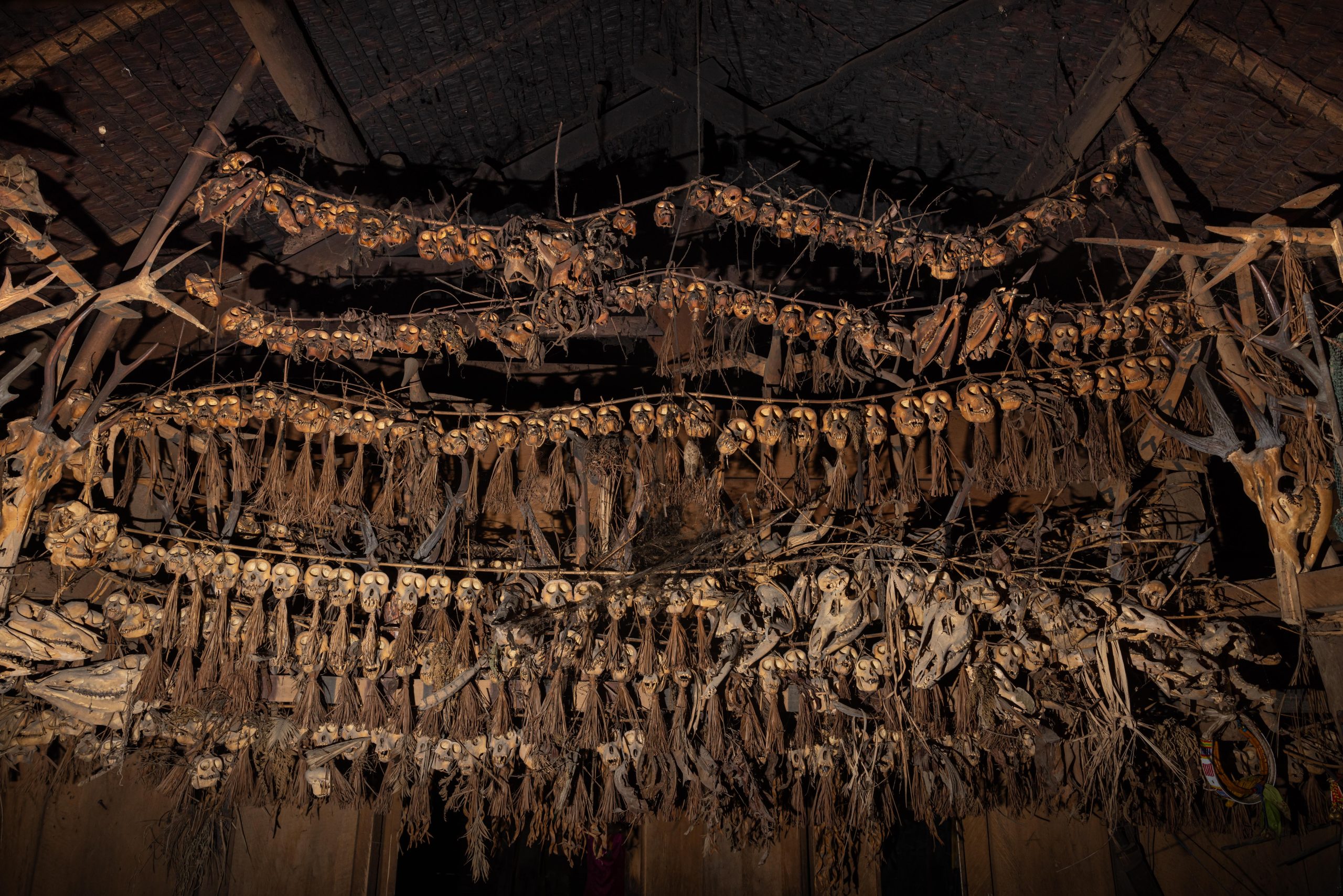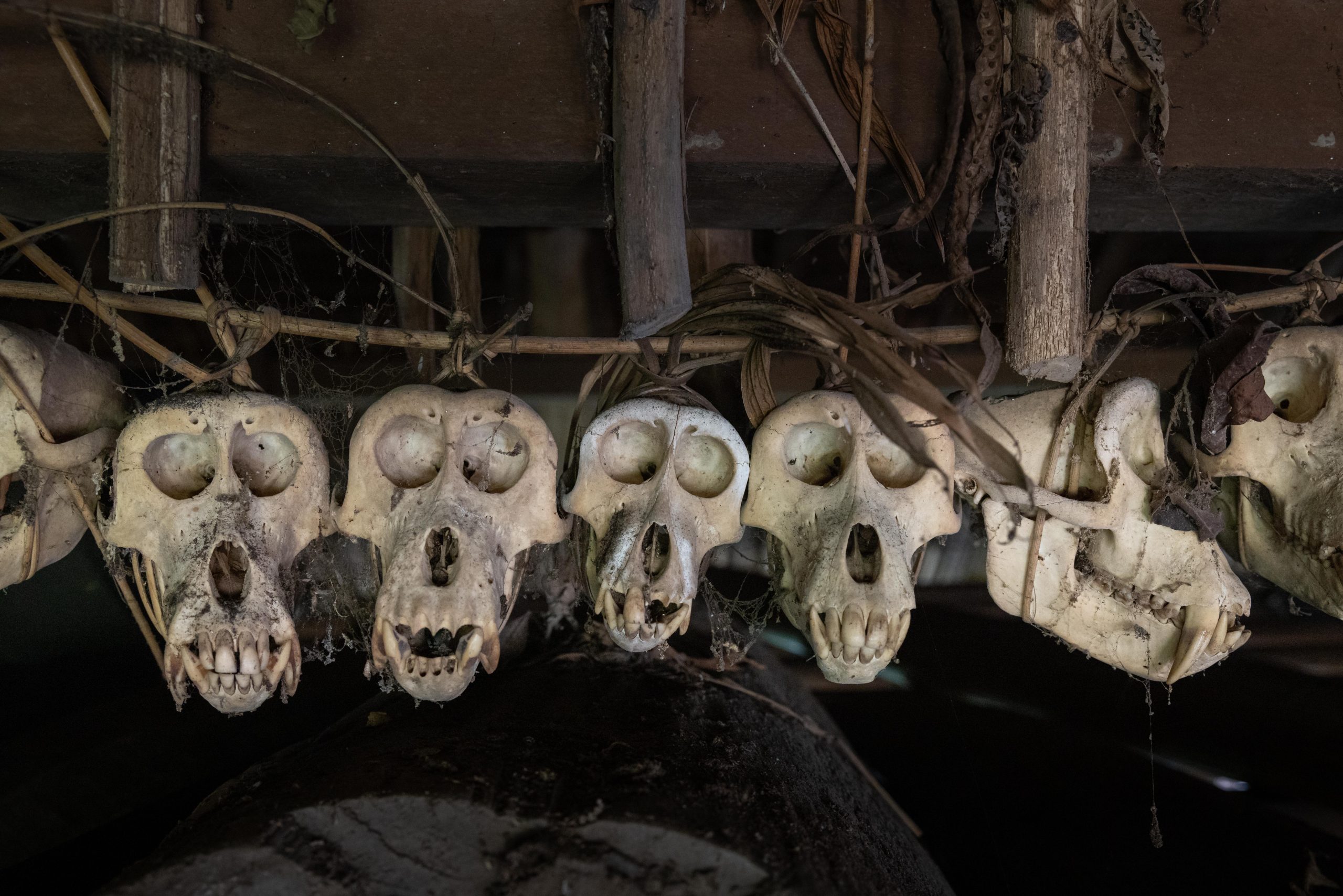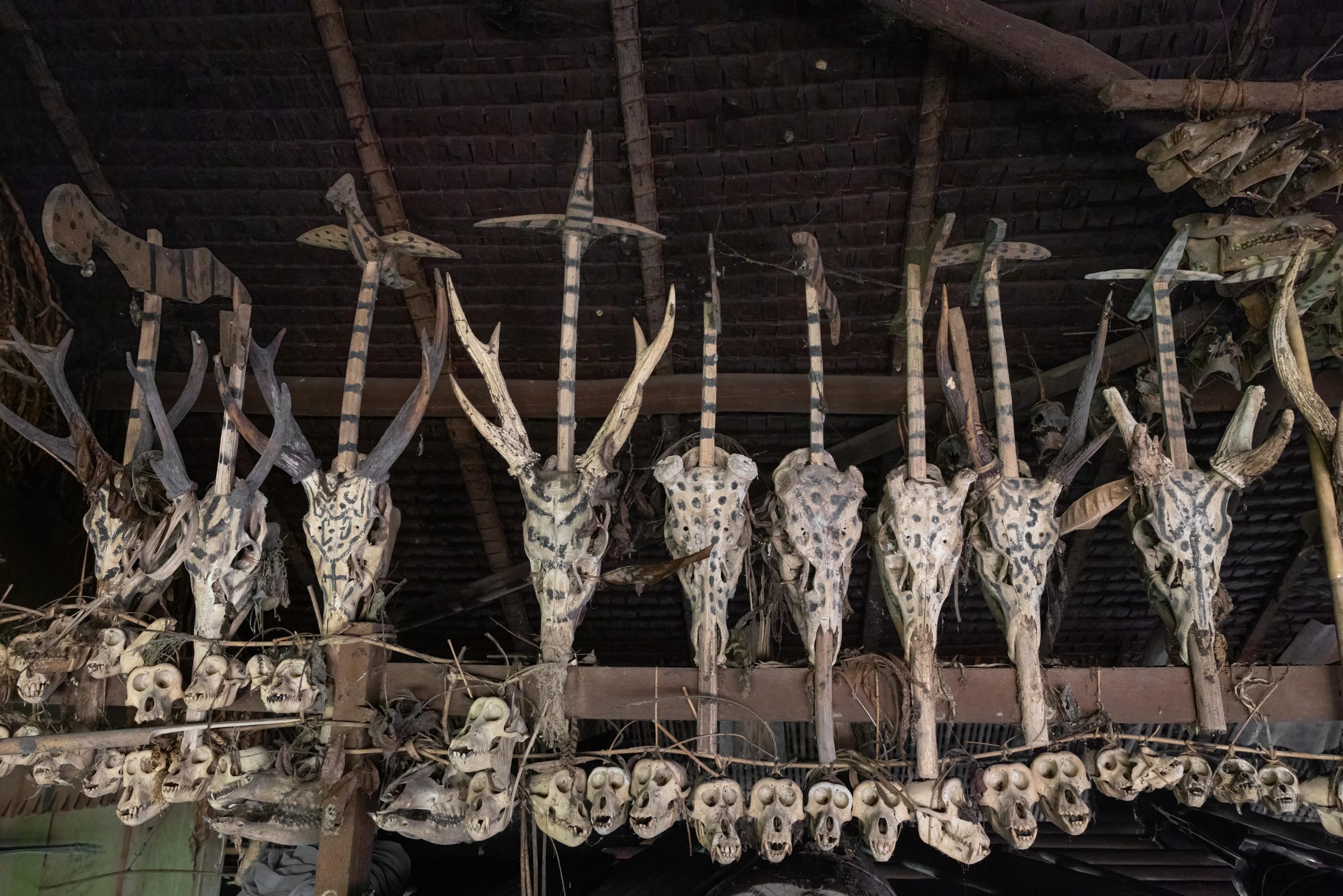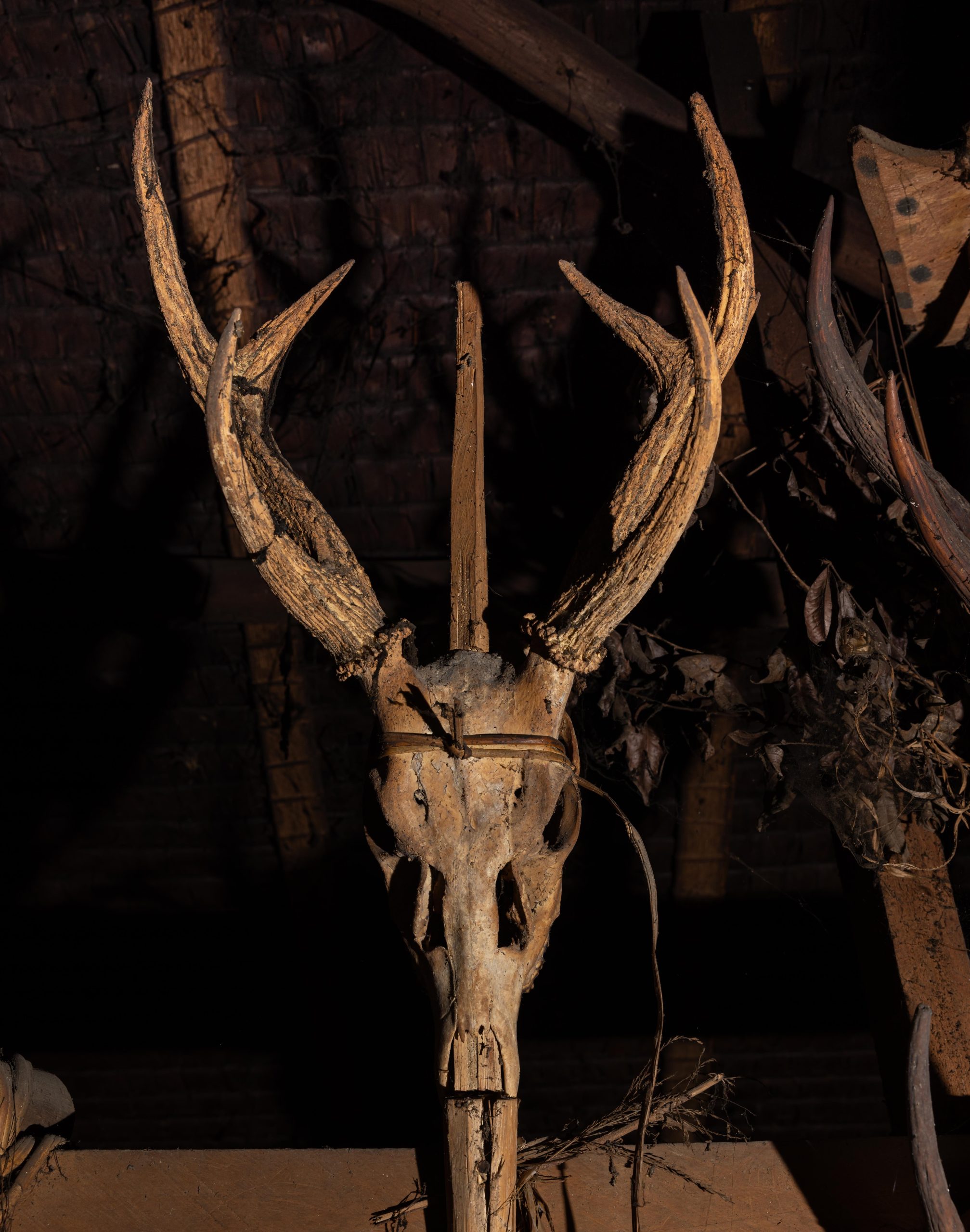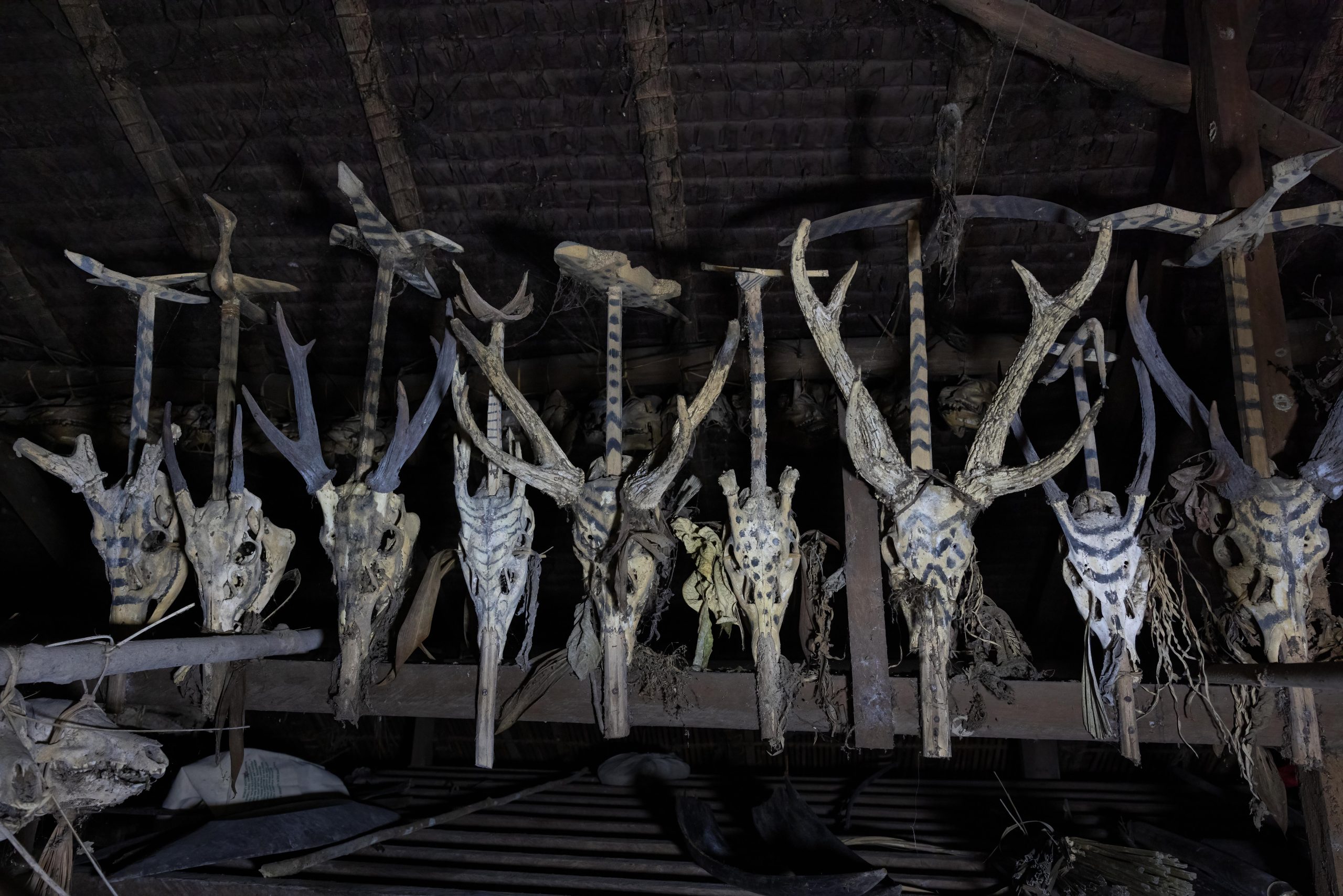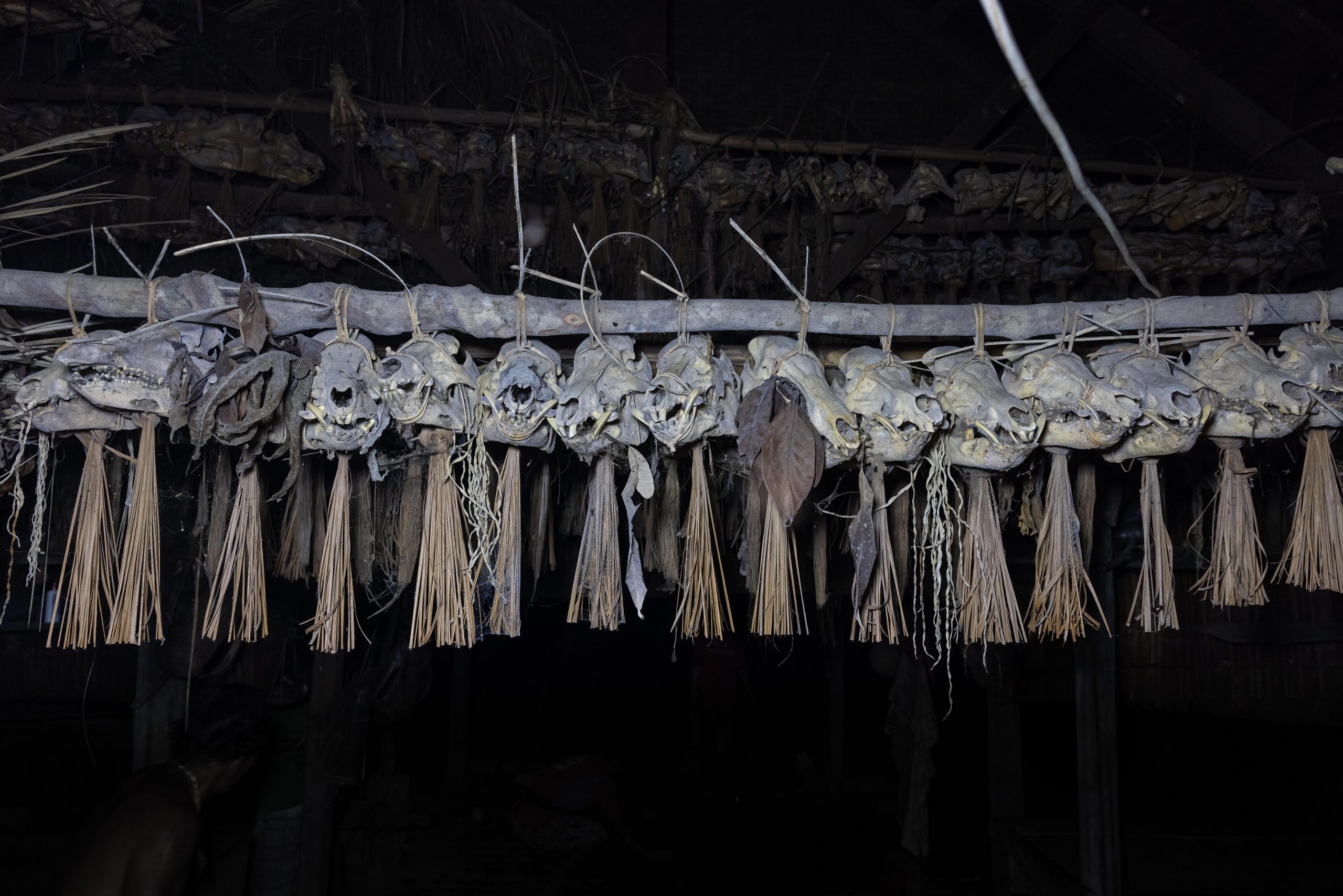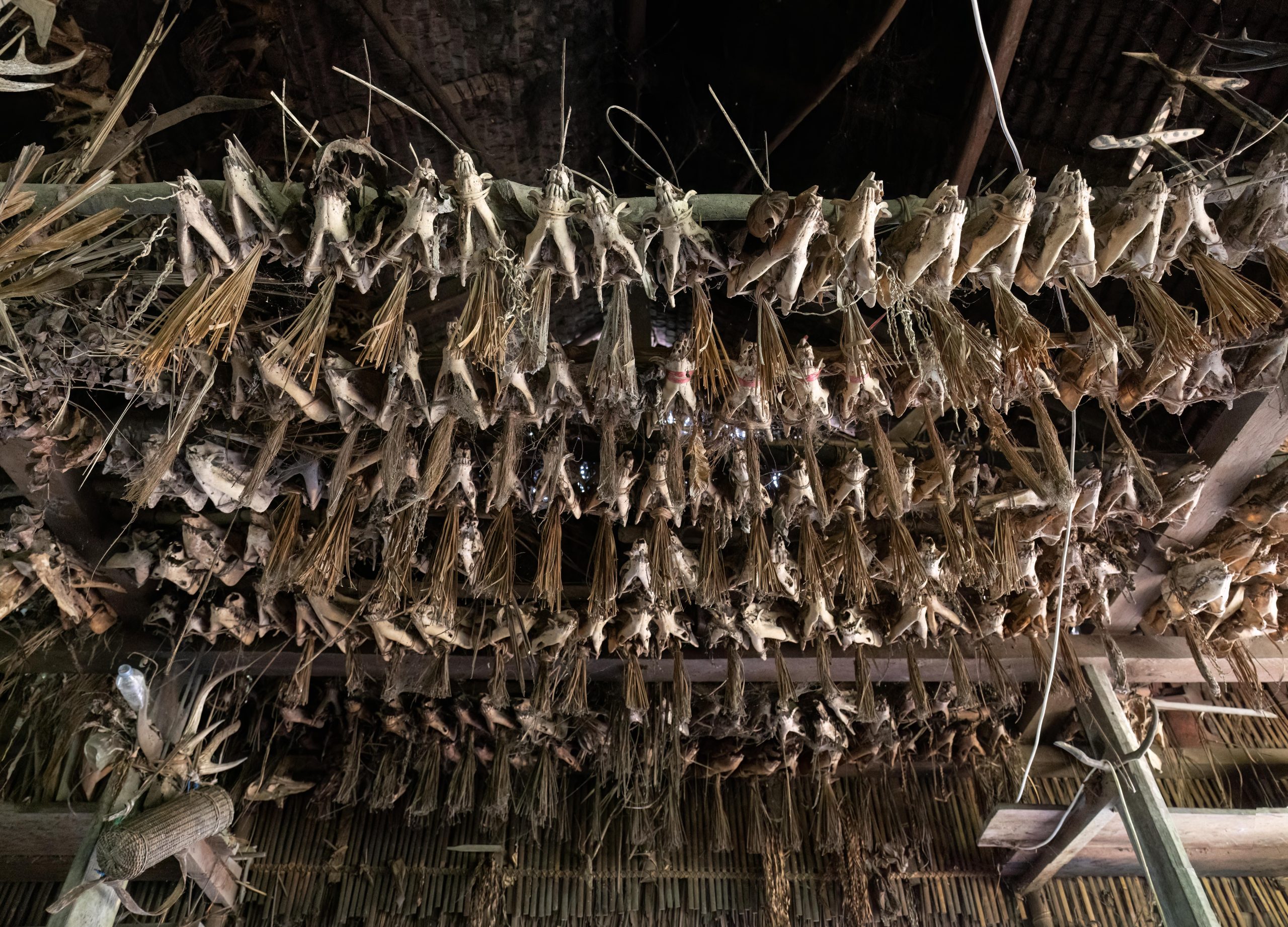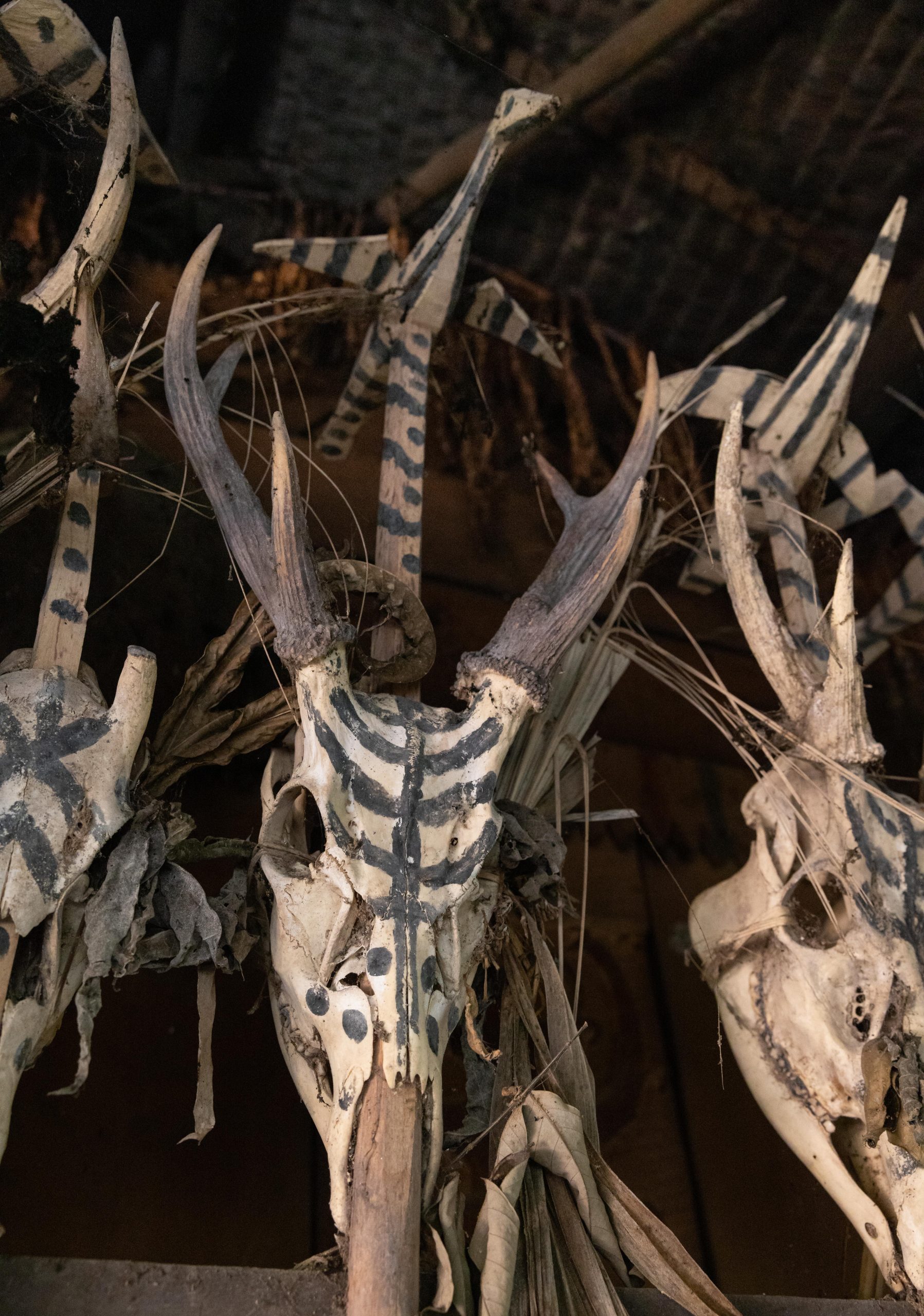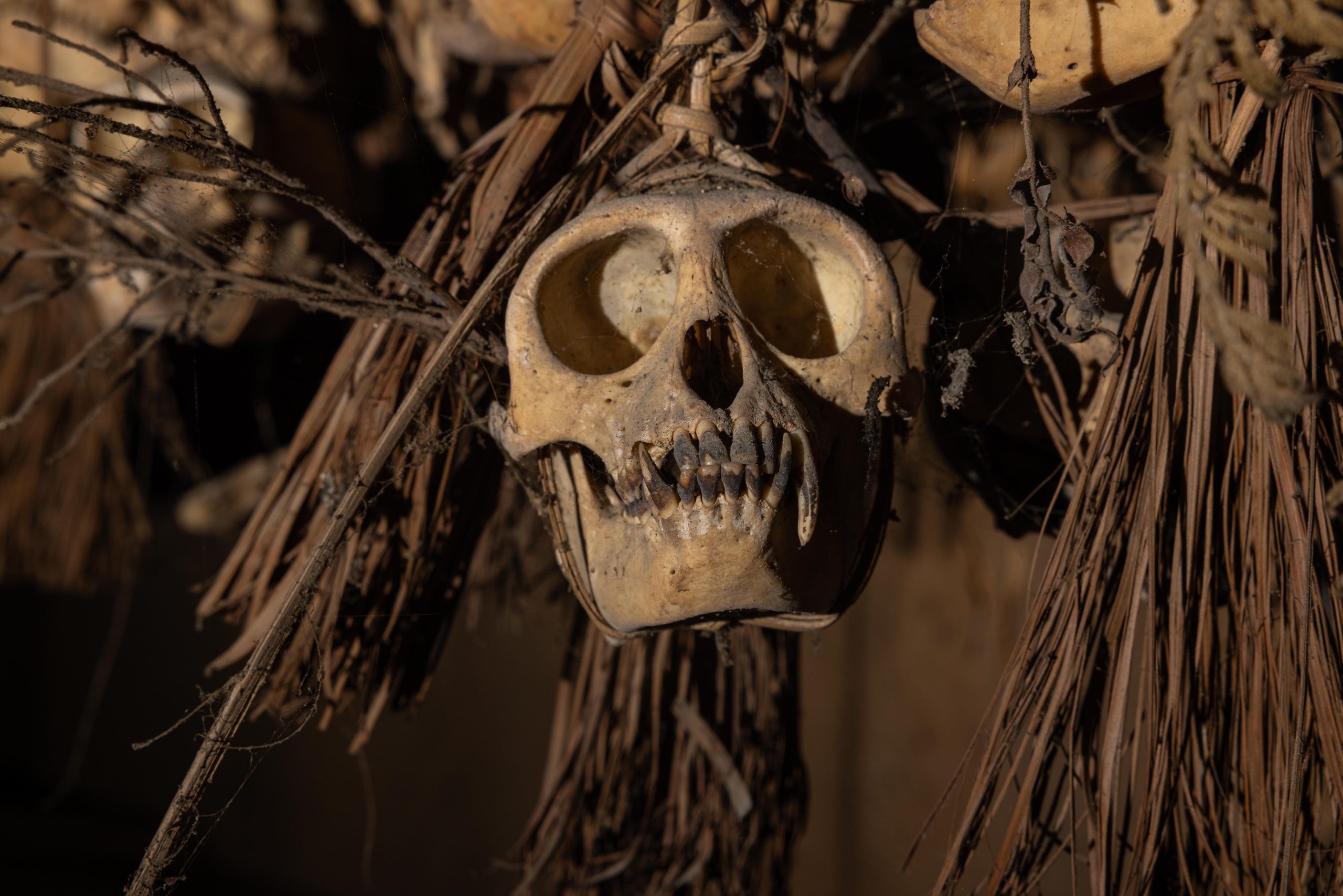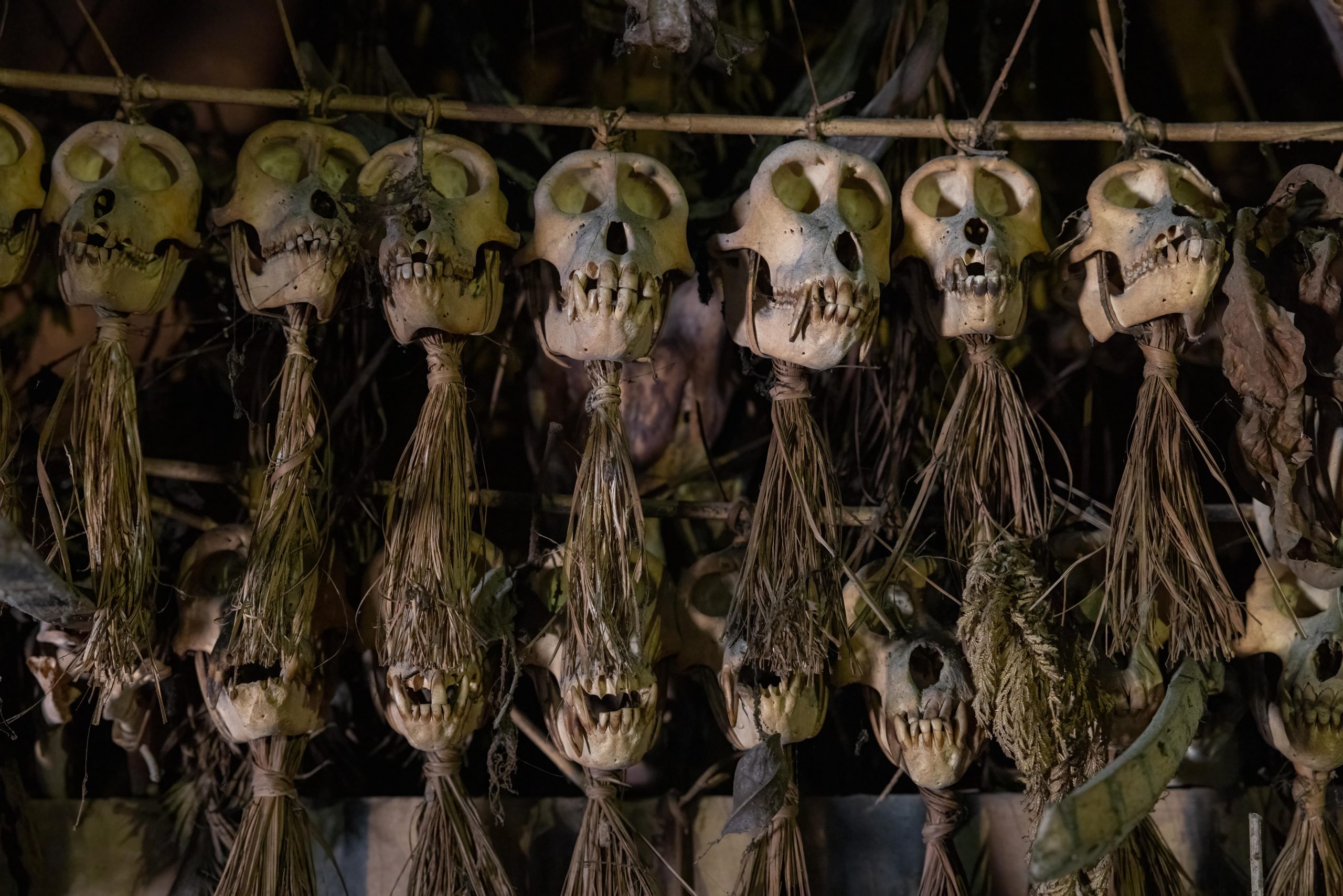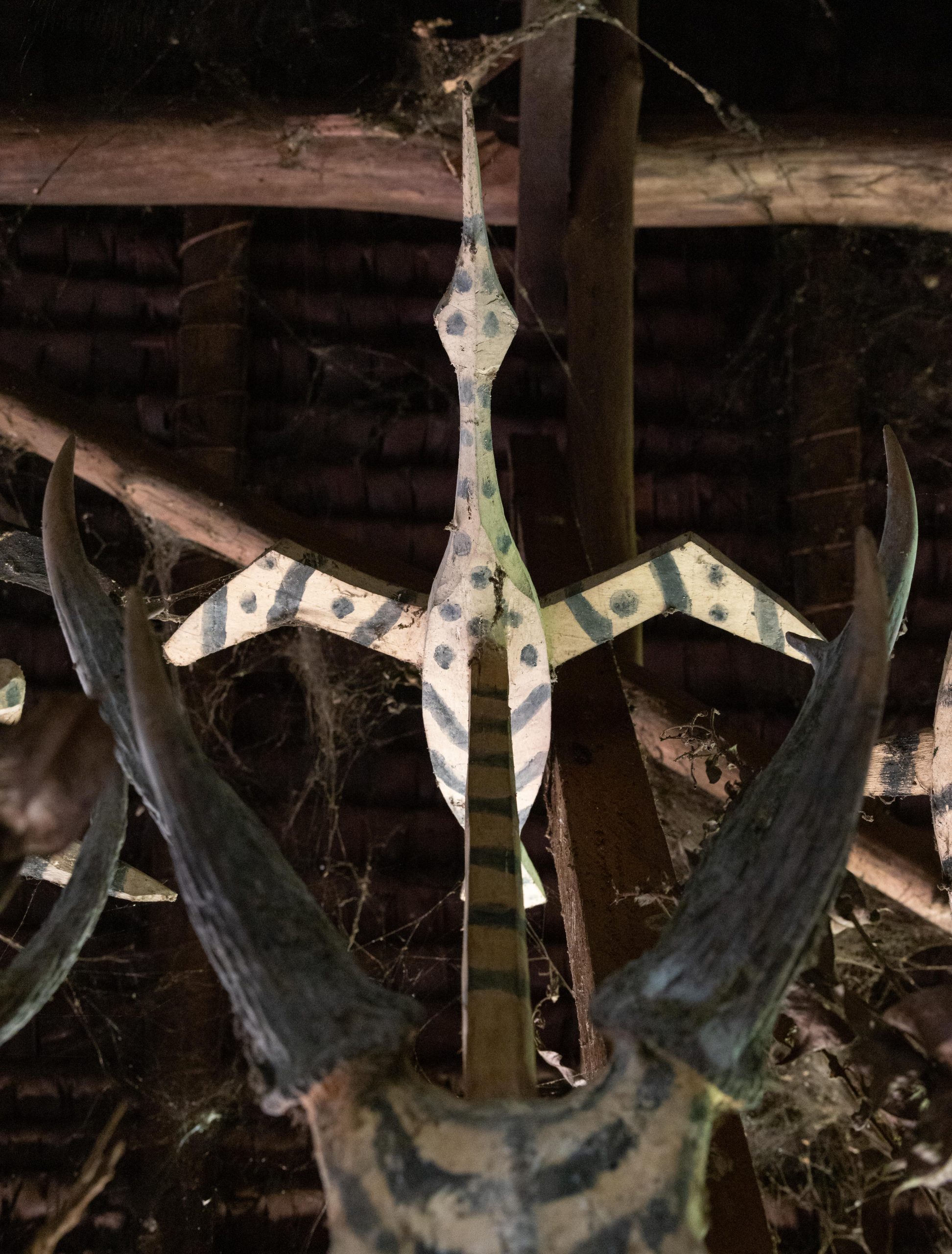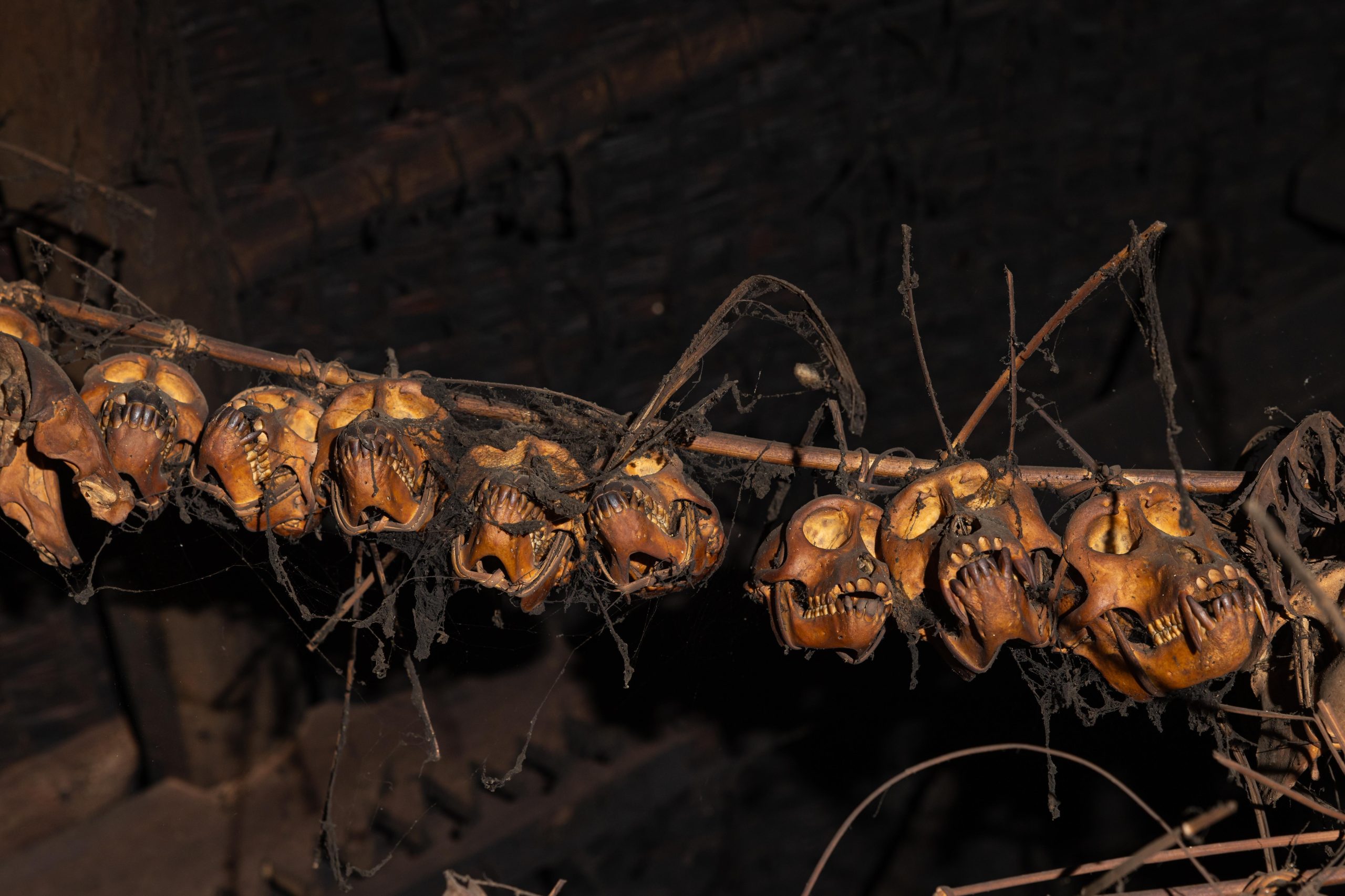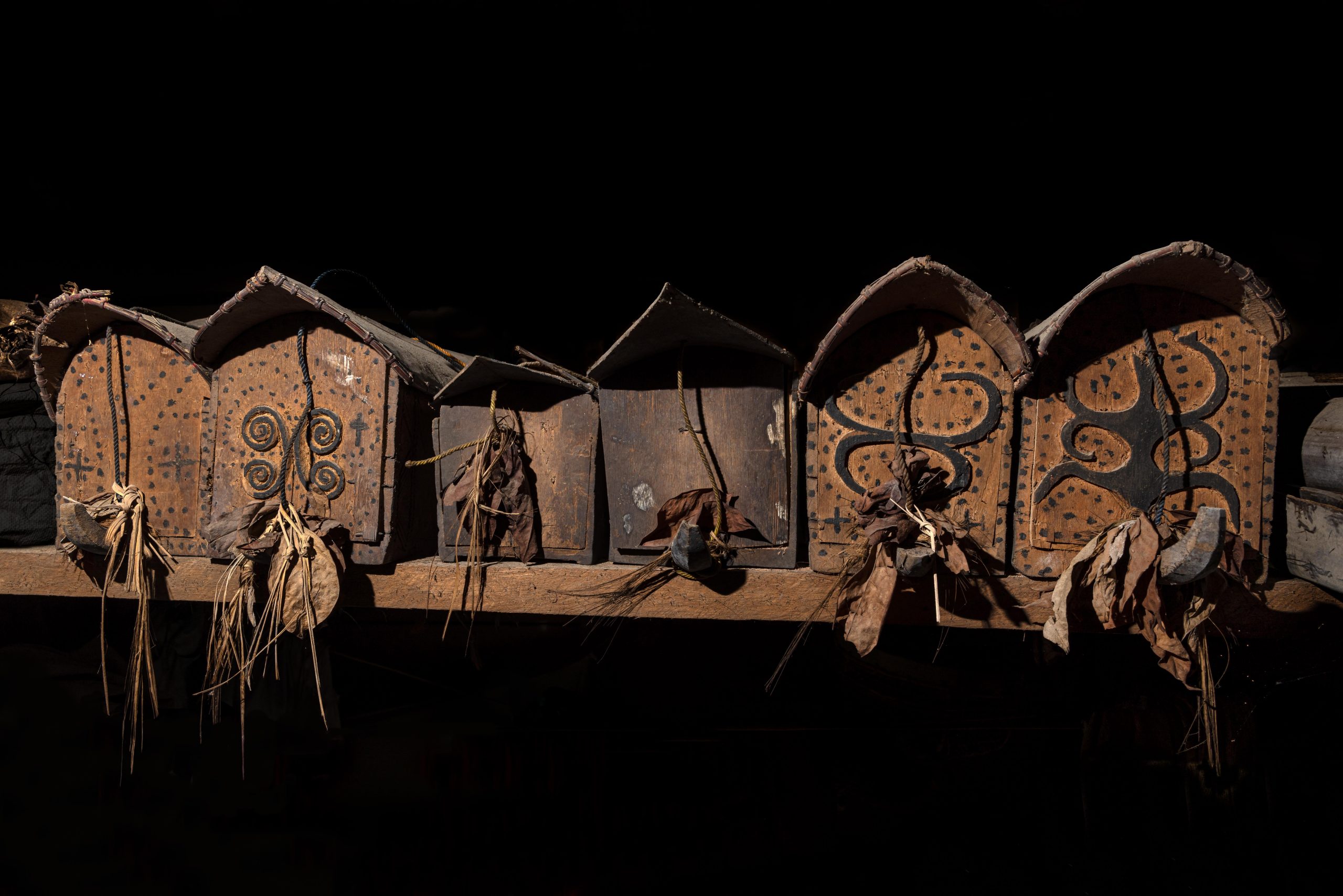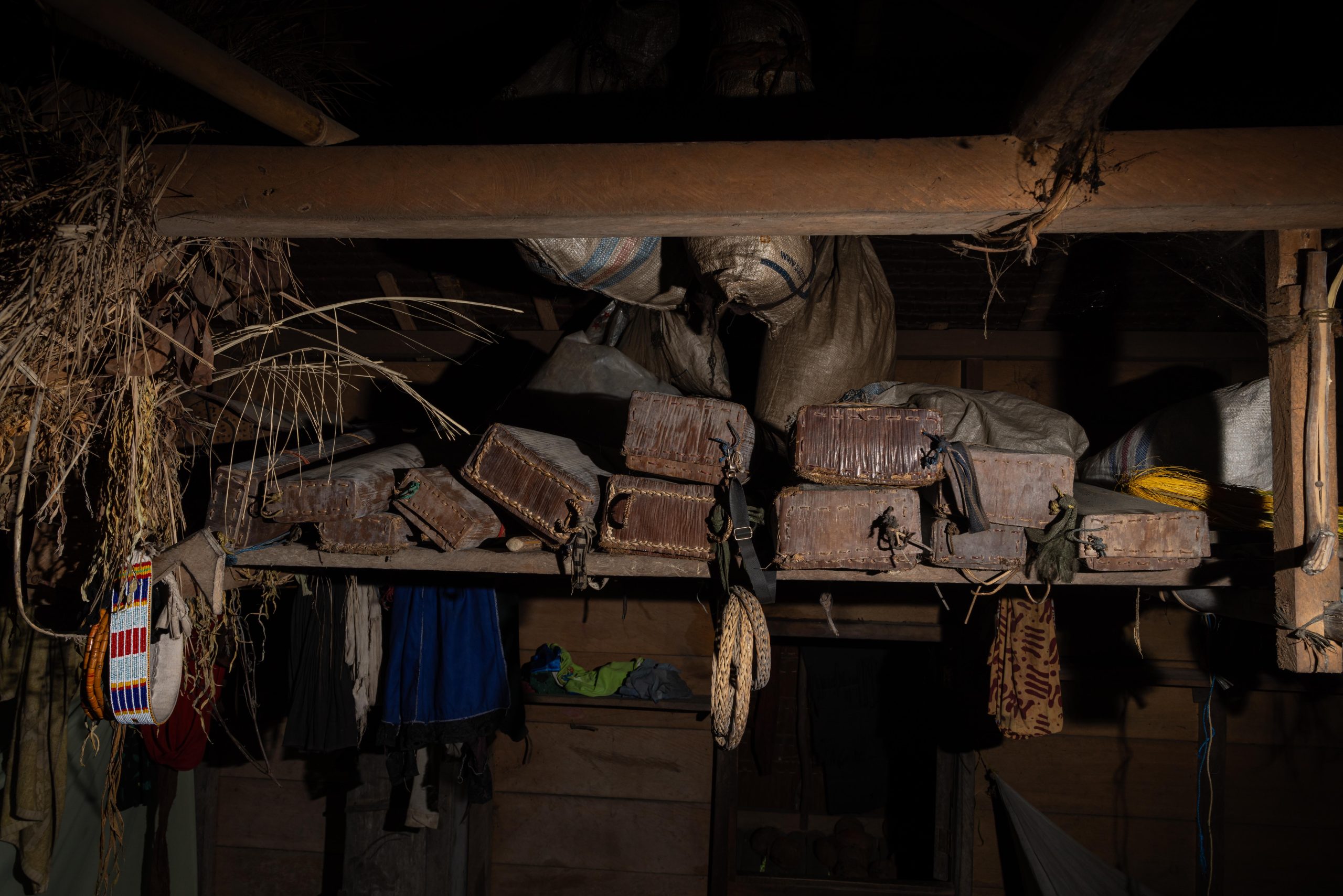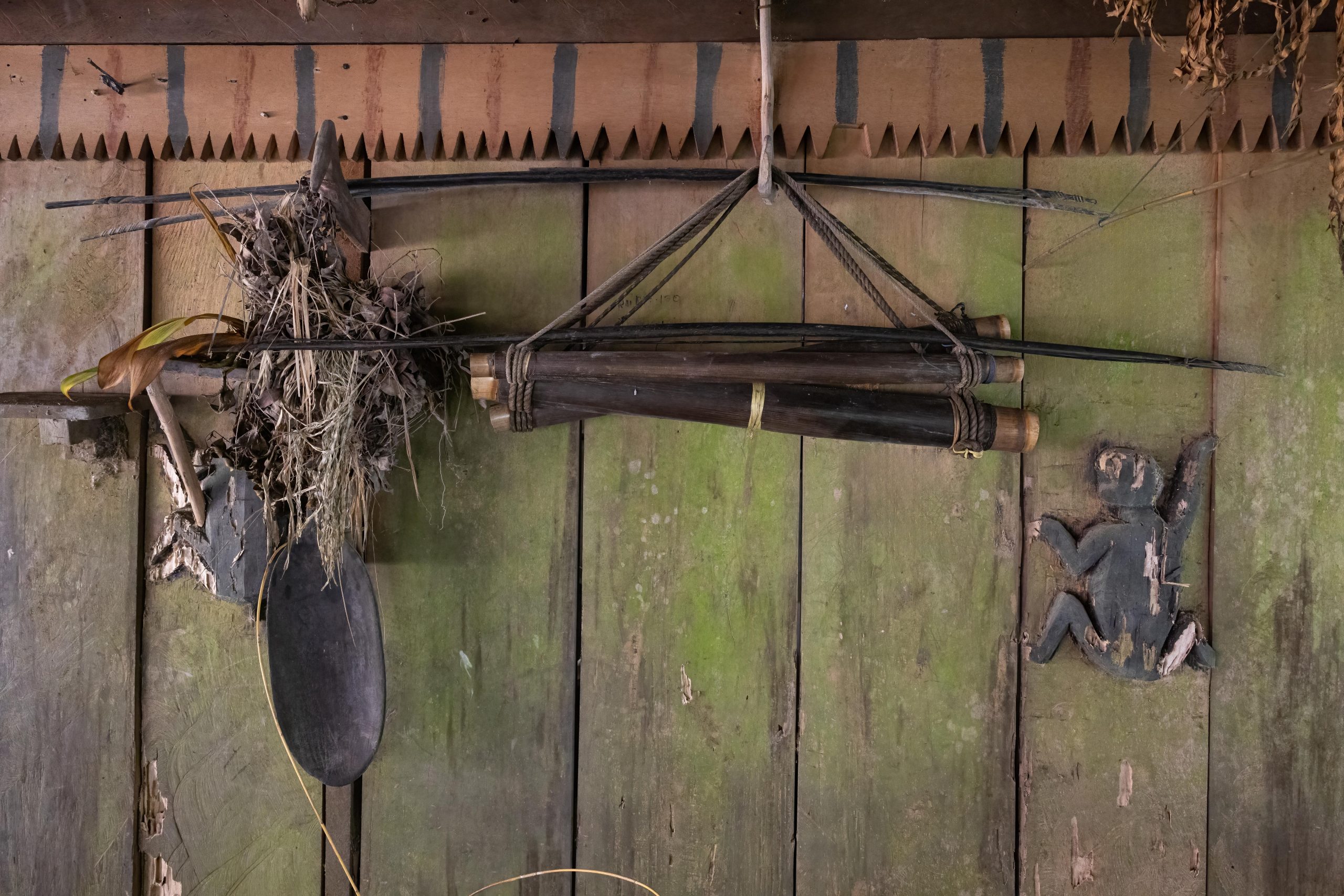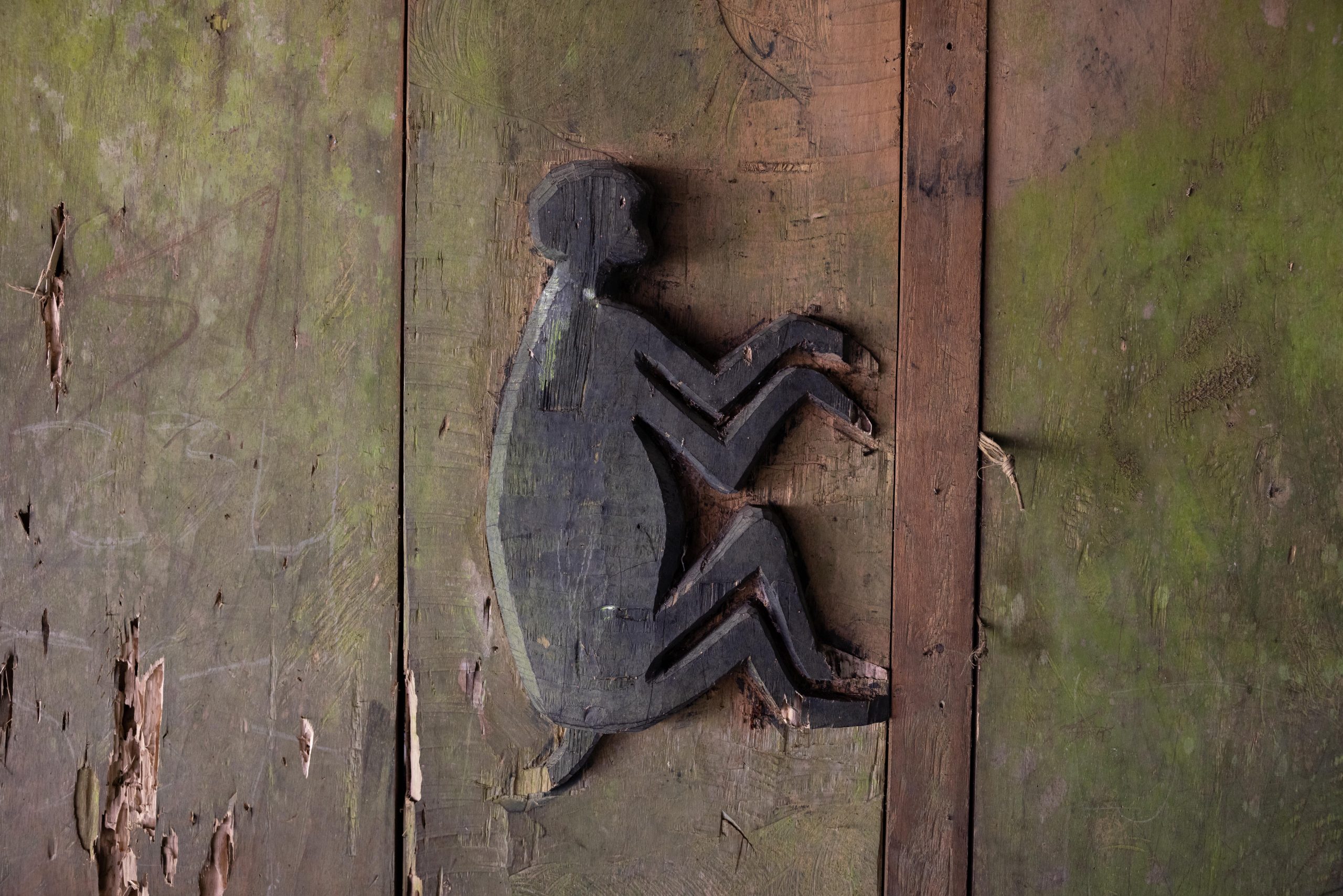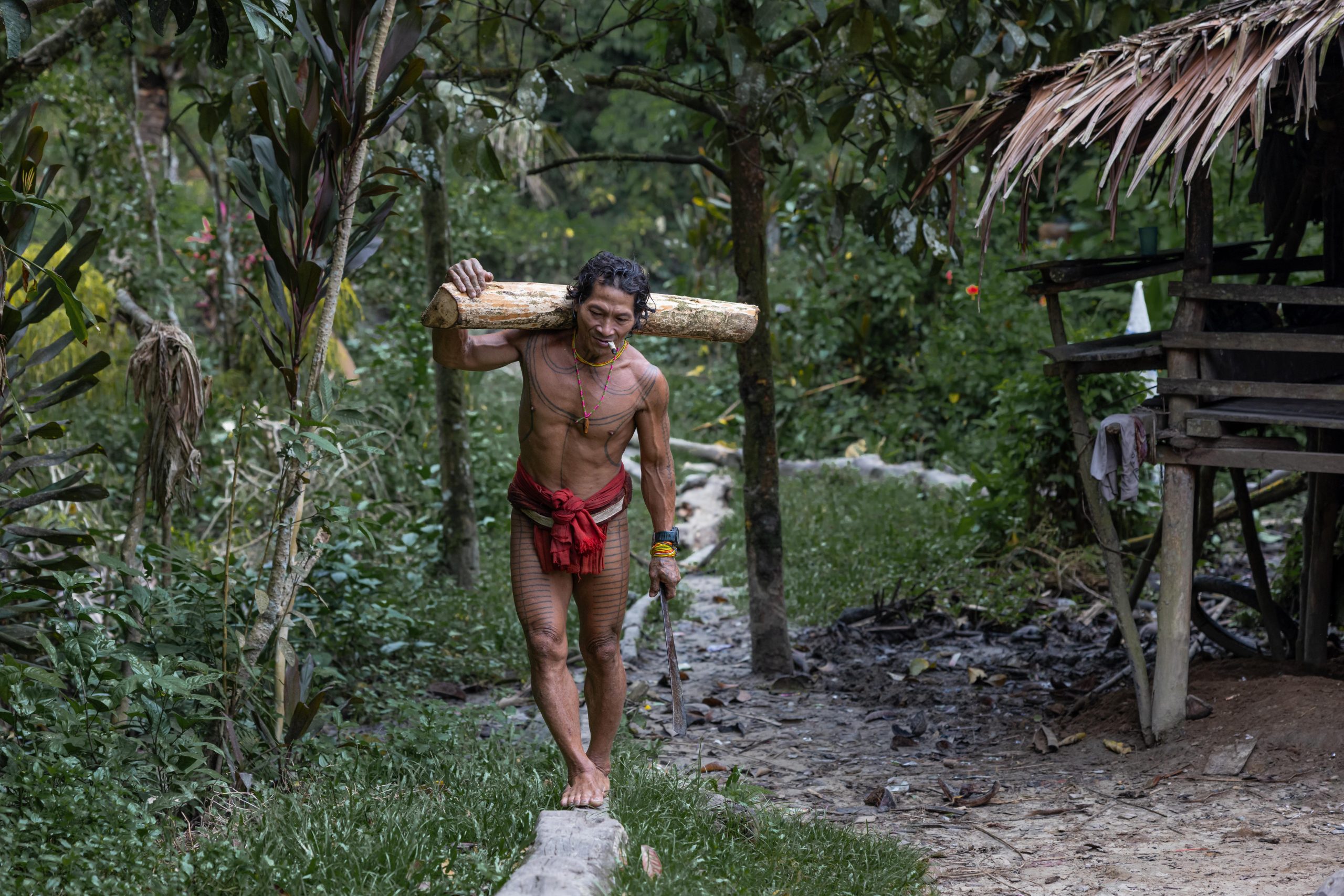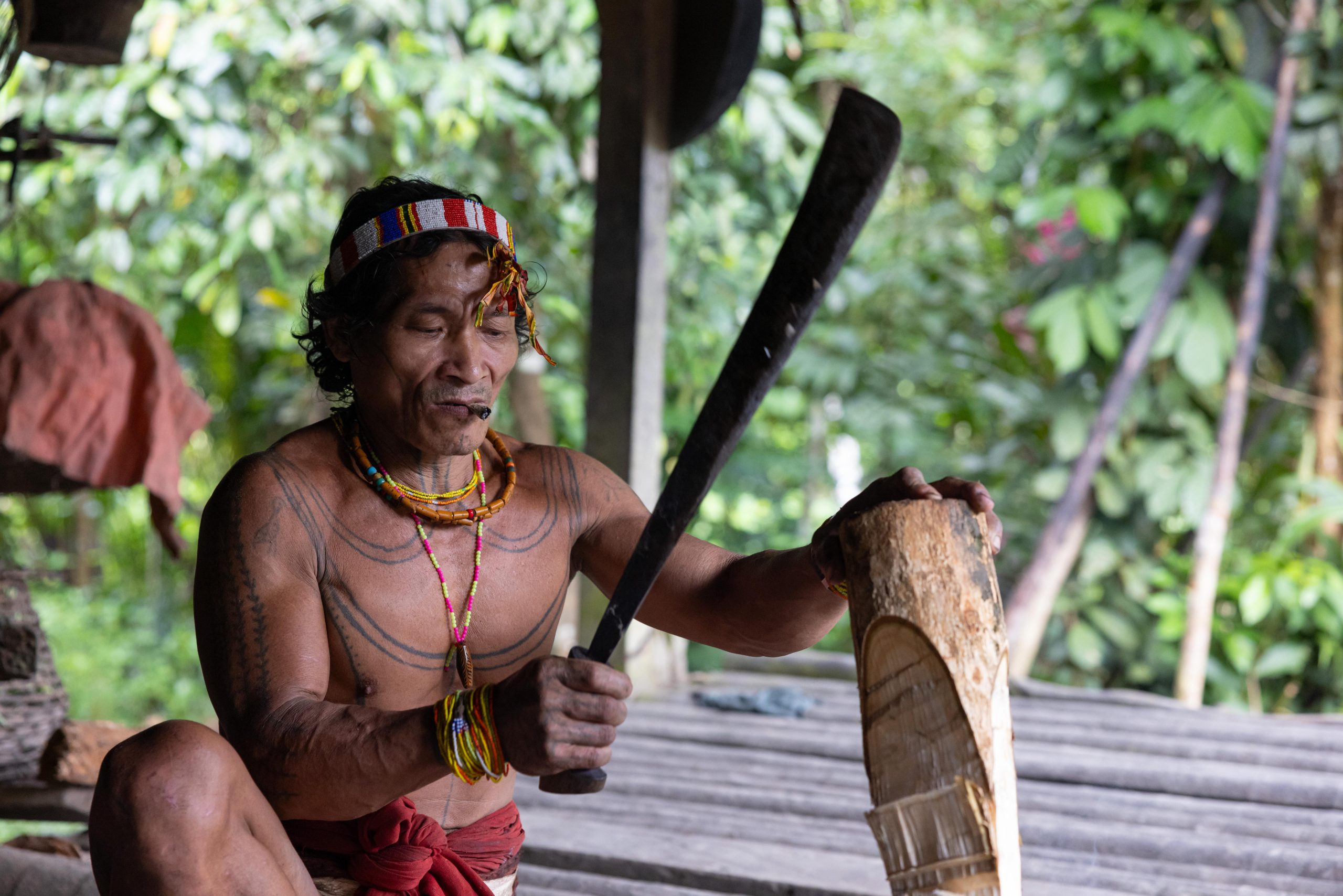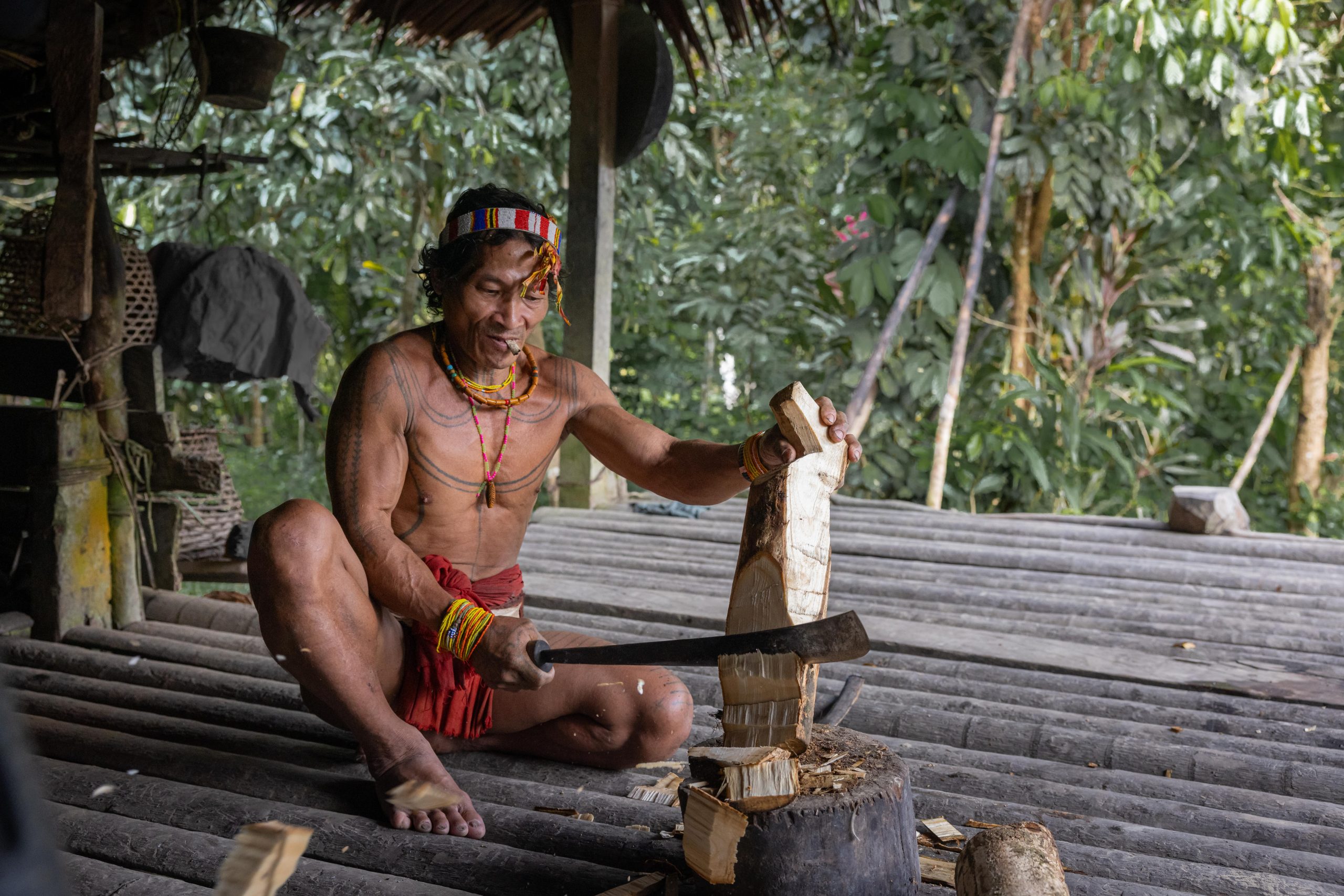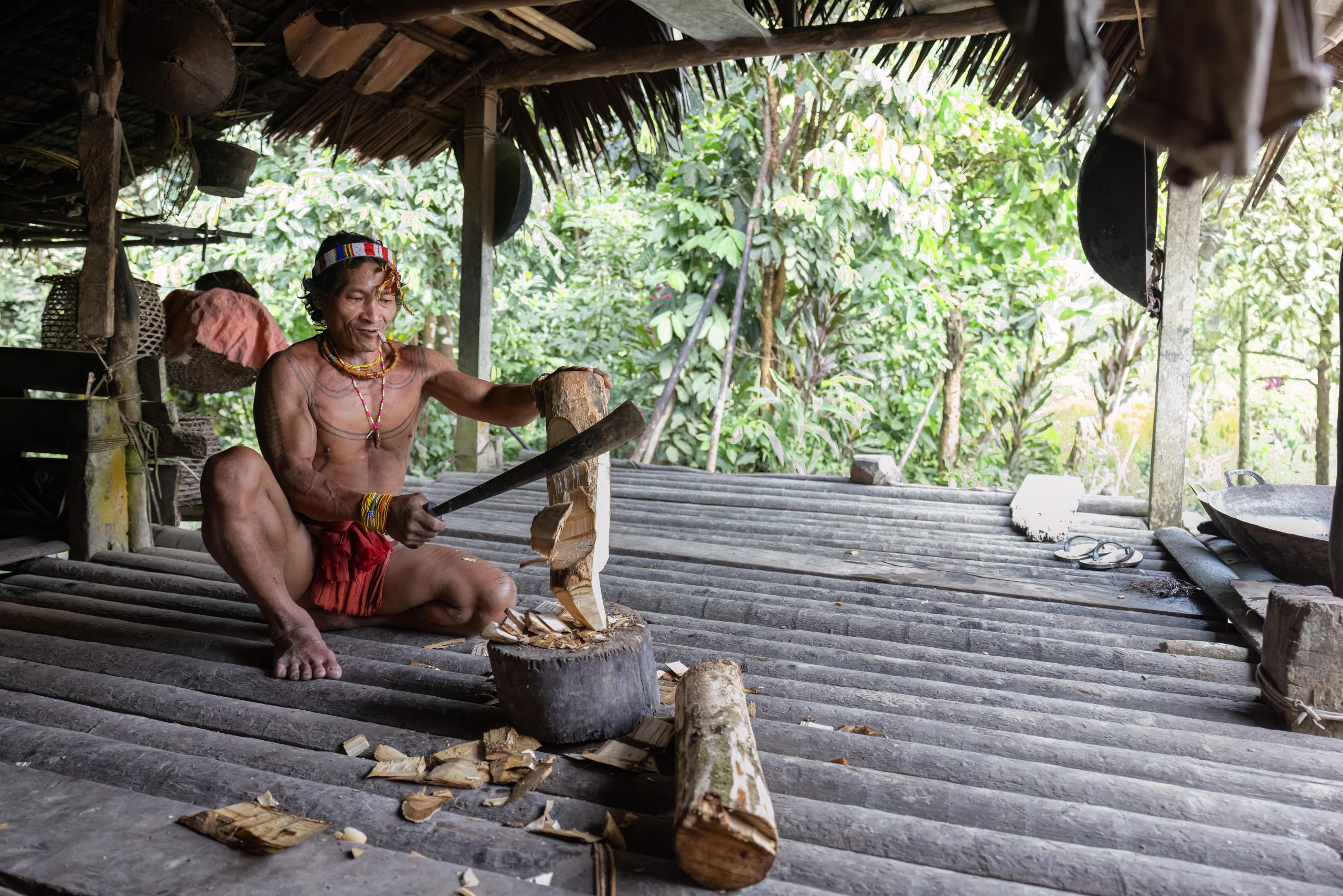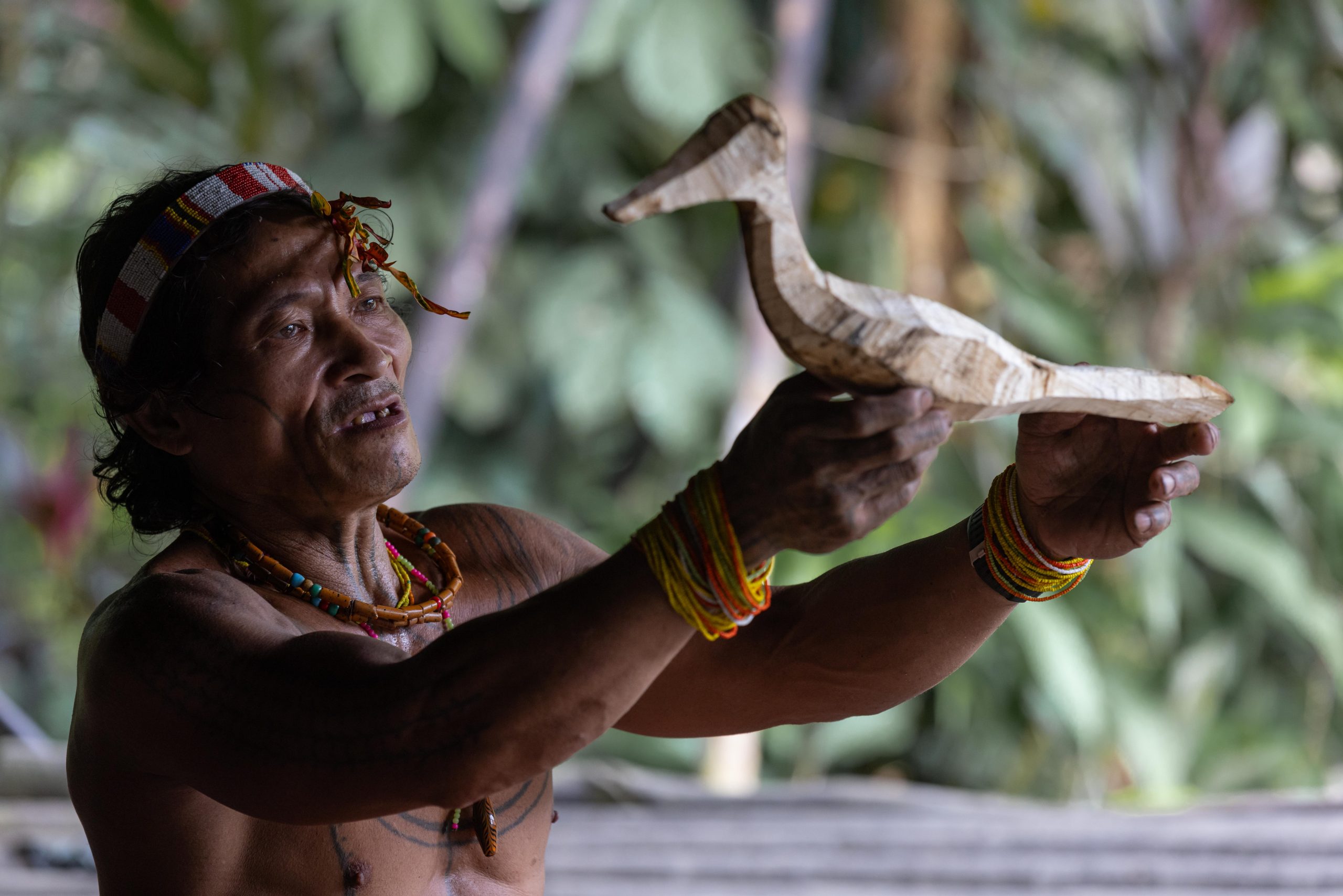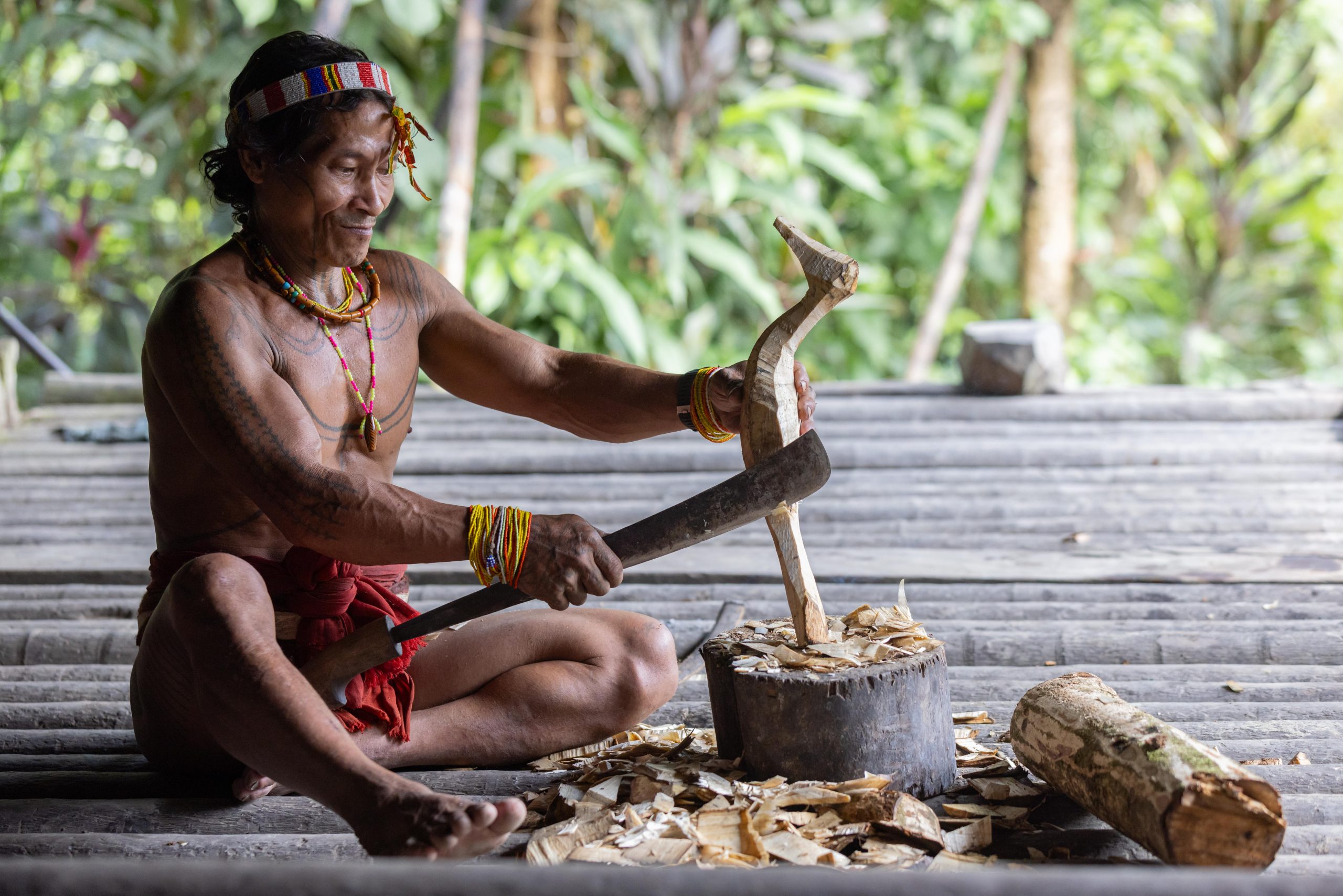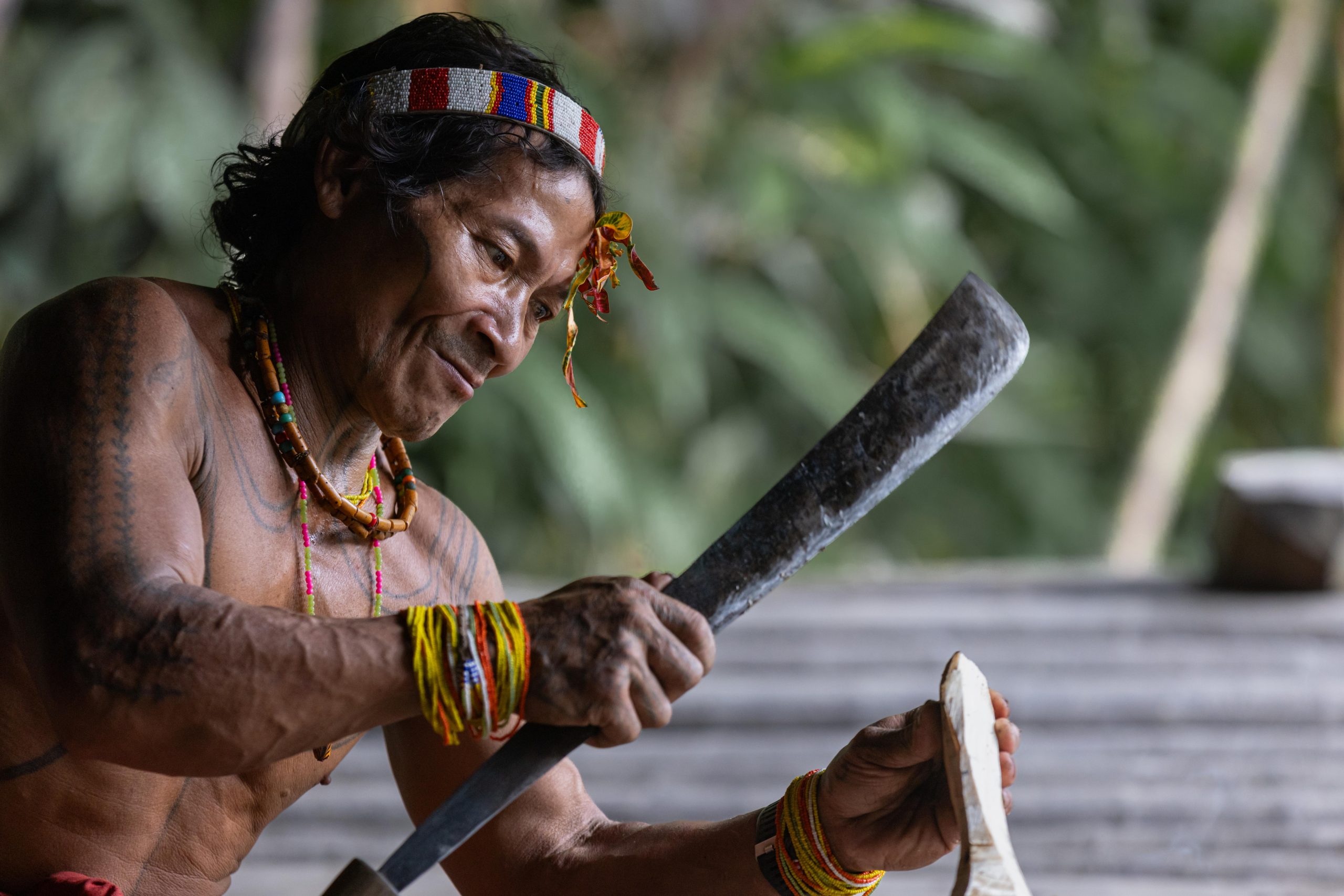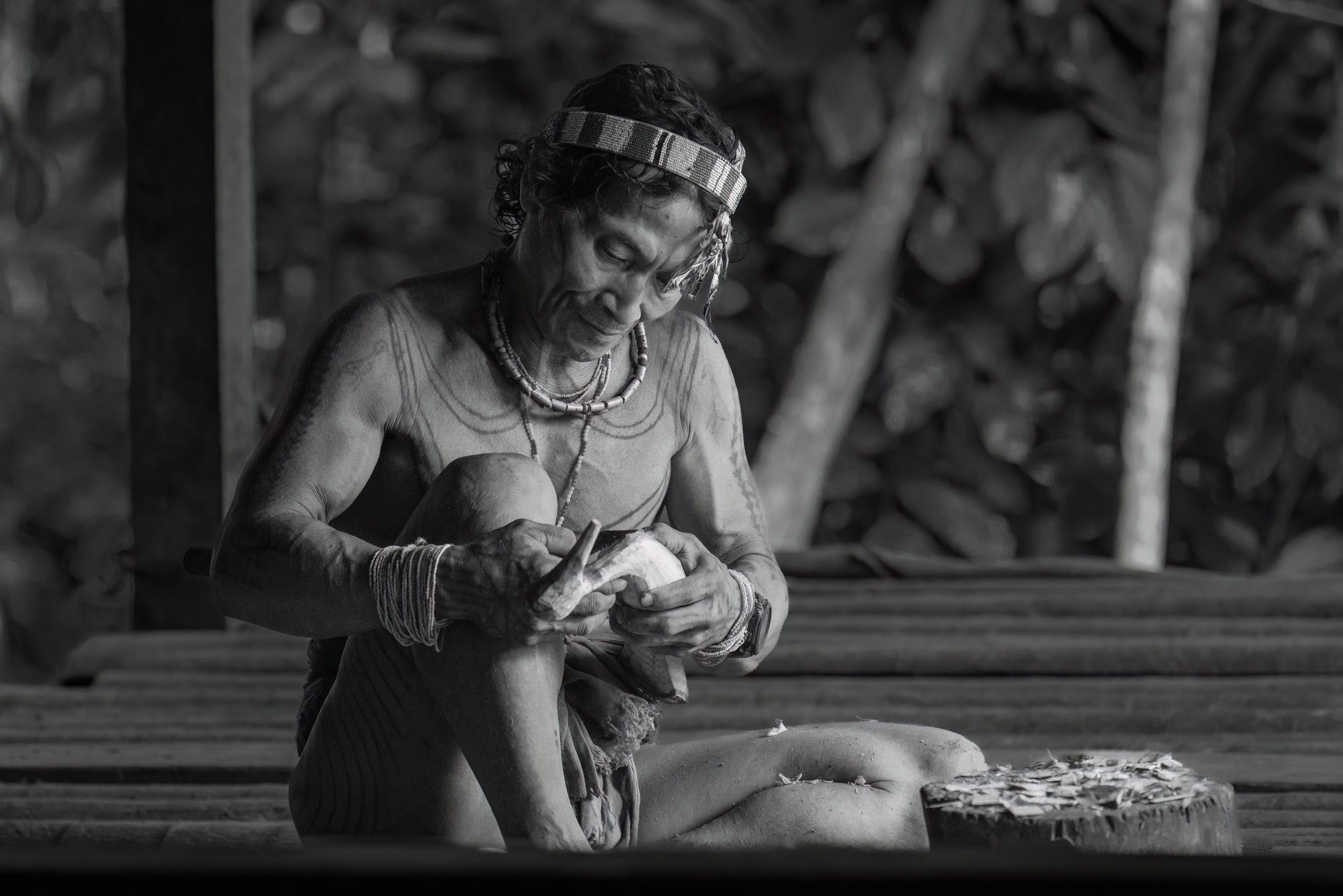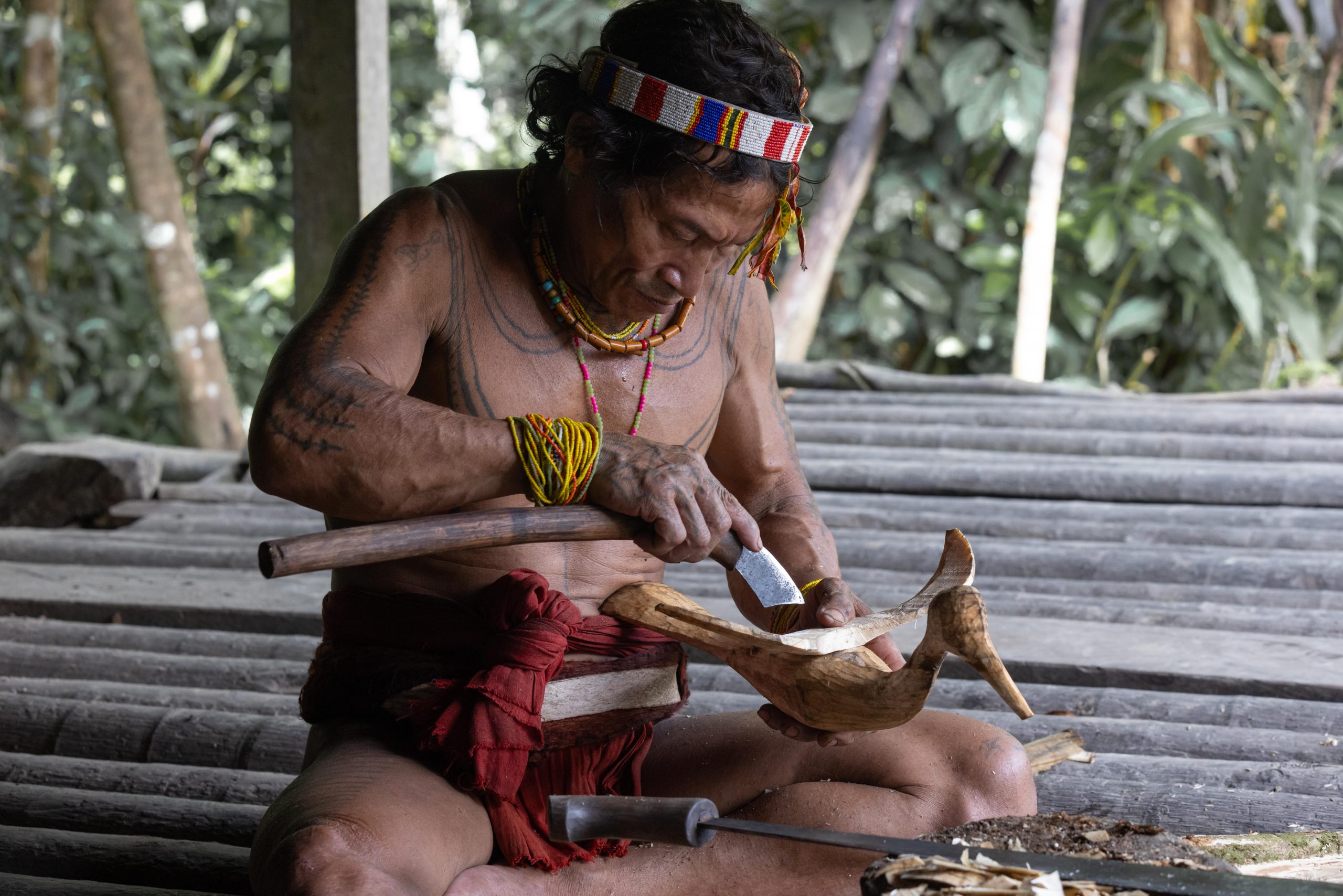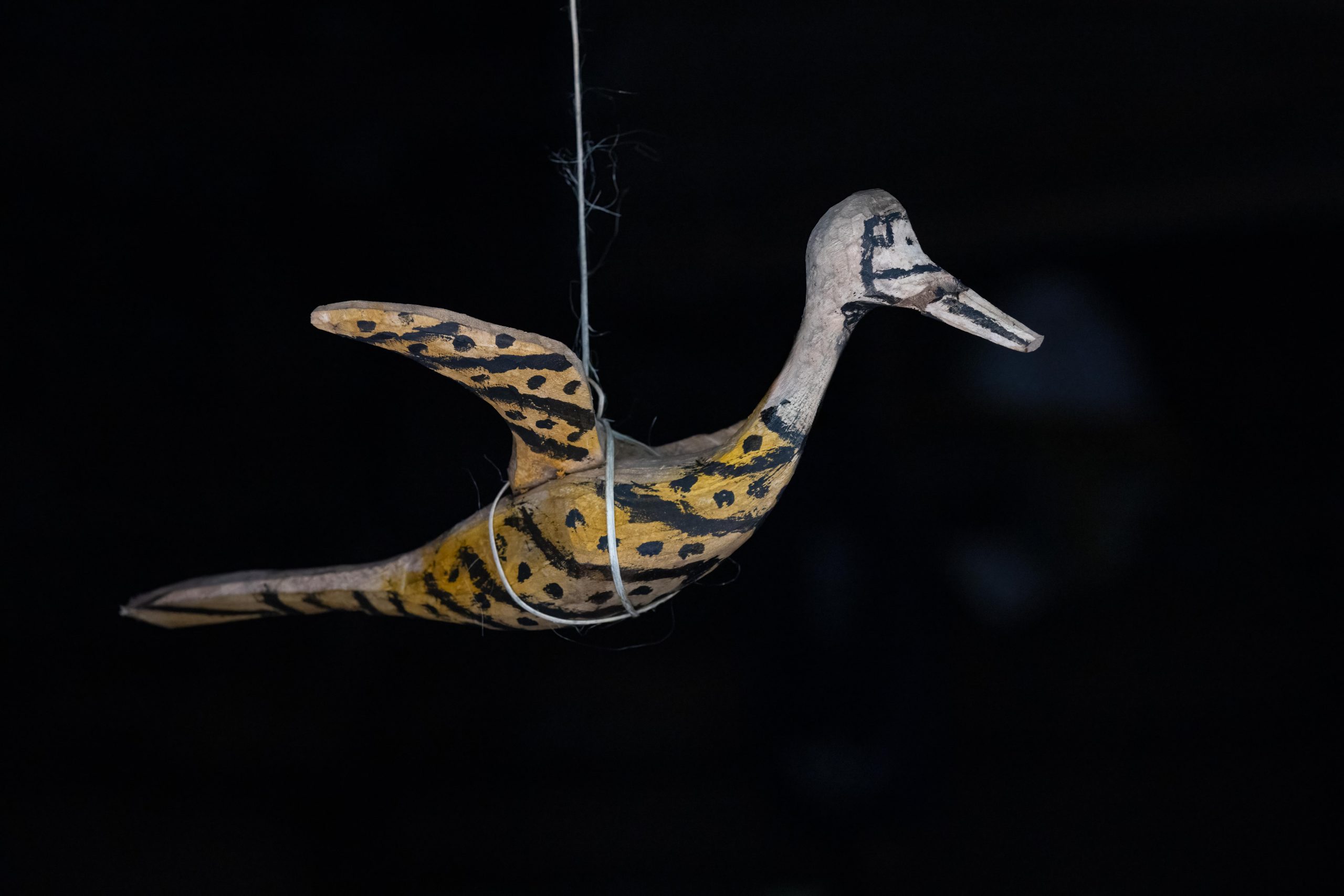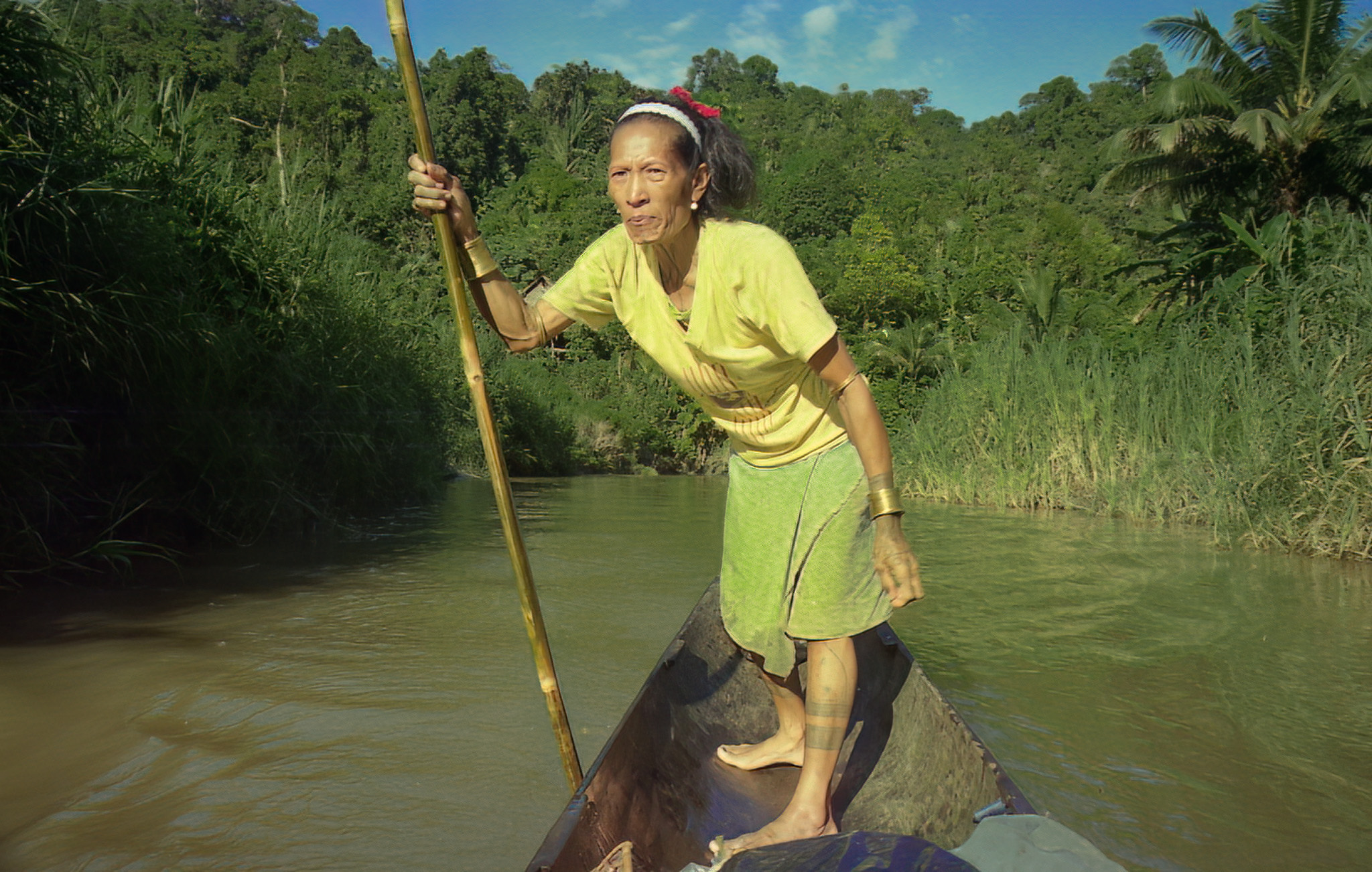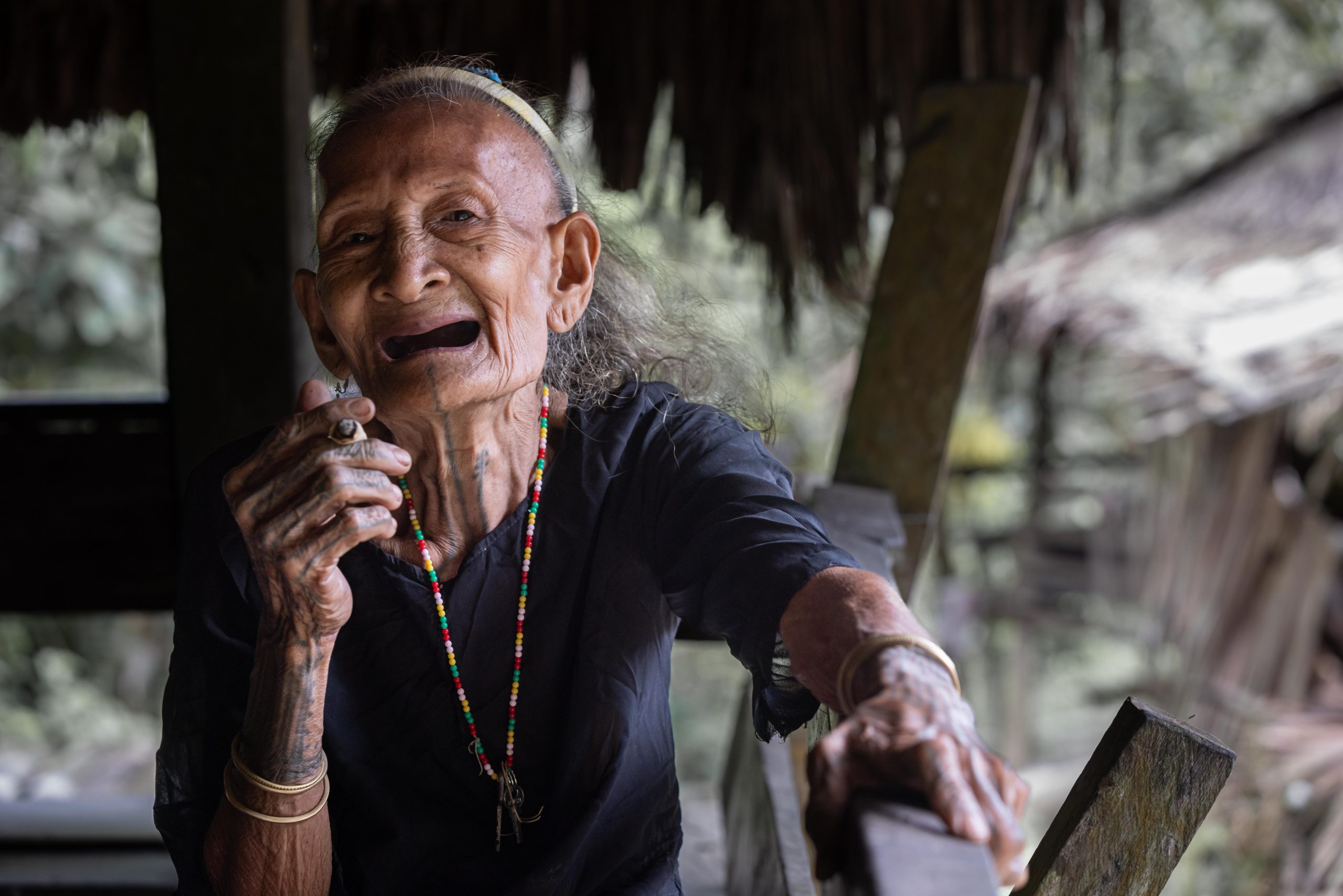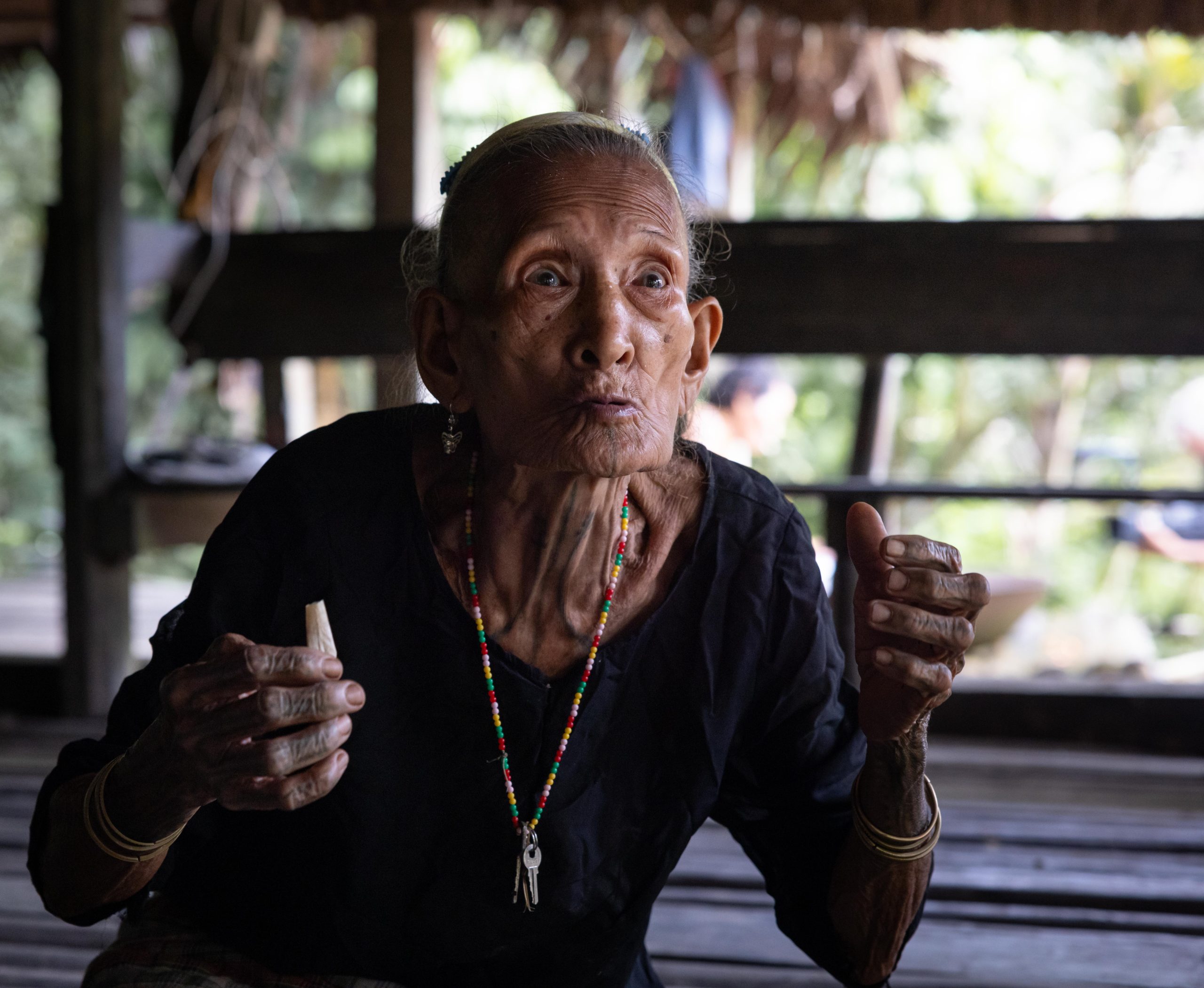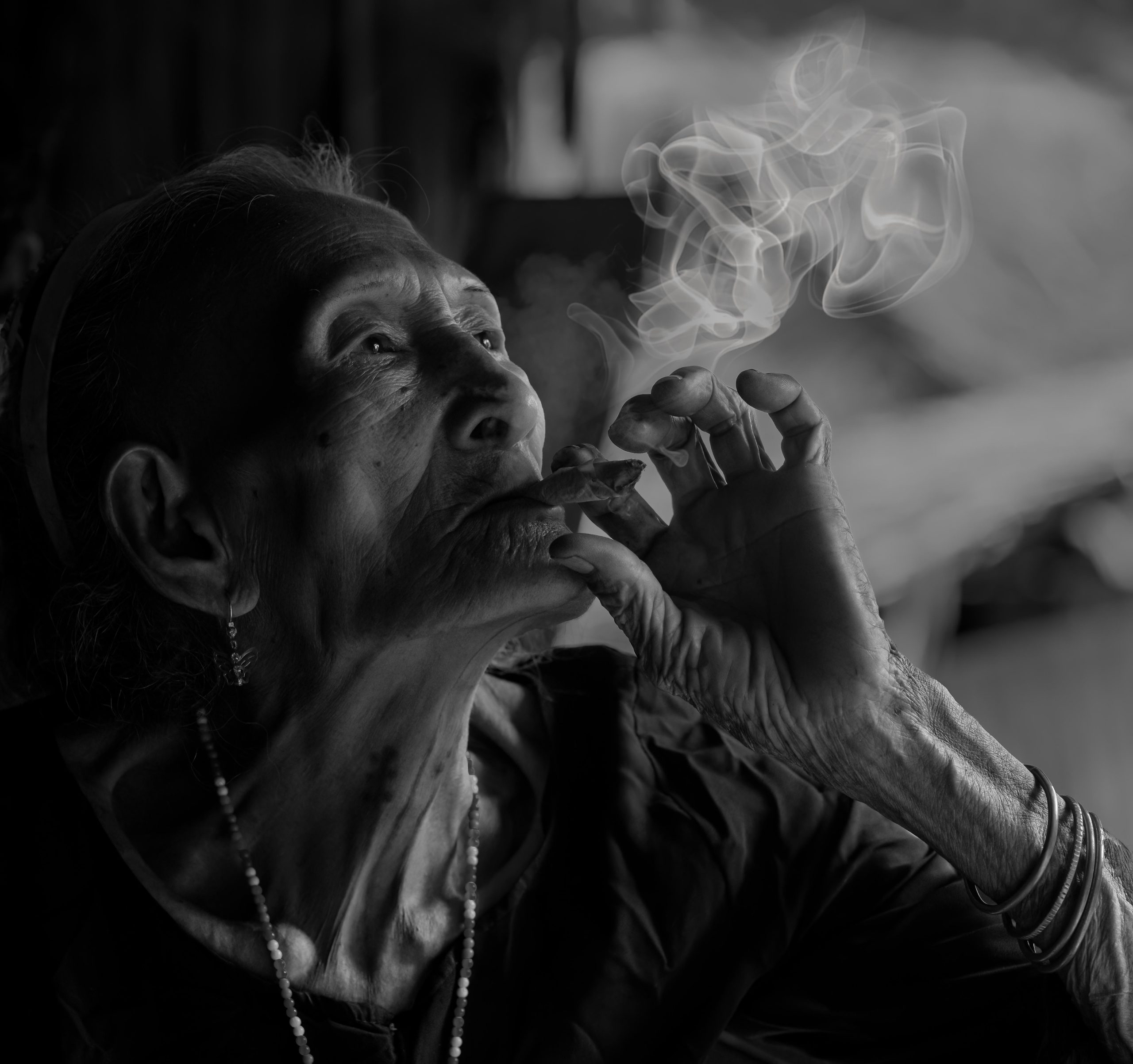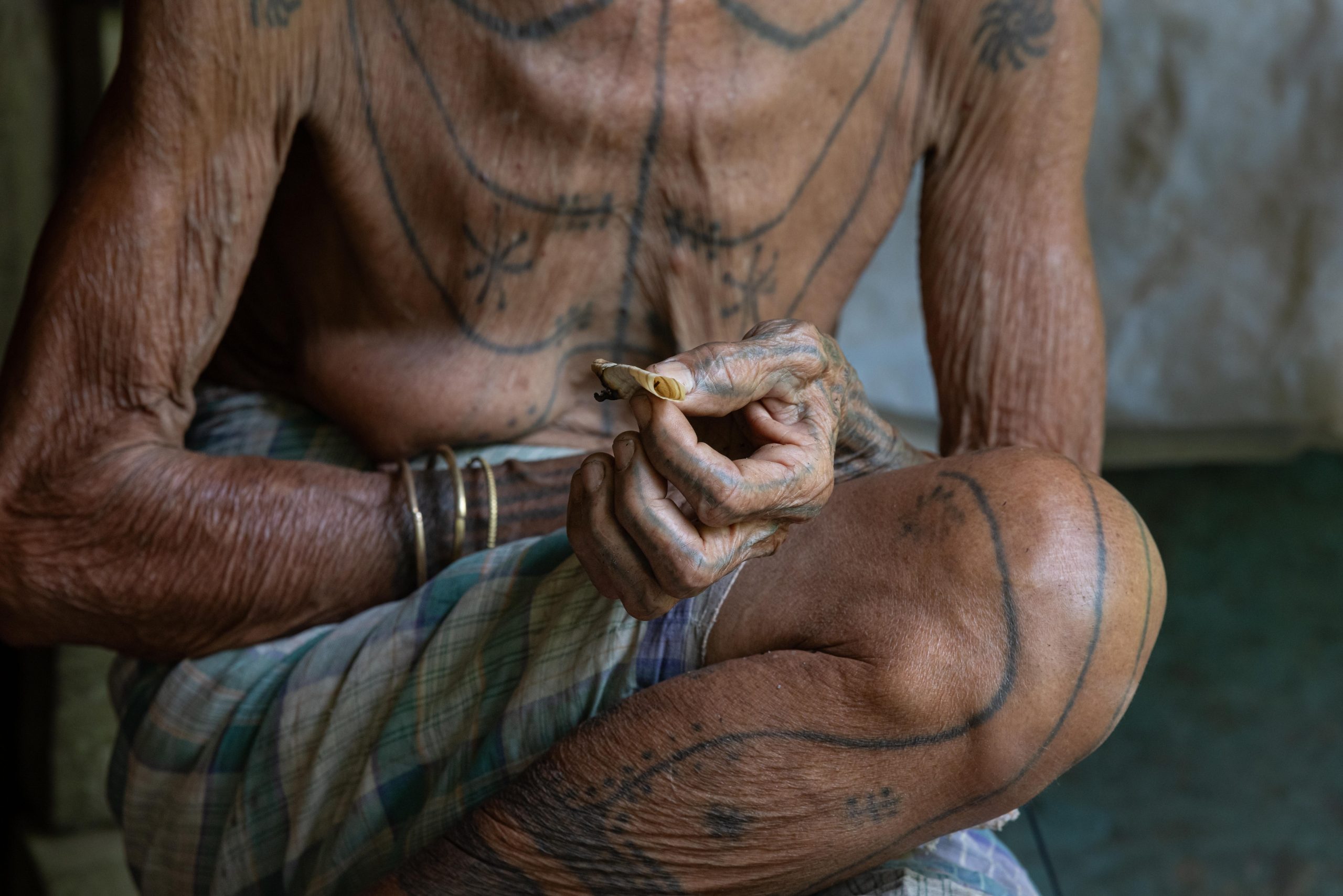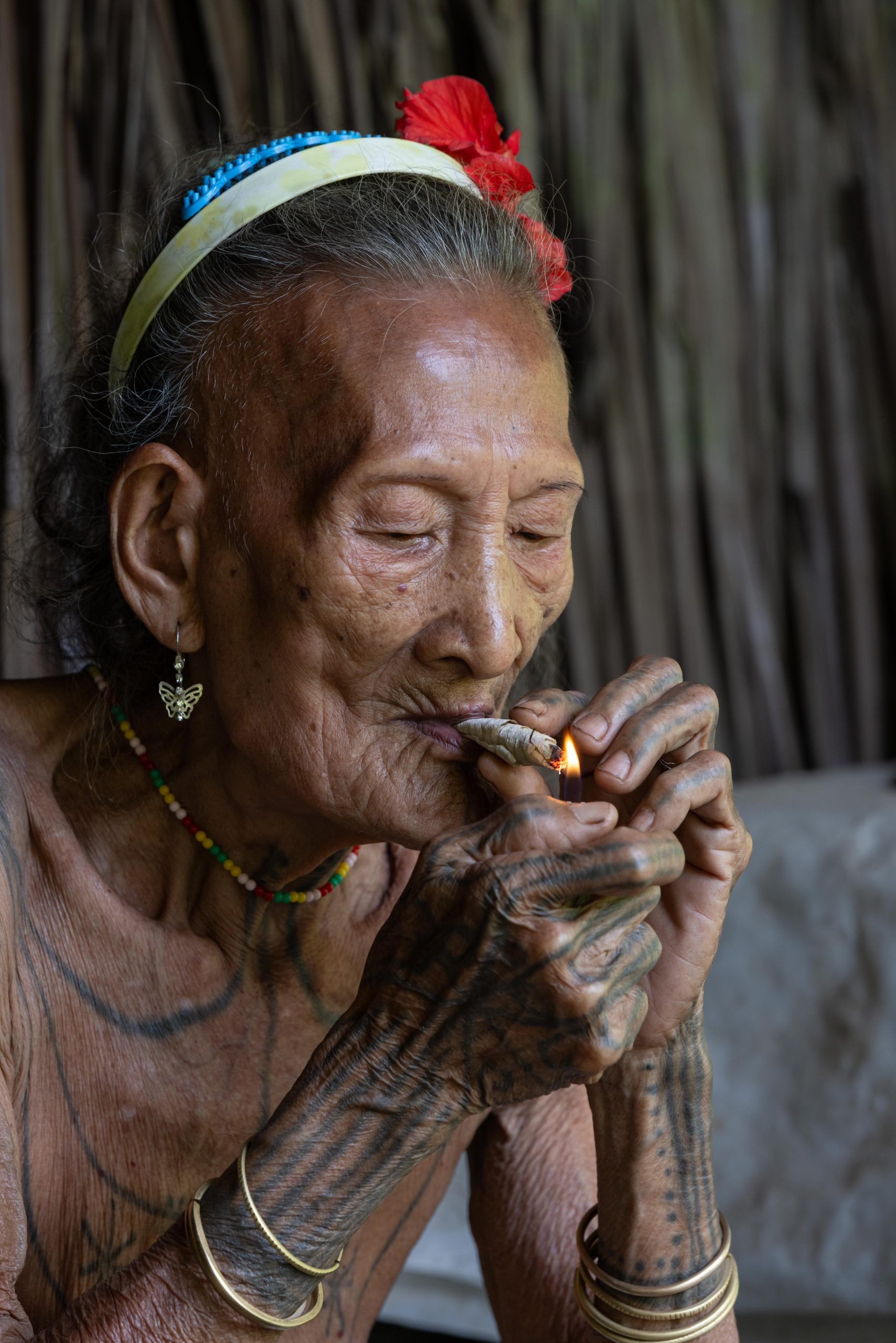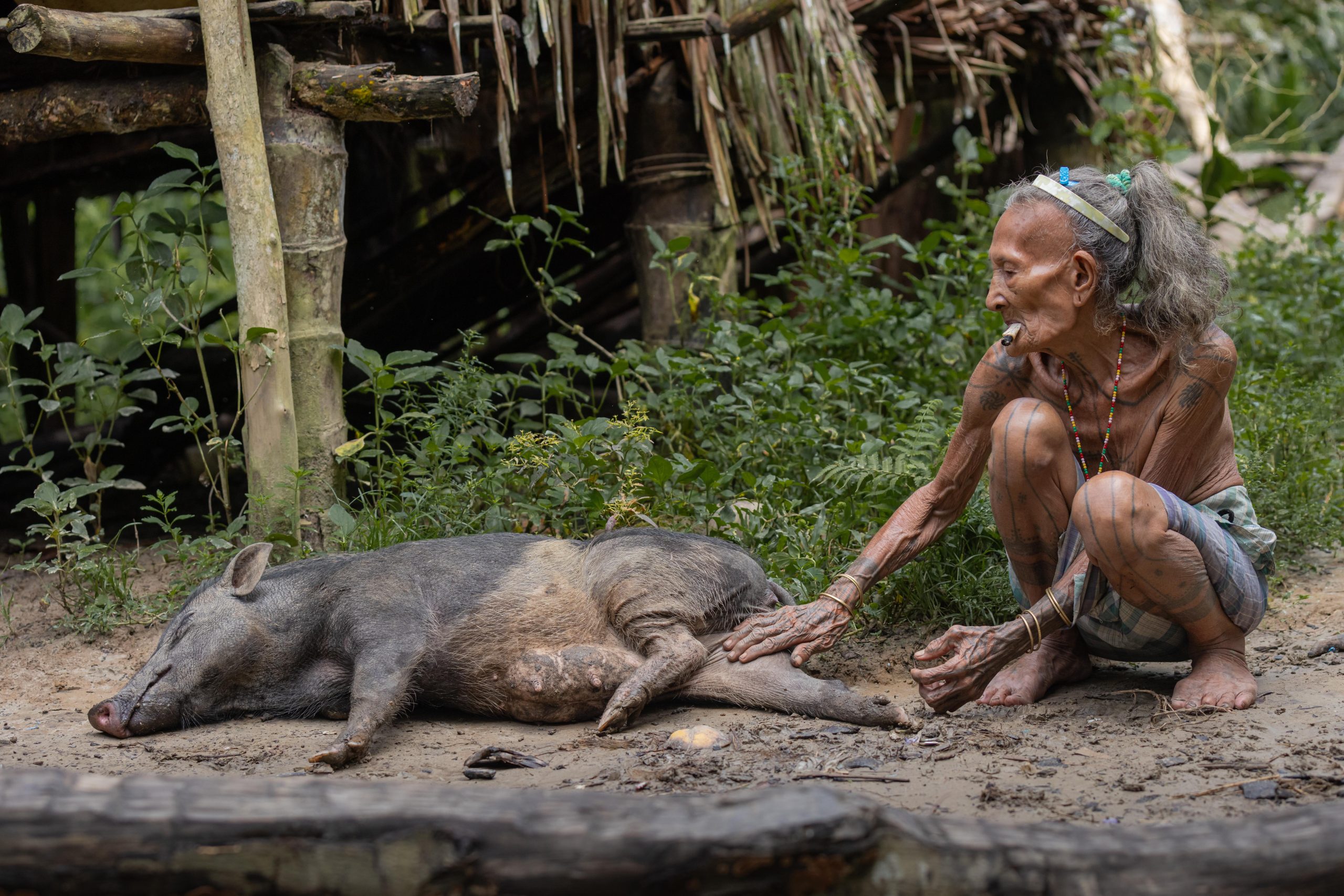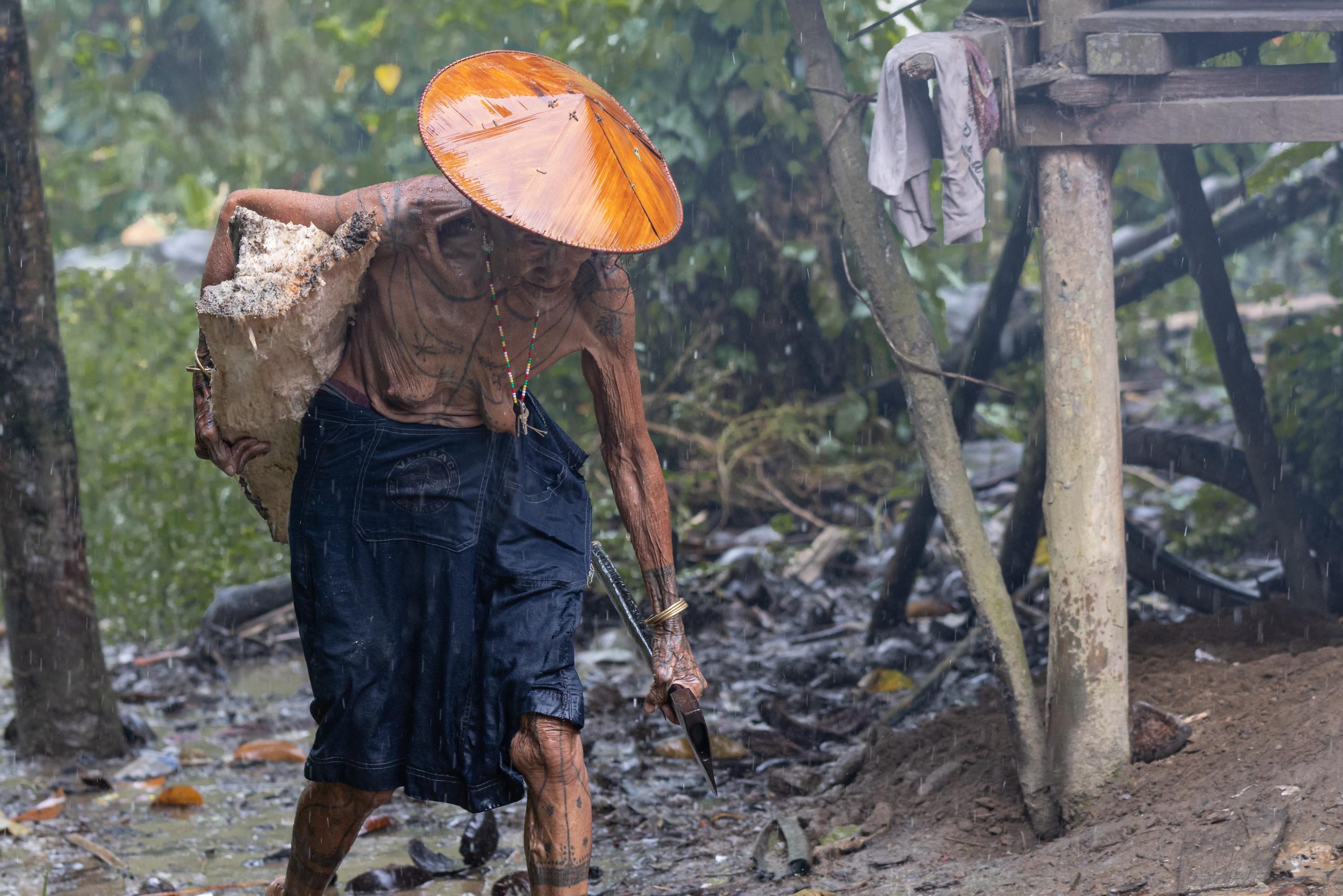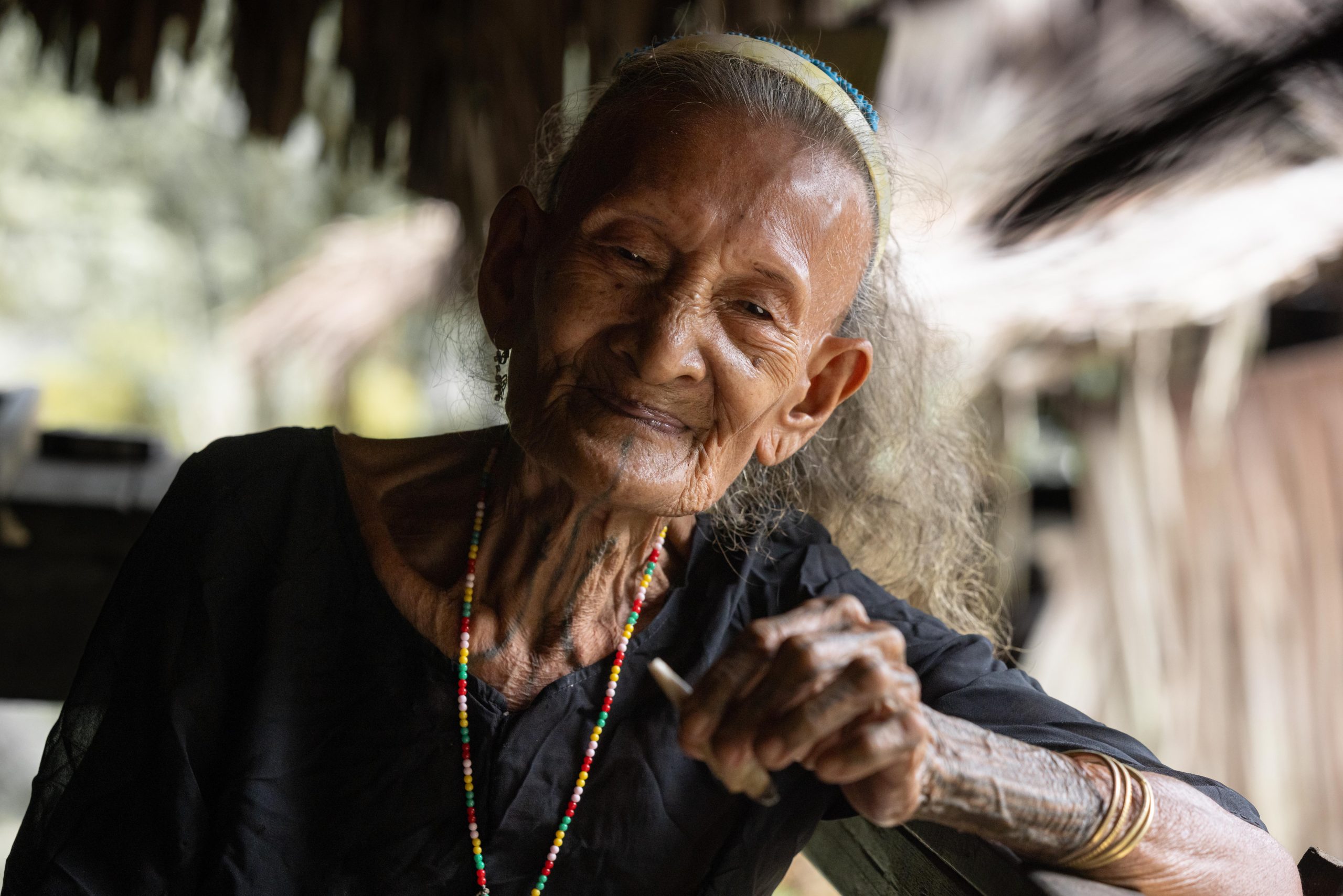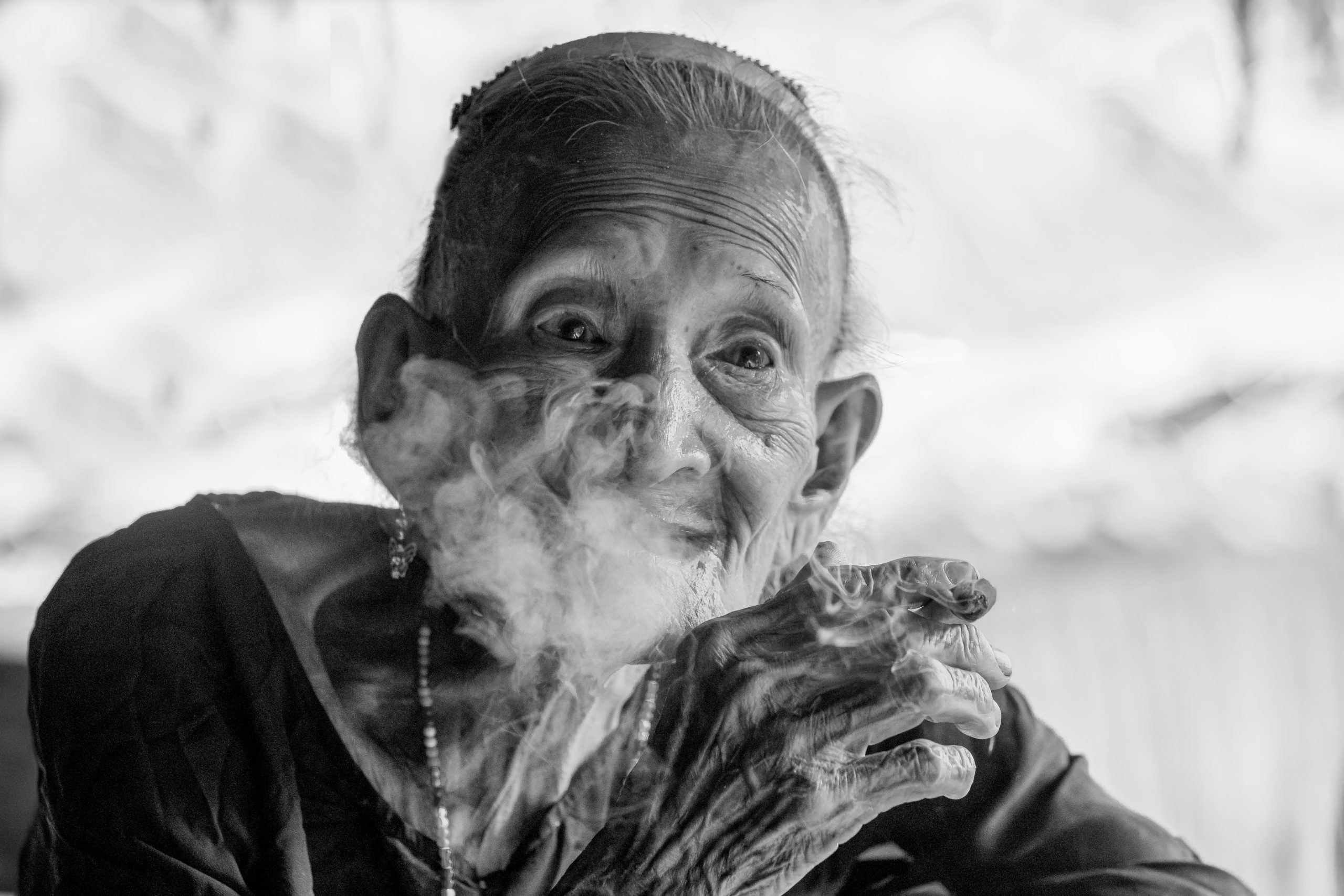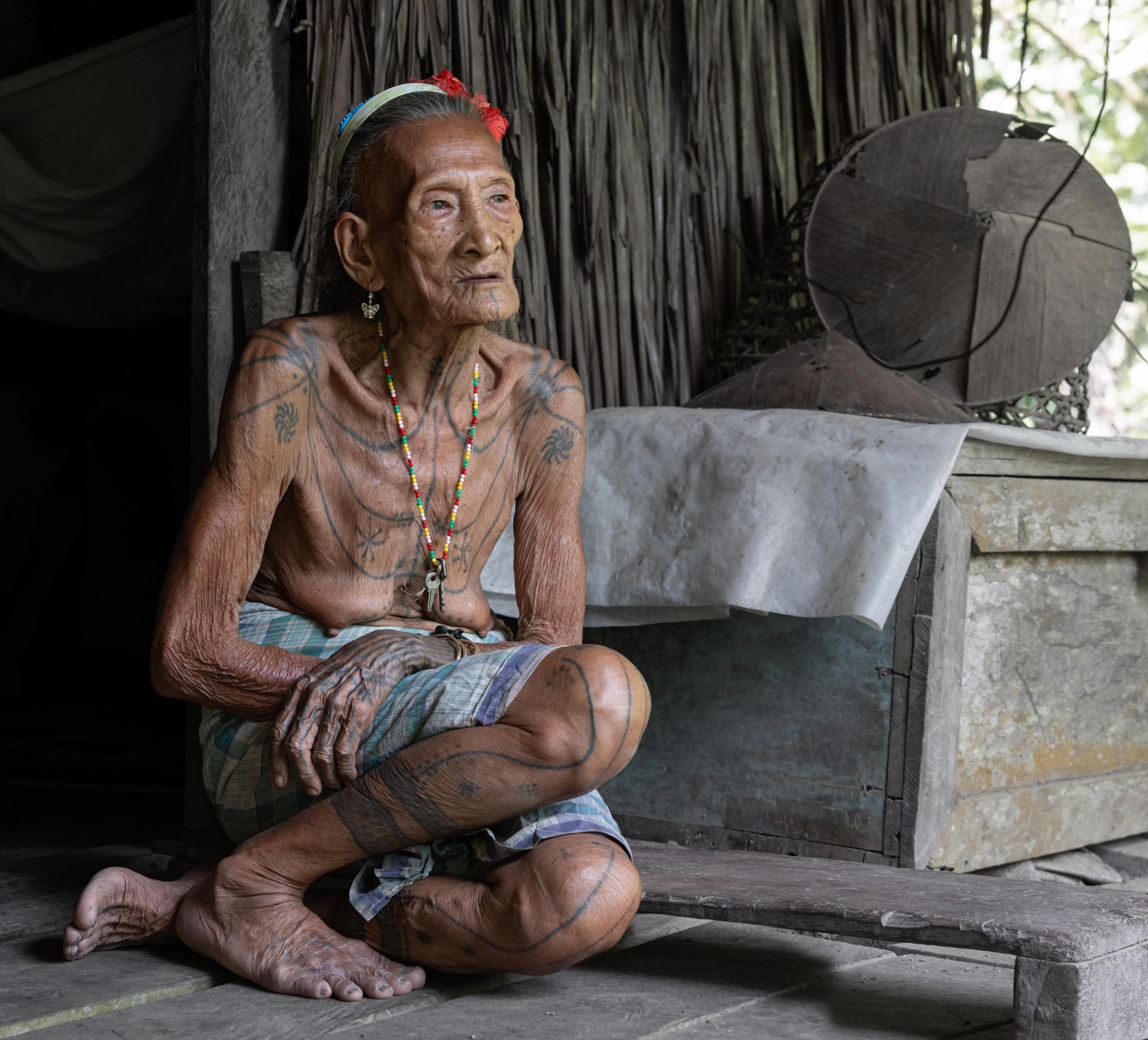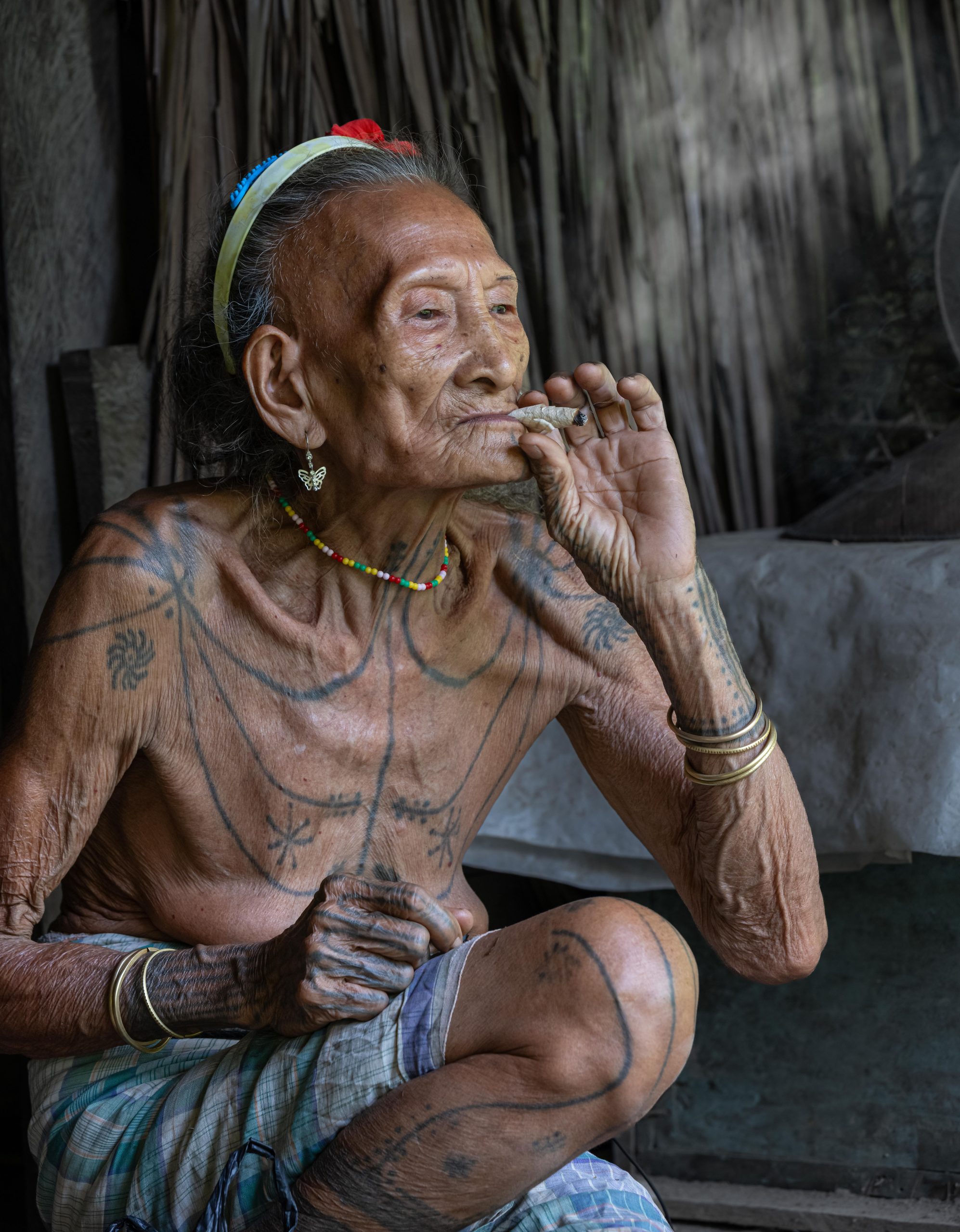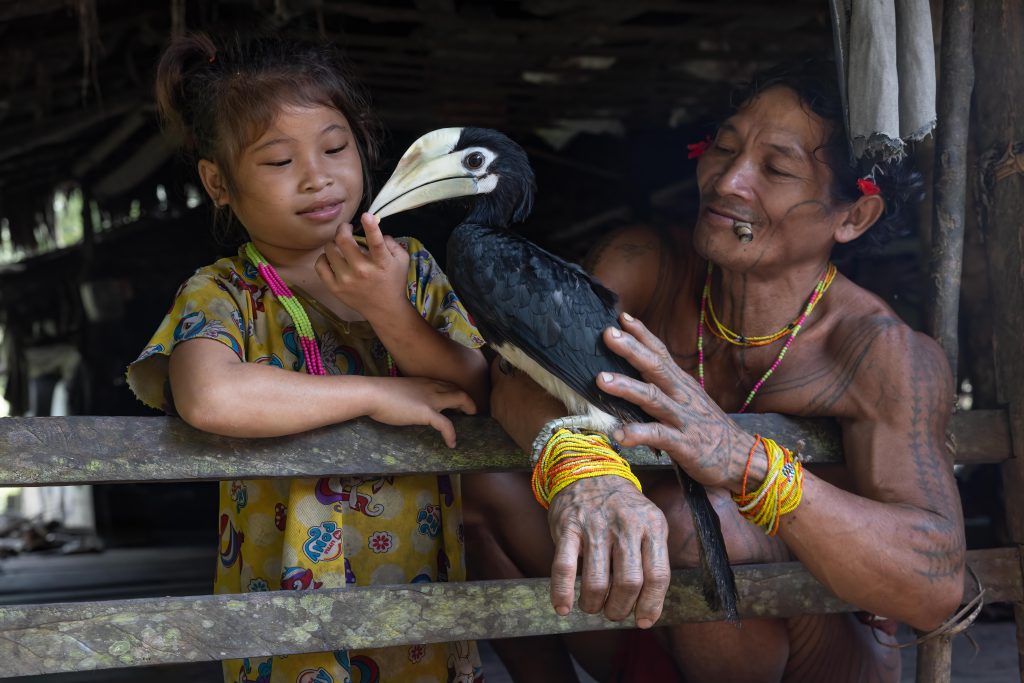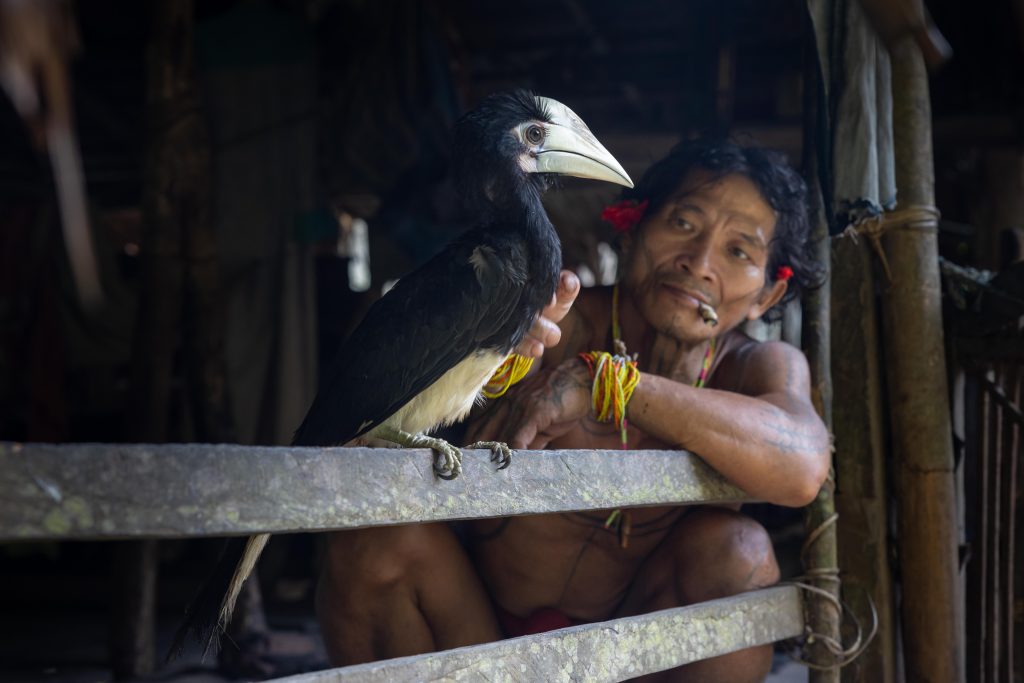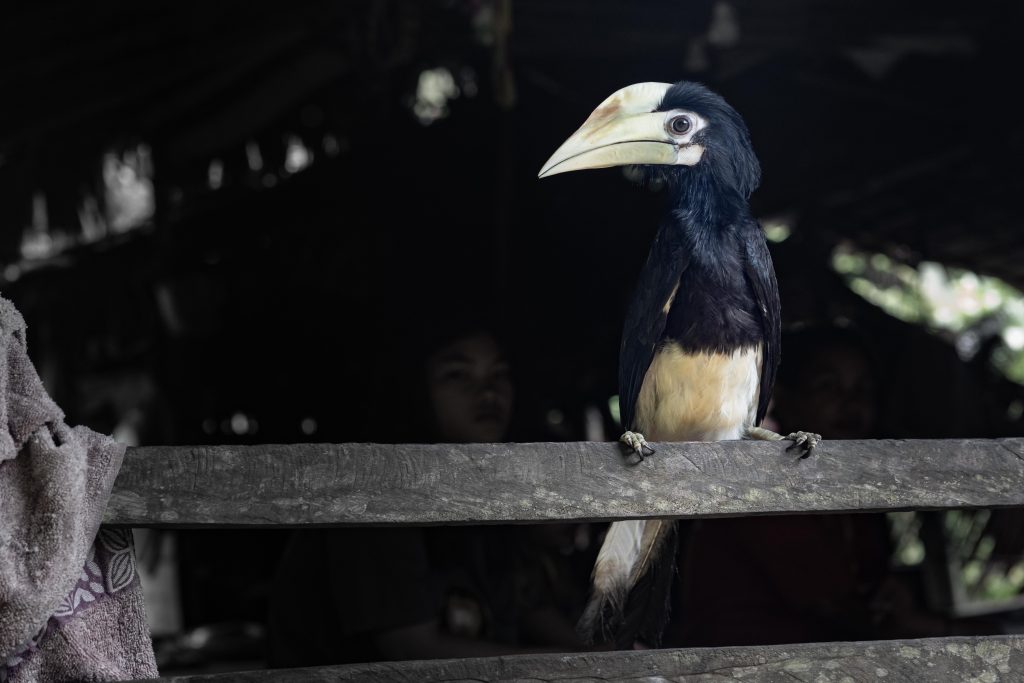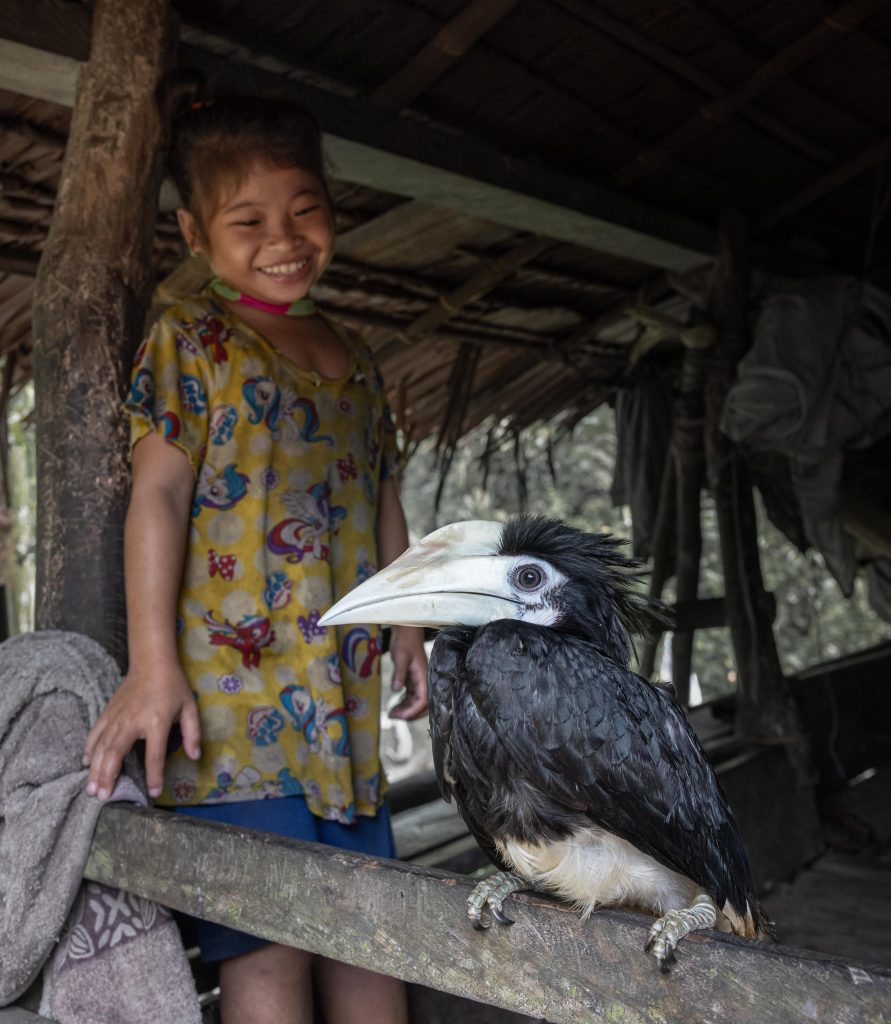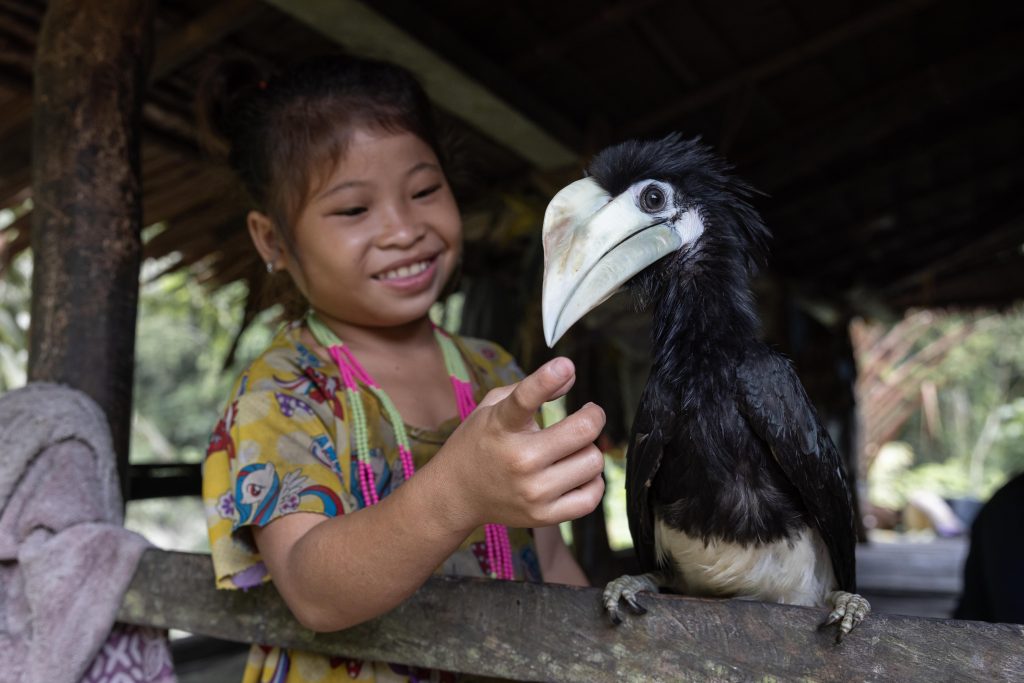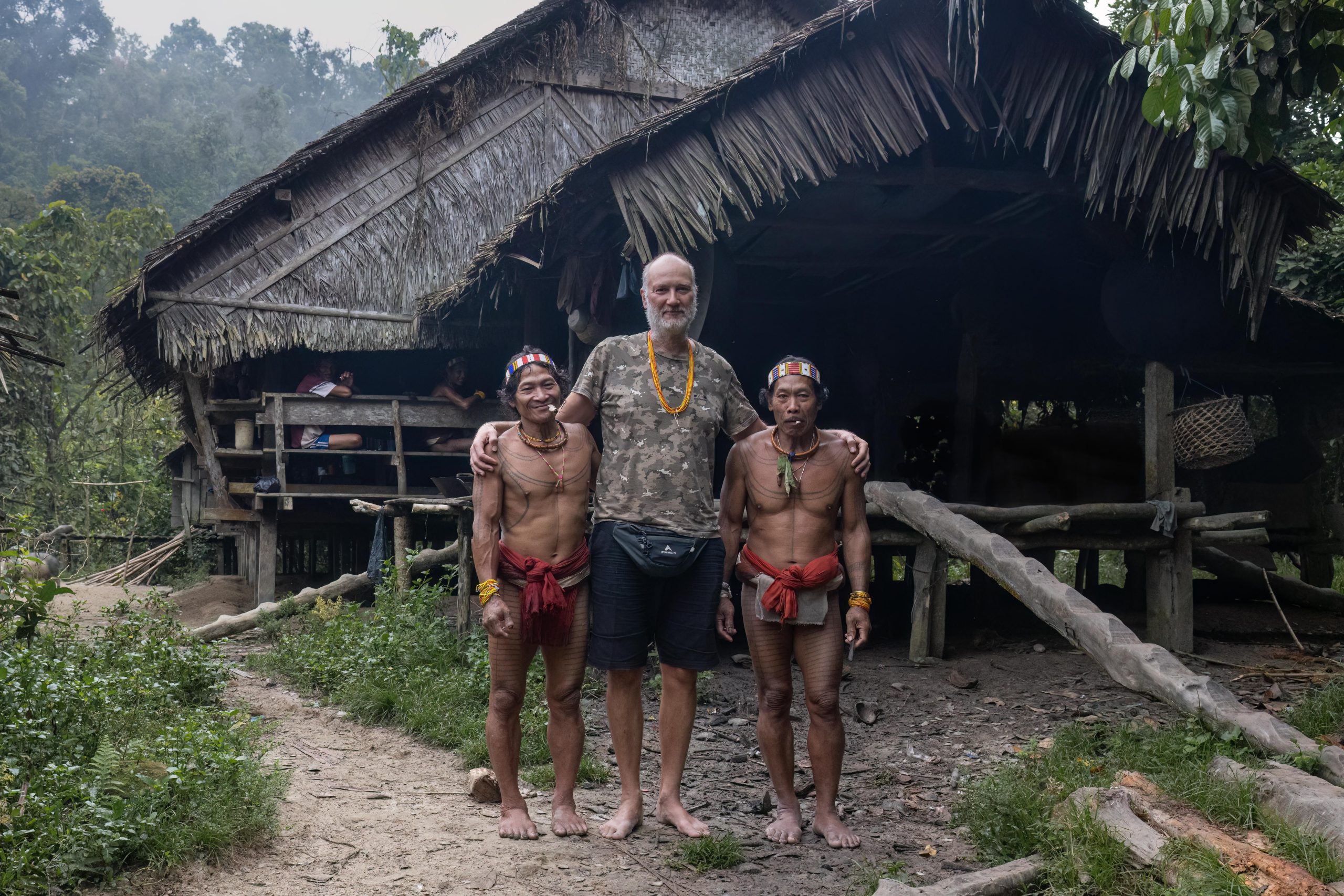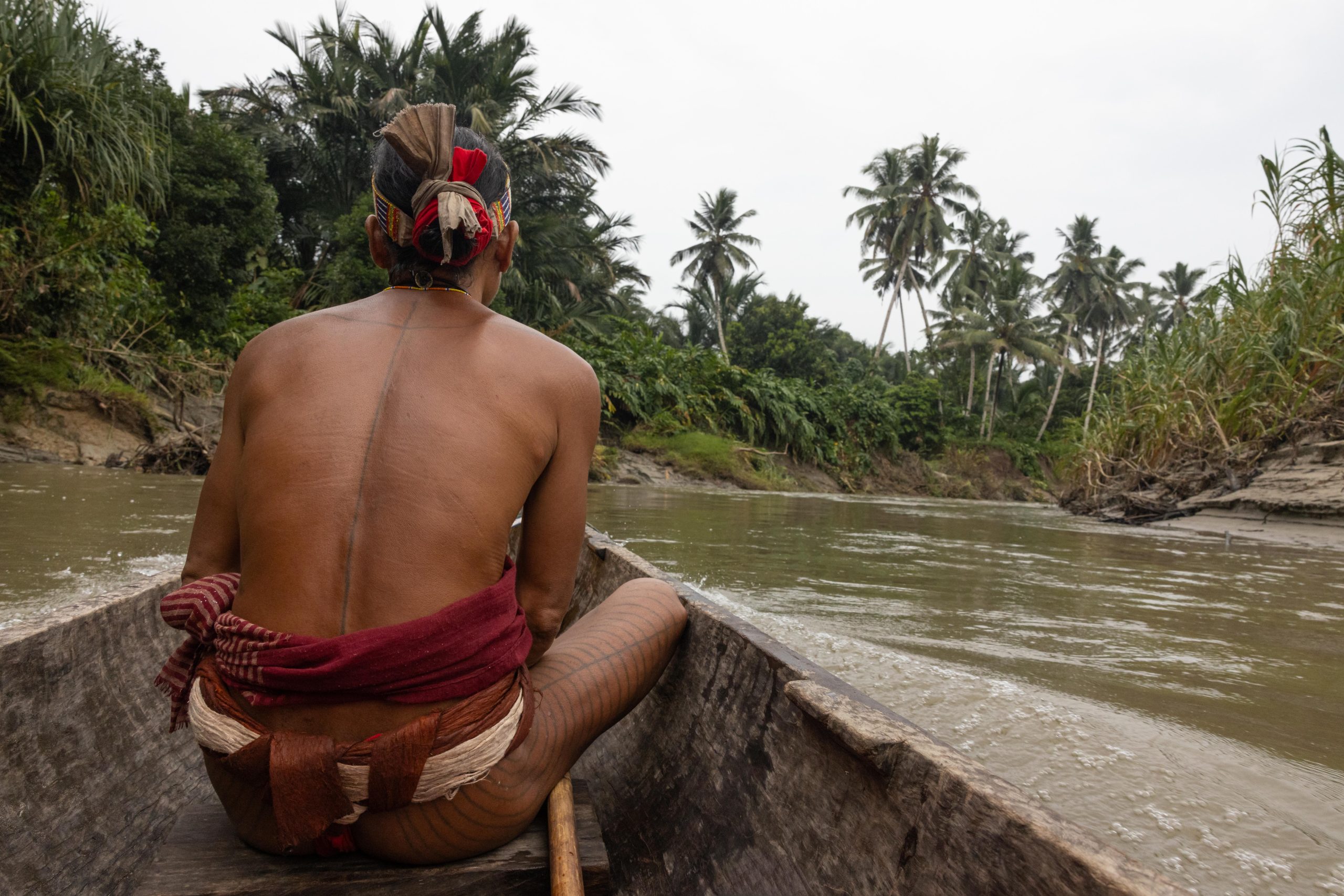The Mentawai tribe are the indigenous people of the Mentawai Islands, a small group of islands about 150 kilometers off the coast of Sumatra, in Indonesia. The Mentawai are renowned for their deep connection to nature and rich cultural traditions. Inhabiting the dense rainforests of Siberut island, a part of the tribe has preserved a way of life largely untouched by modern influences.
Known for their distinctive body art, including intricate tattoos symbolizing life, beauty and spirituality, the Mentawai people practice animism, believing in the spiritual essence of all living beings. Their traditional longhouses, or Uma, are communal spaces reflecting their emphasis on community. Despite external pressures, some of the Mentawai continue to embody resilience, fostering a harmonious relationship with their environment.
the sakuddei: introduction
The Sakuddei are one of many clans within the Mentawai tribe, residing in the remote western region of Siberut Island, in a rainforest-covered valley named after the river they call home. Among the Mentawai clans, the Sakuddei stand out for preserving their traditional communal lifestyle. In the late 1960s, Swiss anthropologist Reimar Schefold, the leading authority on the Mentawai, spent several years living with the Sakuddei. His first major work on the Mentawai, published in 1979 in Dutch and German, was titled “Speelgoed voor de zielen: kunst en cultuur van de Mentawai-eilanden” / “Spielzeug für die Seelen: Kunst und Kultur der Mentawai-Inseln.” The English translation, “Toys for the Souls: Life and Art on the Mentawai Islands,” was only published in 2018 and remains the most comprehensive book about the Mentawai people.
The origins of the Sakuddei clan trace back to the Butui River valley, home to “my” Mentawai family. The Butui River is a small tributary of the Rereiket River, the largest river in Southeast Siberut. Today, this area hosts many of the last traditional Mentawai communities, scattered throughout the rainforest along the banks of the Rereiket and its tributaries. By the mid 1940s, the growing population along the Butui River began to strain local natural resources. Land for new plantations and space to raise pigs became increasingly scarce. In response, as is customary among the Mentawai, who are often described as “semi-nomadic”, some members of the clan decided to move to a new area to establish a new community.
During this time, three young brothers and their families ventured to the island’s southwest, a largely uninhabited region. After crossing the hills forming Siberut’s backbone, they settled along the Sakuddei river and named their newly founded clan after it. Today, one of the original members of this migration is still alive: Bali, now in her 80s, is one of the oldest living Mentawai, if not the oldest. More about her will come later…
I first visited the Sakuddei in 1995, accompanied by the late Domino, a close Mentawai friend whom I had known since my first visit to Siberut in 1990. Following that initial trip, I spent considerable time with a Mentawai family in Butui. As the Sakuddei trace their roots to Butui, clan members often visited, which is how I came to know them. In 1995, I decided to journey to the Sakuddei myself; a challenging trek on foot through the island’s rainforest-covered hills, followed by a canoe ride downstream along one of the Sakuddei River’s tributaries, which eventually brought me to the clan’s main Uma.
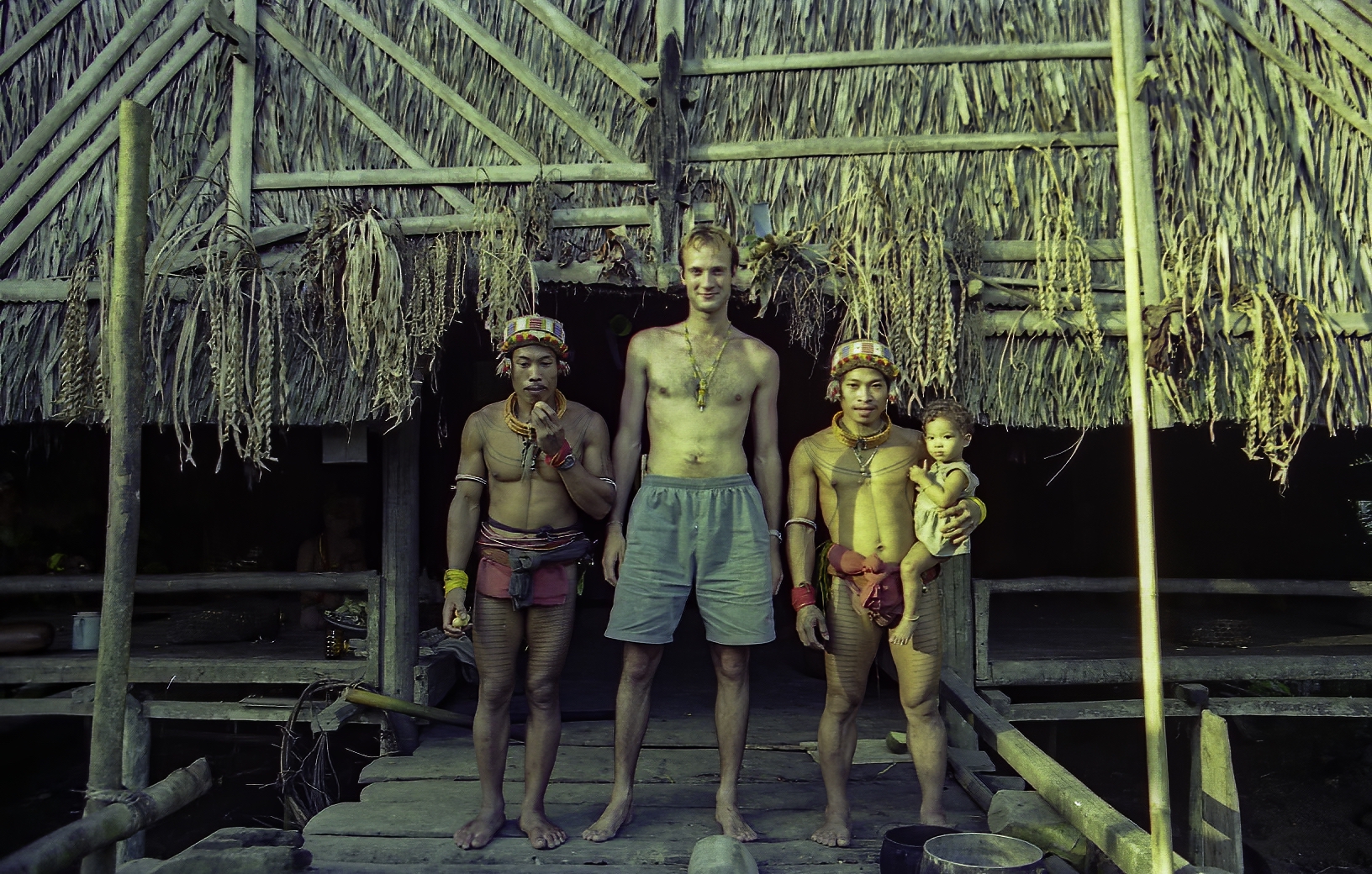
the journey
Nowadays the Sakuddei can be reached by boat as well. I prefer the journey on foot though, as the rain forest on Siberut island is beautiful. But it’s a tough journey, and as we had limited time and a lot of film equipment we decided to charter a boat.
We departed from Muara Siberut, located on the island’s southeast coast, early in the morning to ensure we reached the west coast during high tide, the optimal time for a beach landing. The journey to Sagulubbek Beach on Siberut’s southwest coast took approximately four hours. Thankfully, the ocean remained relatively calm throughout the trip. The waters can become dangerously rough at times, making beach landings particularly hazardous…
Foreigners are a rare sight in this part of the island, though locals frequently use the beach near Sagulubbek to load forest products like coconuts and rattan onto boats, which are typically shipped directly to Padang. During certain seasons, local fishermen also catch significant amounts of fish and lobster along the shoreline, which are likewise transported to Sumatra’s mainland.
Upon landing on the beach, several locals appeared, along with a motorbike “taxi” for transporting luggage. We arranged for our luggage and equipment to be taken to the main village, located just a kilometer inland. From there, we planned to charter a large motorized canoe for the journey further inland.
Finding a large canoe took quite some time, as most boatsmen were working. So we had our lunch first and drank tea with some of the locals, before our boatsman finally showed up.
The journey upriver to the Sakuddei clan’s Uma typically takes around two hours, depending on water levels and currents. On the day we traveled upstream, the Sakuddei River was relatively high due to several days of rain. However, as the water level had begun to recede, the current was no longer particularly strong. This allowed our canoe to travel at full speed, making for a smooth and relatively quick journey.
As we traveled upriver, we occasionally passed small traditional houses nestled along the riverbanks. The river serves as the primary thoroughfare connecting scattered homes, plantations, and field huts. Most Mentawai still rely on traditional canoes for rowing upstream or downstream, as only a few can afford small outboard engines. Regularly, the Mentawai make their way downstream to Sagulubbek, transporting forest products to sell and purchasing basic necessities in return.
As we journeyed upriver, the initially flat landscape transformed into rolling hills. The expansive coconut and sago plantations gave way to increasingly dense rainforest. Along the way, I spotted a few kingfishers and even a couple of hornbills; birds that have become rare sights in eastern Siberut.
We passed the last small social village and entered the tribal lands of the Sakuddei. A familiar sense of belonging came over me: it felt like coming home. The scenery was just as I remembered it from 30 years ago. Another 10 minutes upriver brought us to the main Uma of the Sakuddei clan.
About 10 days earlier, we had managed to inform the clan of our intention to visit, though we couldn’t specify exactly when we would arrive. Remarkably, as if anticipating the precise moment, Aman Raiba, the owner of the Uma, arrived at the same time as us, paddling his canoe from further upriver. This wasn’t the first time I had experienced such uncanny timing. In the early 1990s, my late Mentawai father often knew exactly when I would arrive at his Uma, even when it was impossible to notify him in advance…!
We were warmly welcomed and quickly settled in. By late afternoon, some of the adult community members began returning from their scattered plantations and field huts, where they tended to their pigs. Most of the children were already home, though they remained shy at first and kept their distance.
After dinner, everyone in the Uma gathered around us to hear about our visit and plans for the coming days. We explained that we were working on a documentary about the Mentawai, and wanted to include the Sakuddei clan and the Uma, conduct some interviews and document wood carving traditions. The Sakuddei were once renowned for their wood carving skills, and Aman Jagaumanai kindly agreed to create a carving for us!
After a long day, it was finally time to rest. Following Mentawai custom, the women and young children slept in the back of the house, the men and young boys in the middle section, and we, as guests, stayed in the front section of the Uma. Our sleeping arrangements were simple yet familiar: a thin rattan mat beneath us, and a mosquito net overhead.
Here some of the members of the community:
The Uma
A Mentawai Uma is a traditional communal longhouse, and serves not only as a residence, but also as a cultural and spiritual center for the clan. An Uma is typically located in a forested area, close to a river or other natural resources, reflecting the Mentawai people’s deep harmony with their environment. It is elevated on stilts to protect against flooding, pests, and wild animals. Inside the Uma the space is open-plan, allowing for communal living and flexibility. It is also a sacred space where clan rituals, such as initiation rites, healing ceremonies, and animal sacrifices, take place. The Uma serves as a hub for social gatherings, storytelling and decision-making, but is also seen as a connection to the natural environment as well as ancestral spirits. The Uma is central to the Mentawai people’s animist beliefs.
